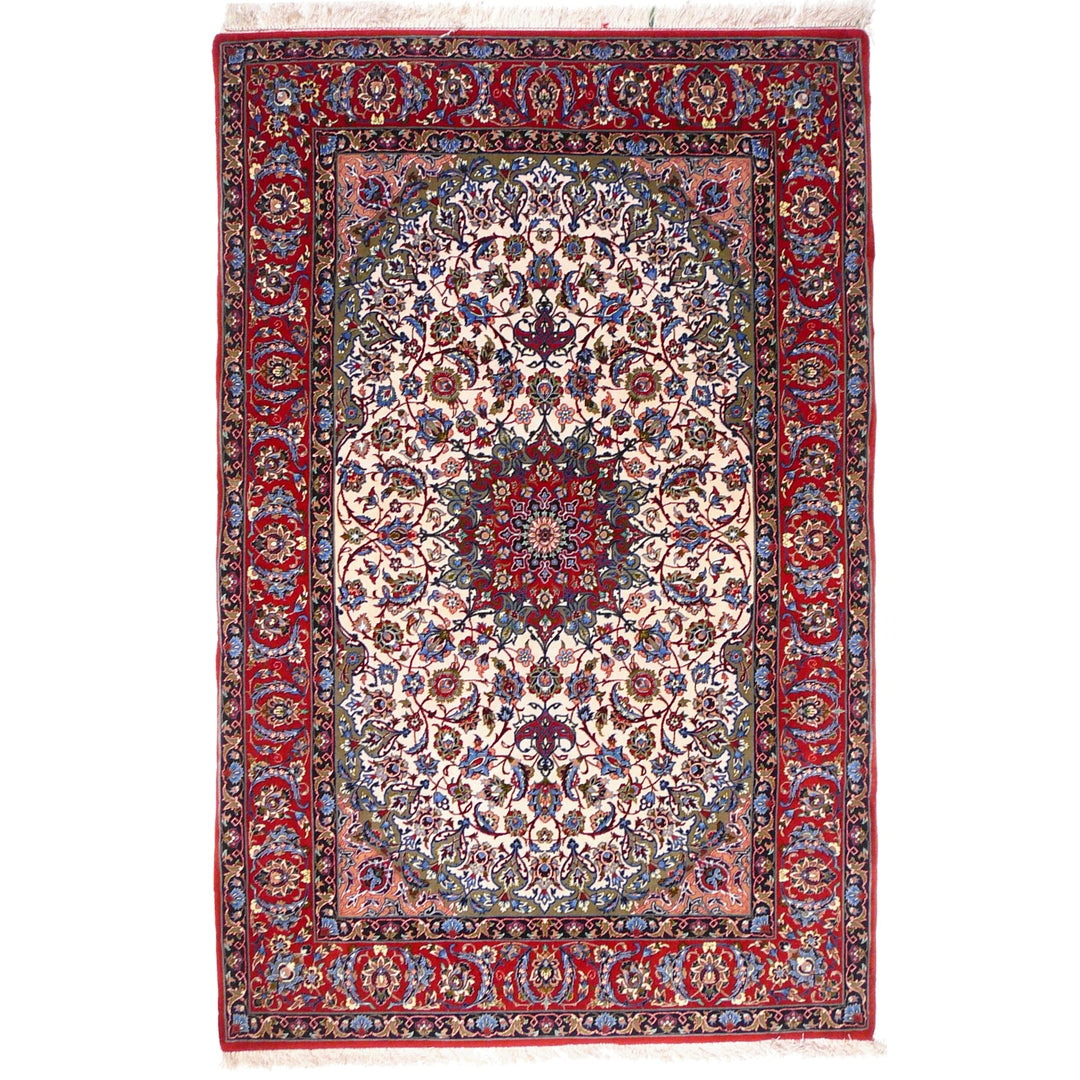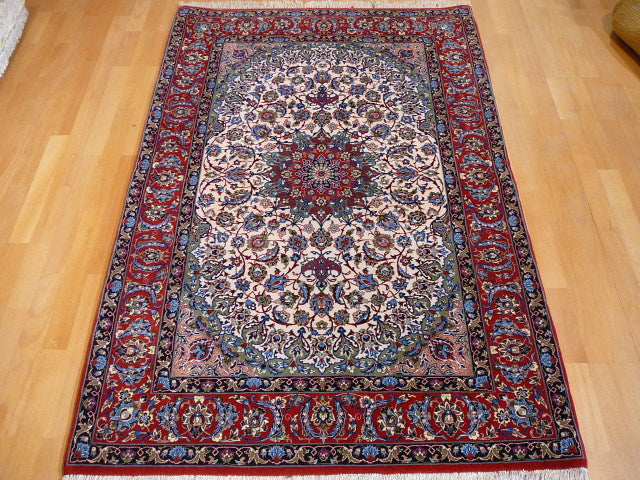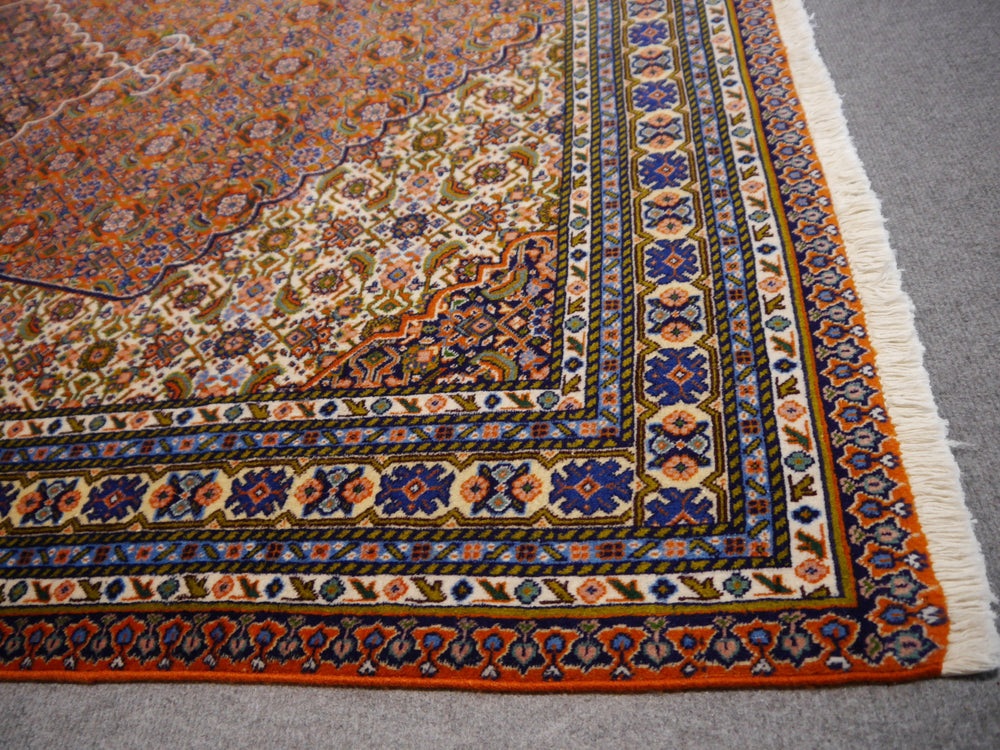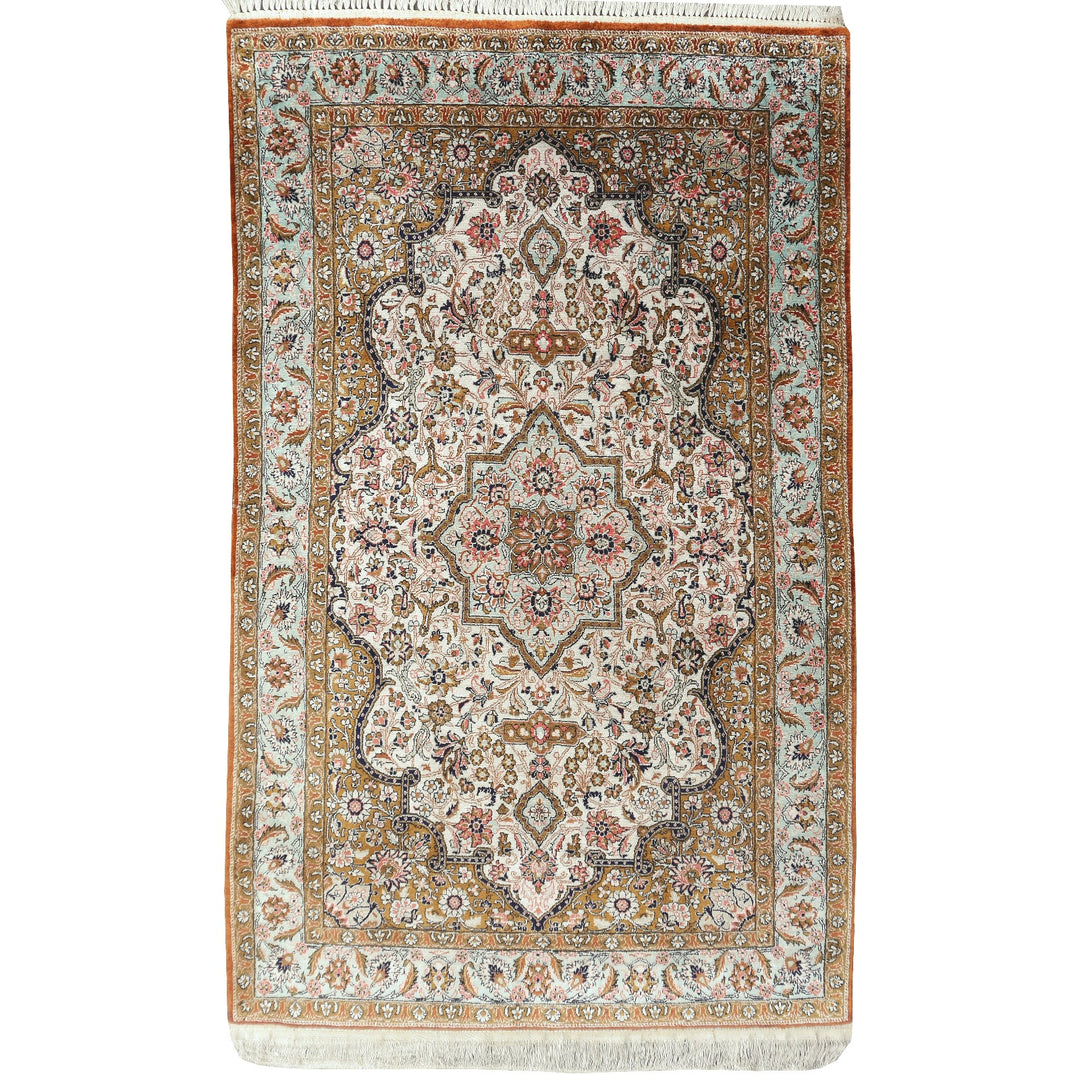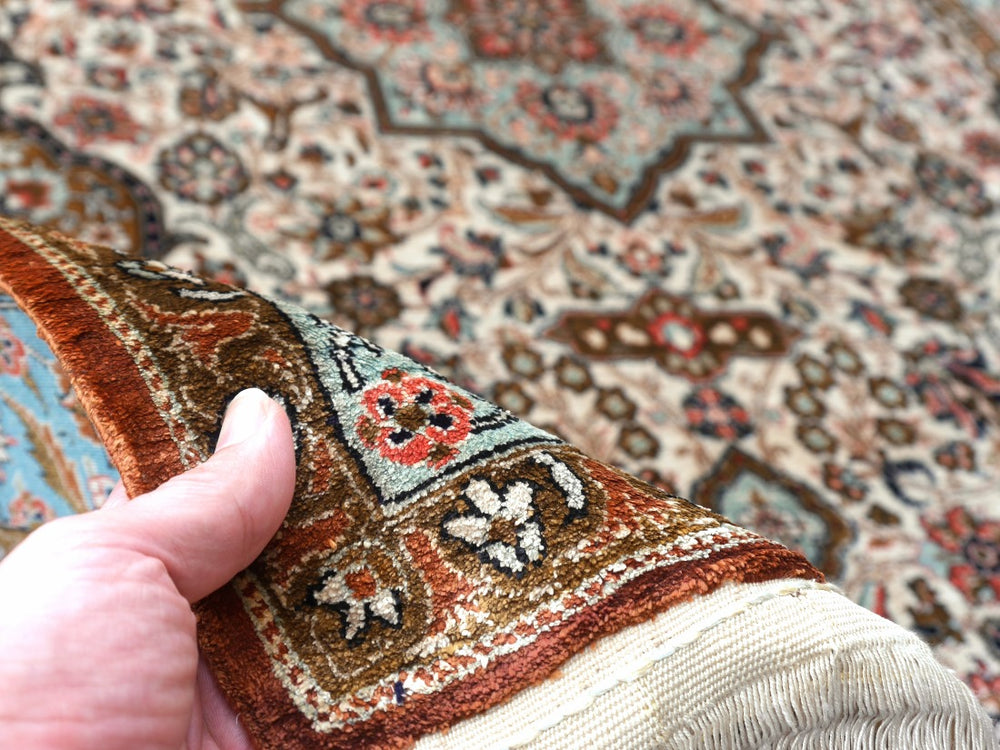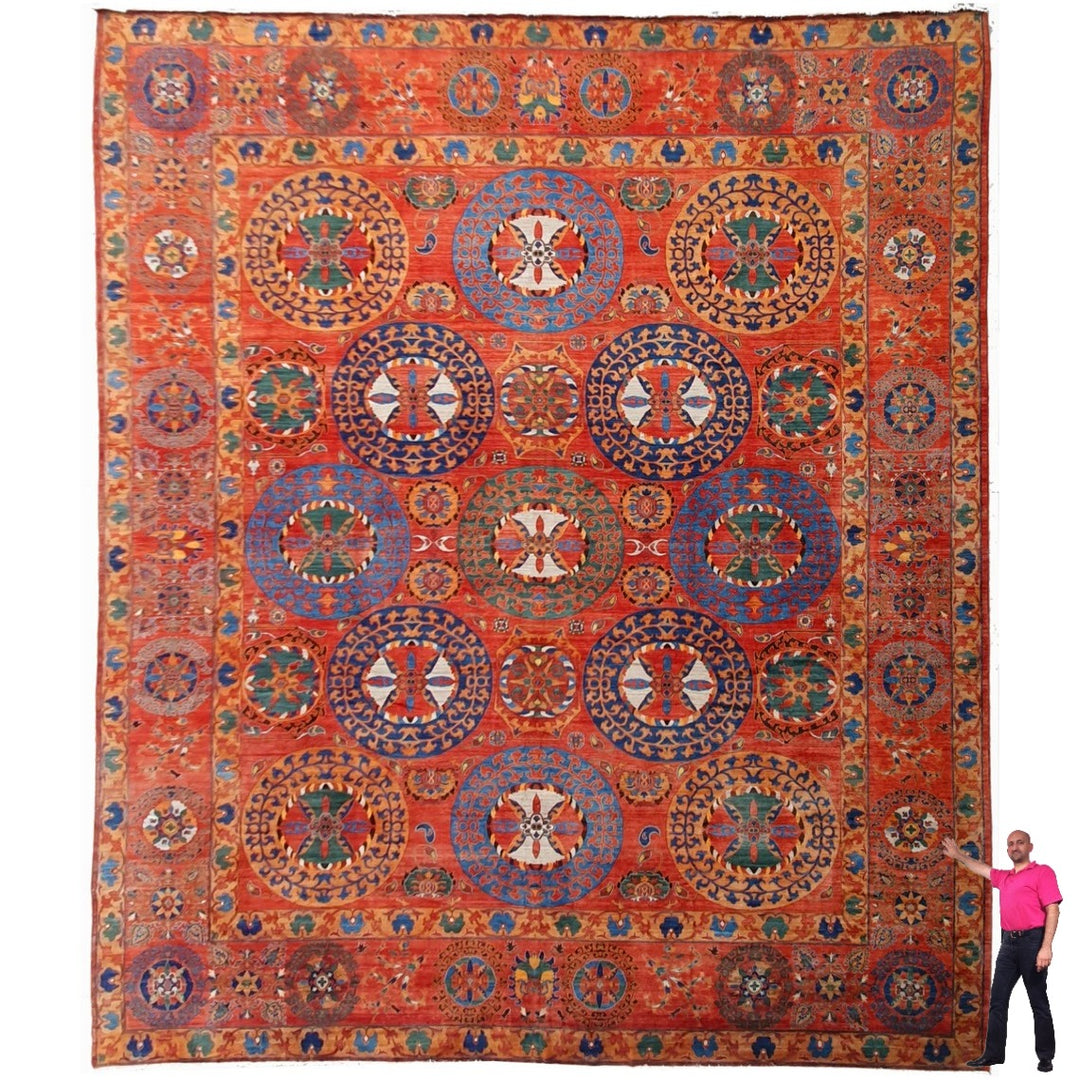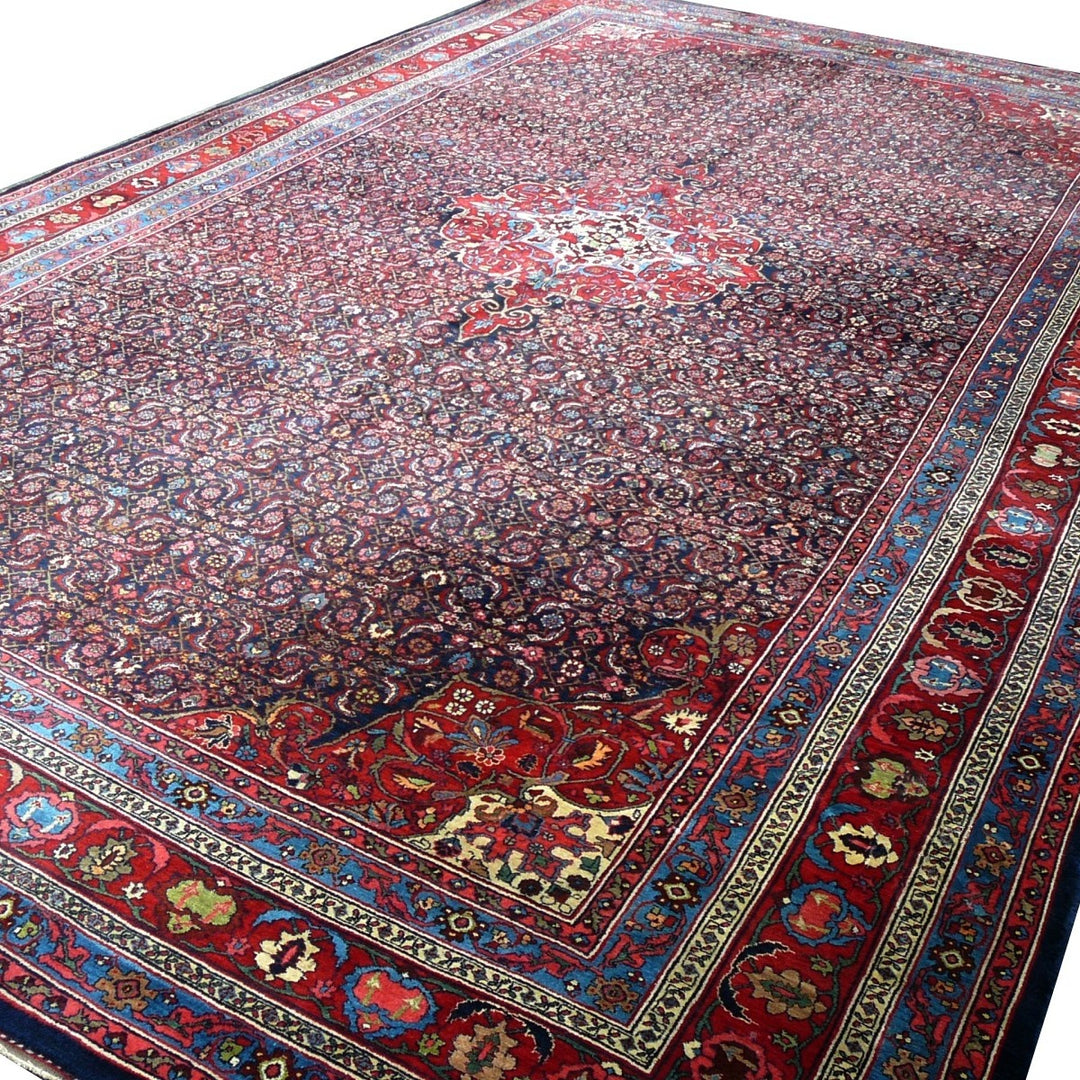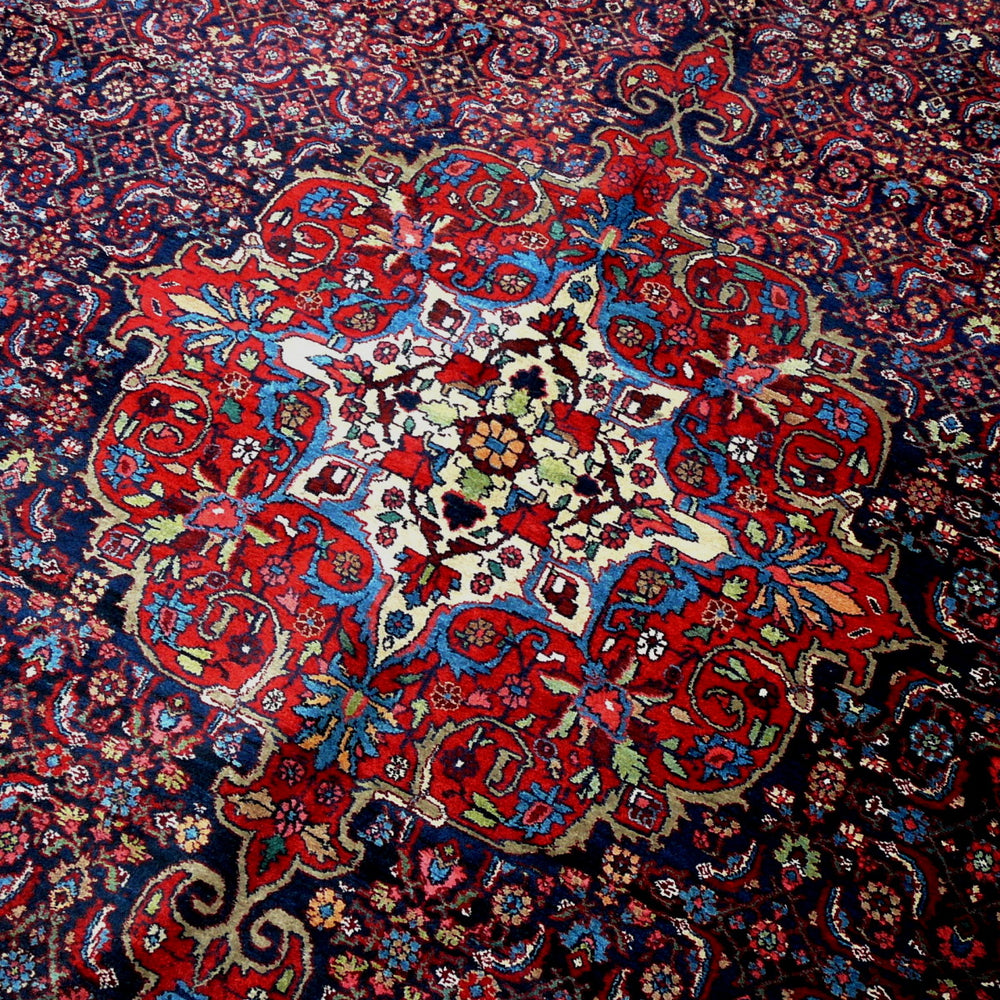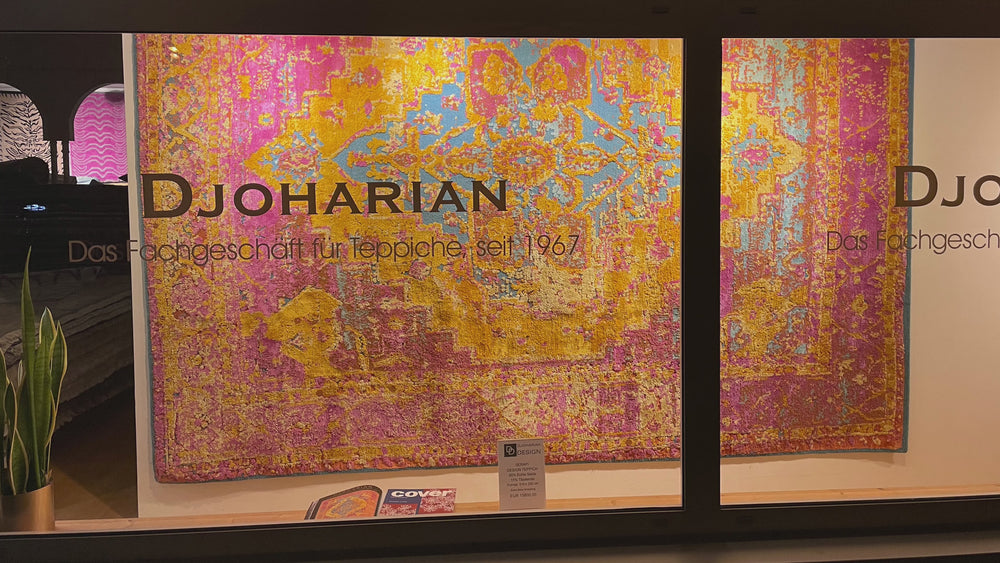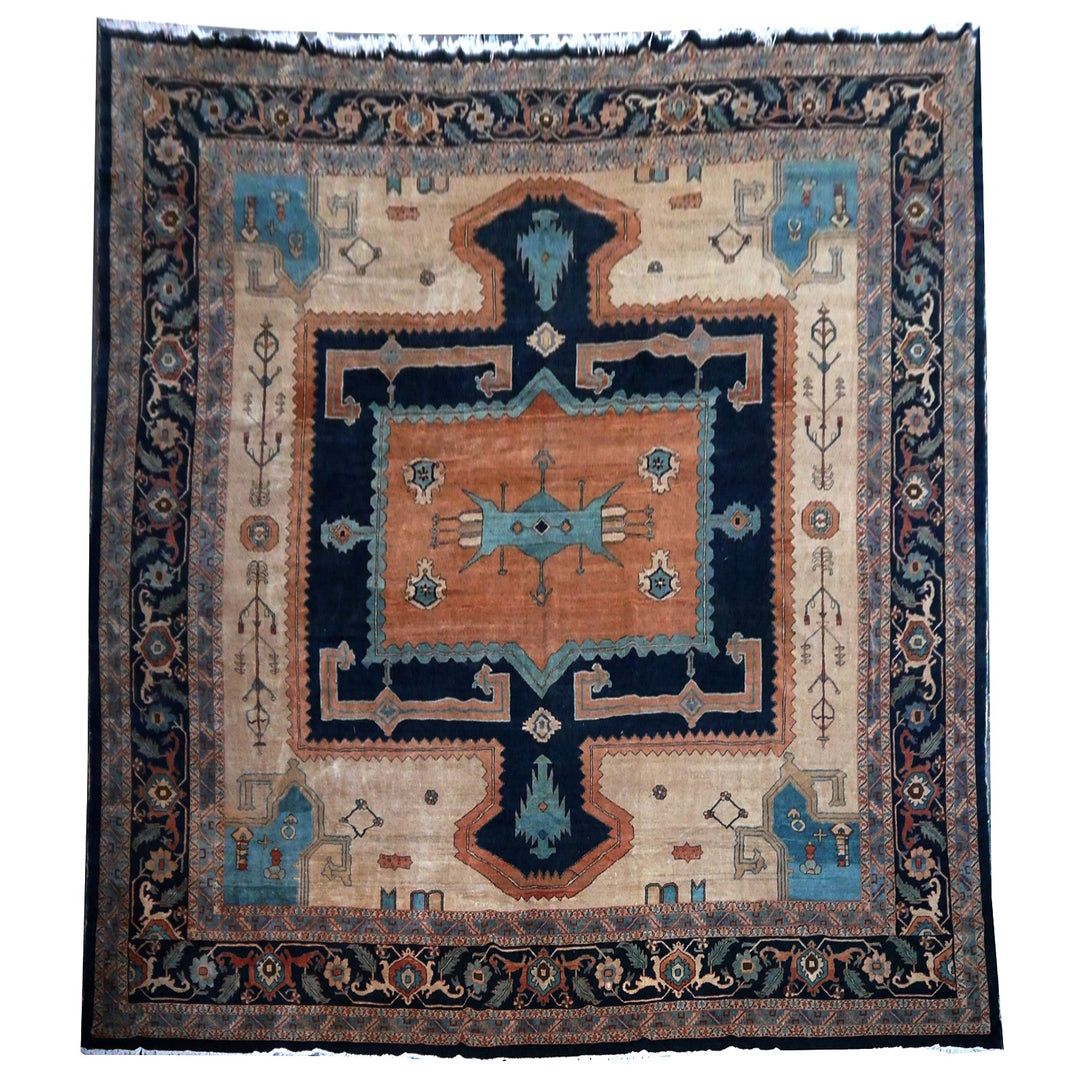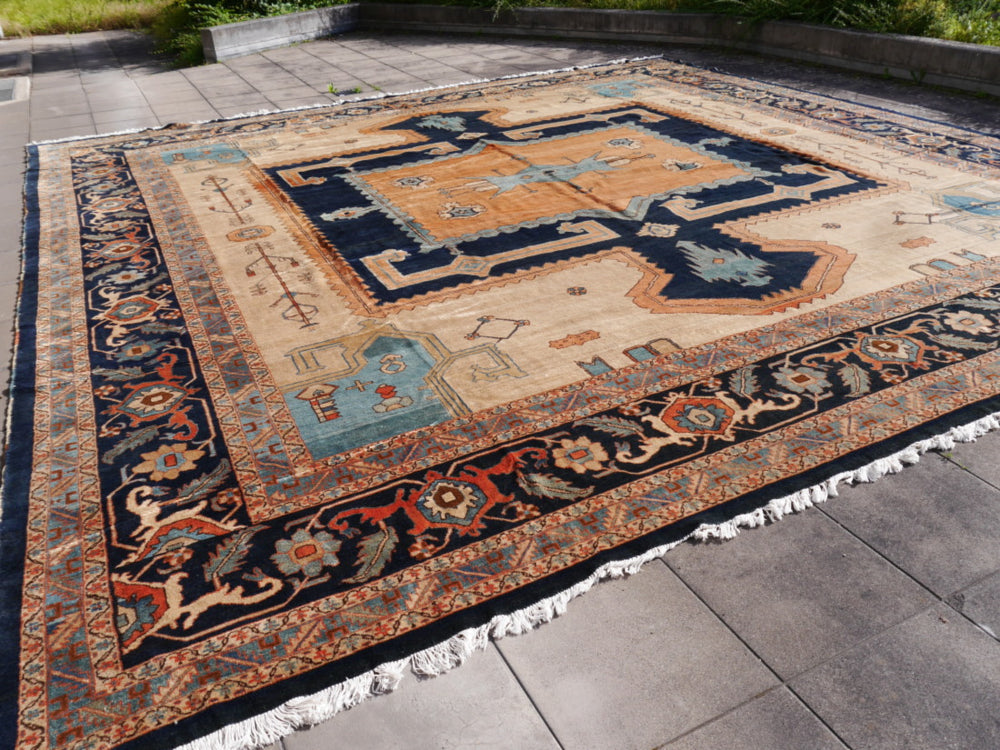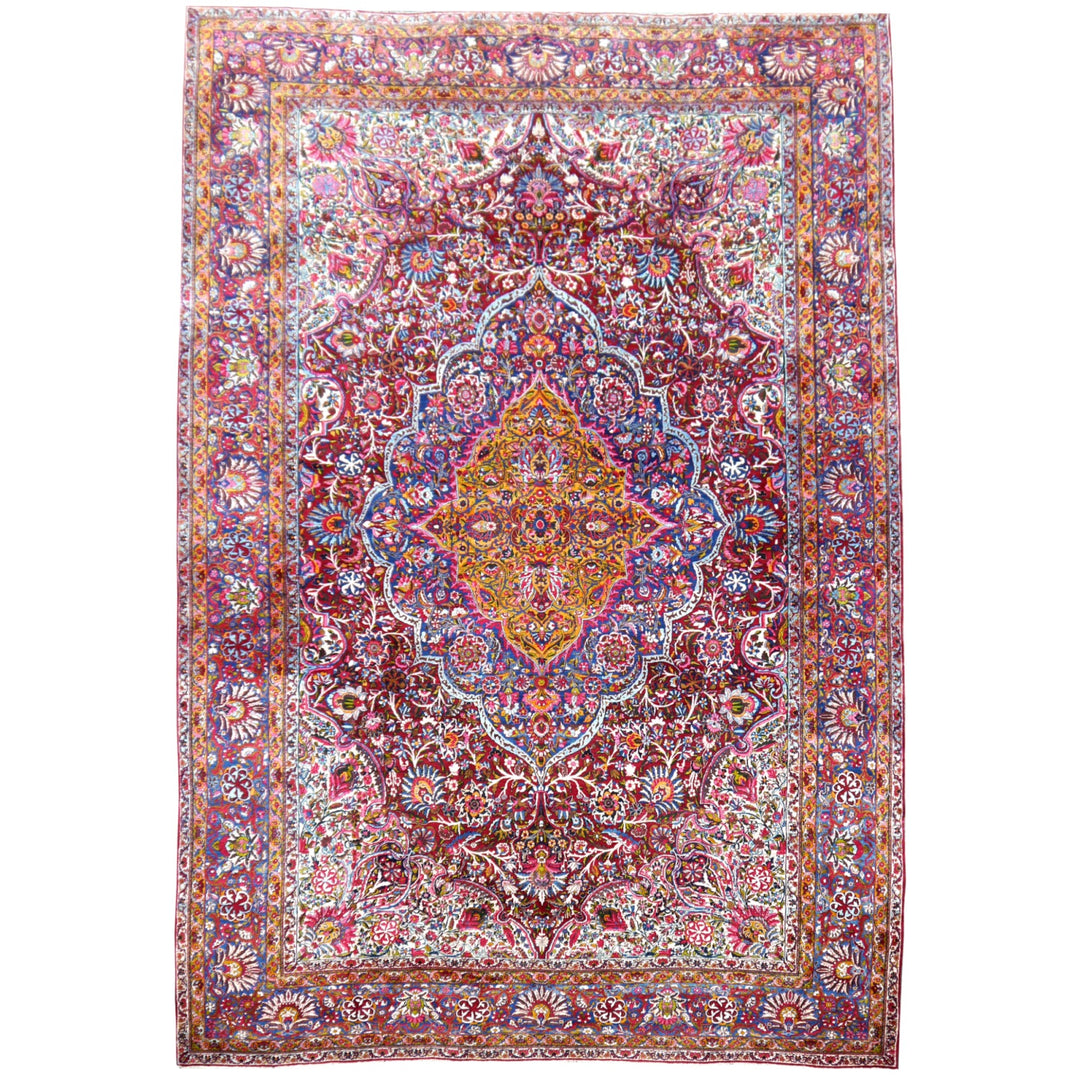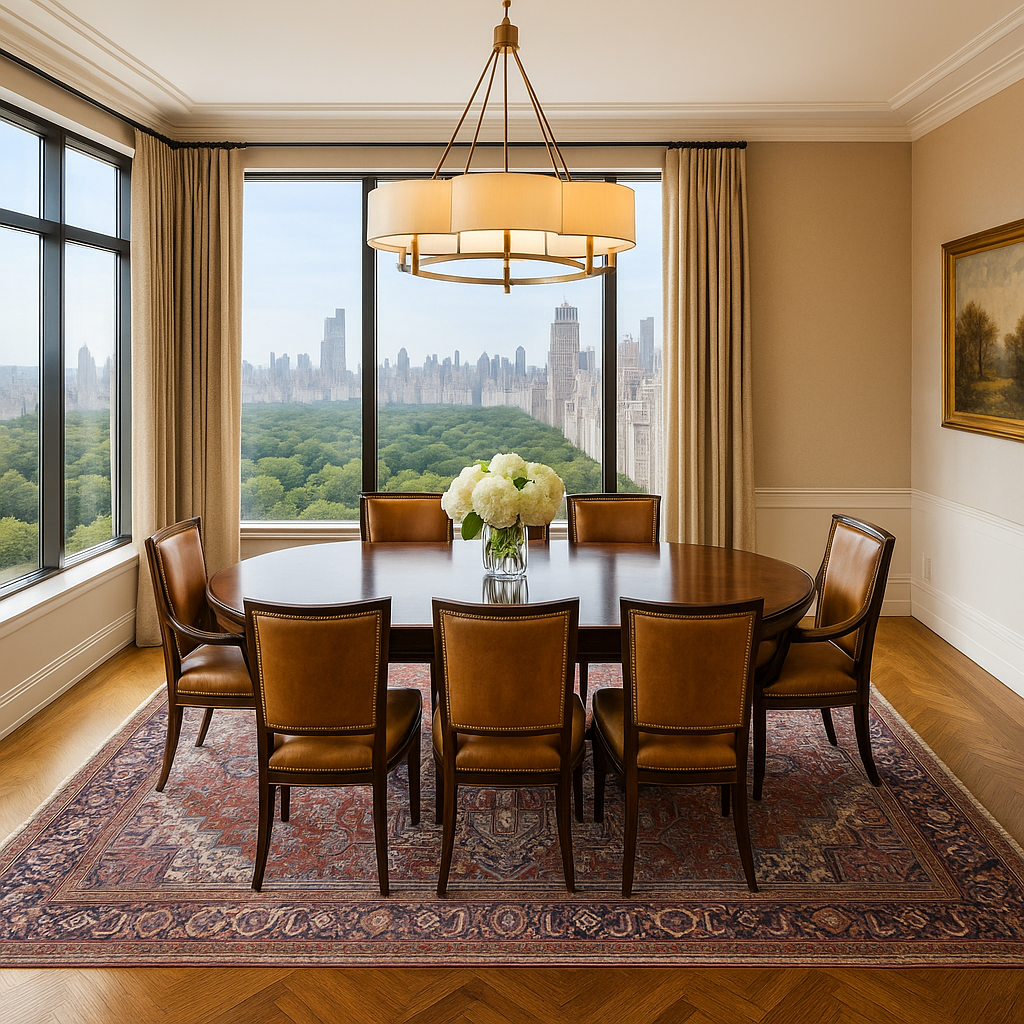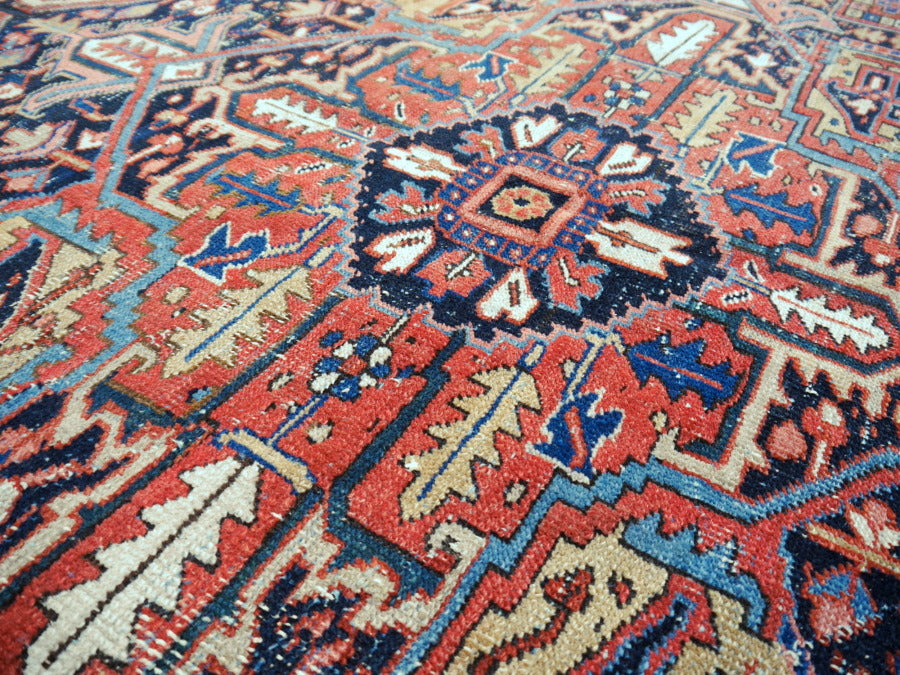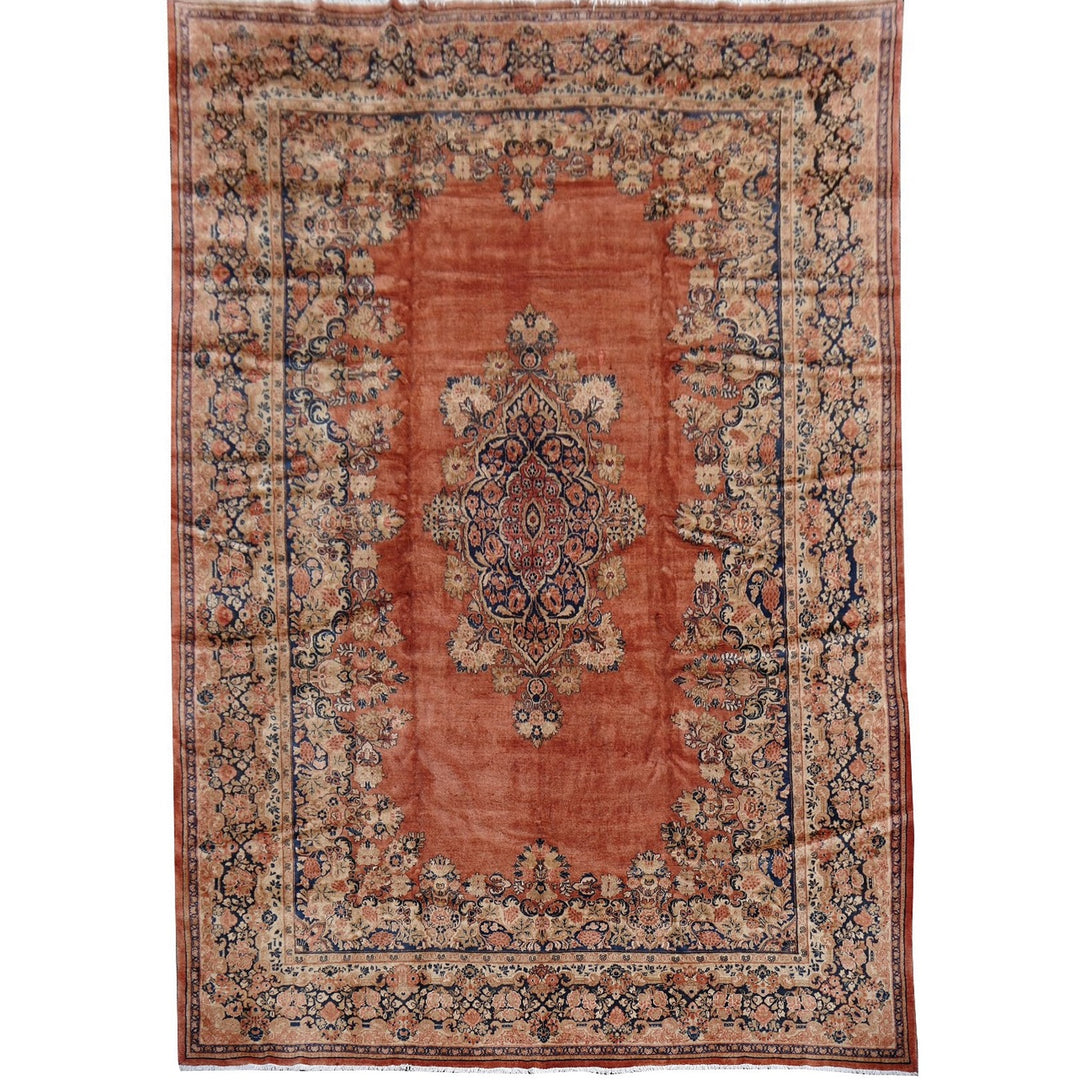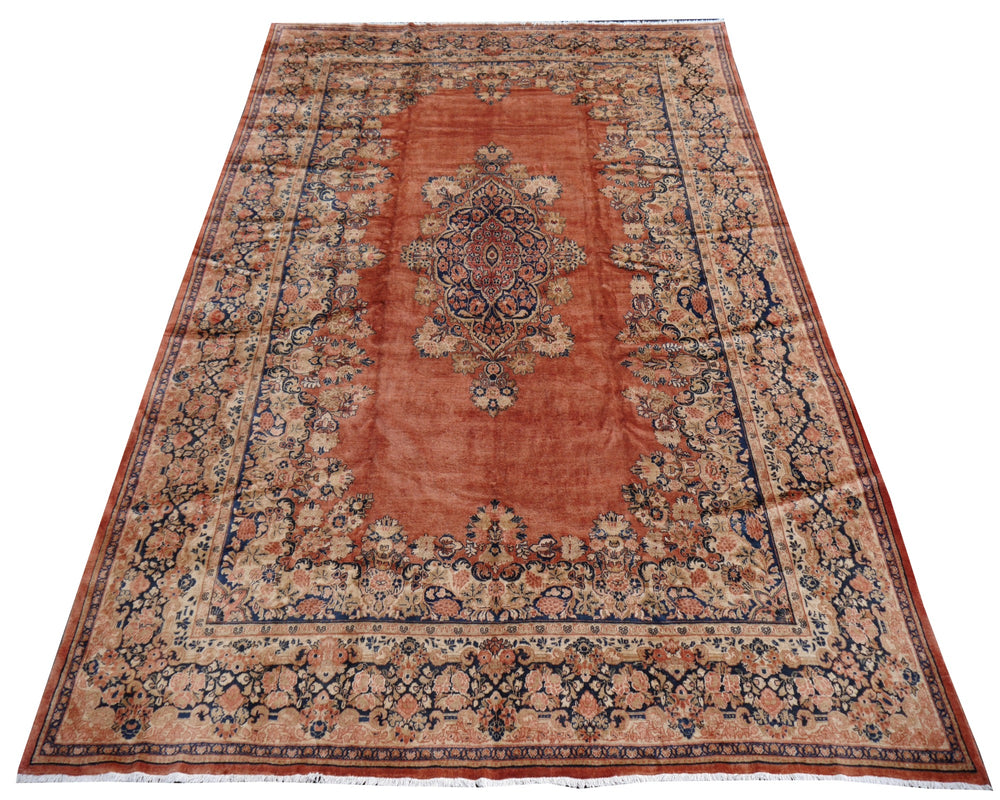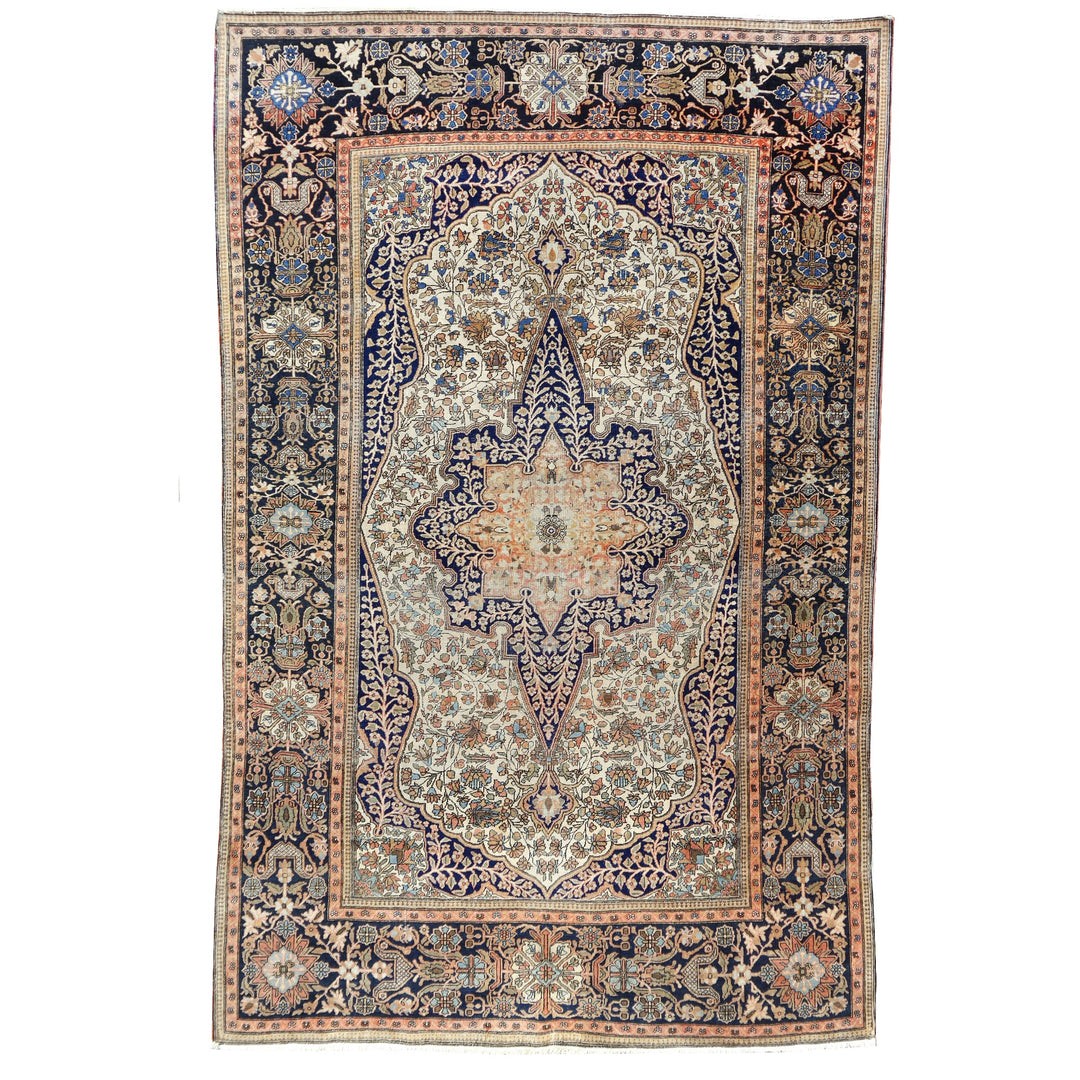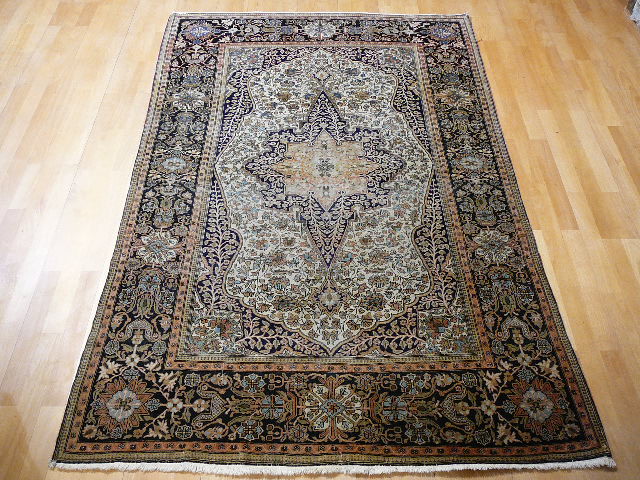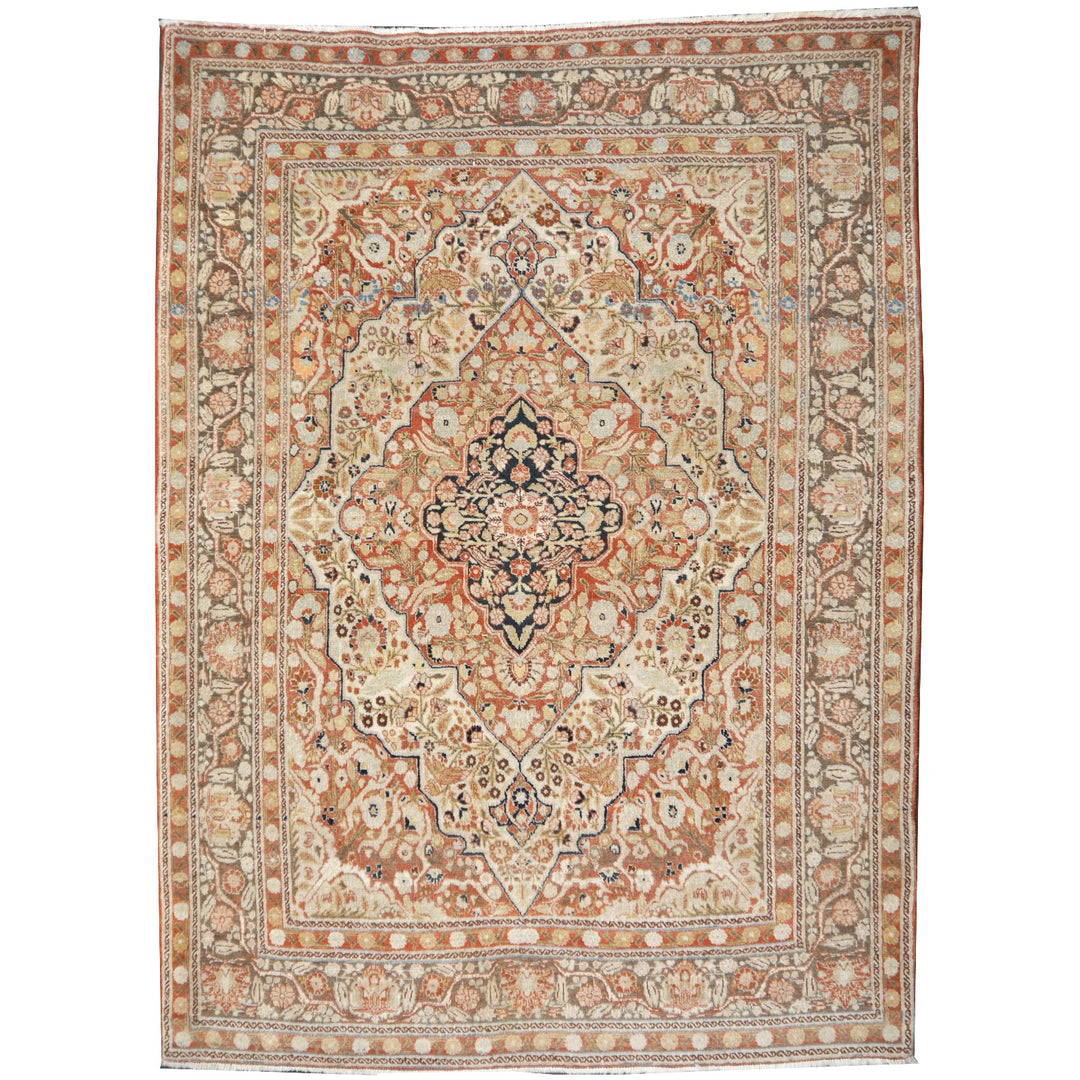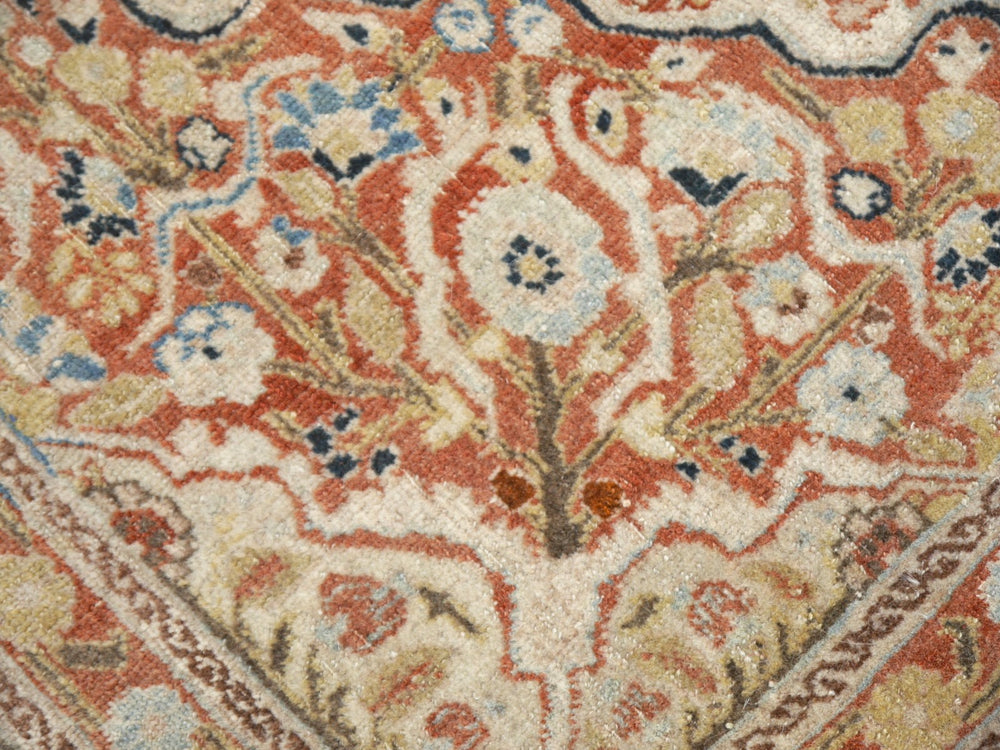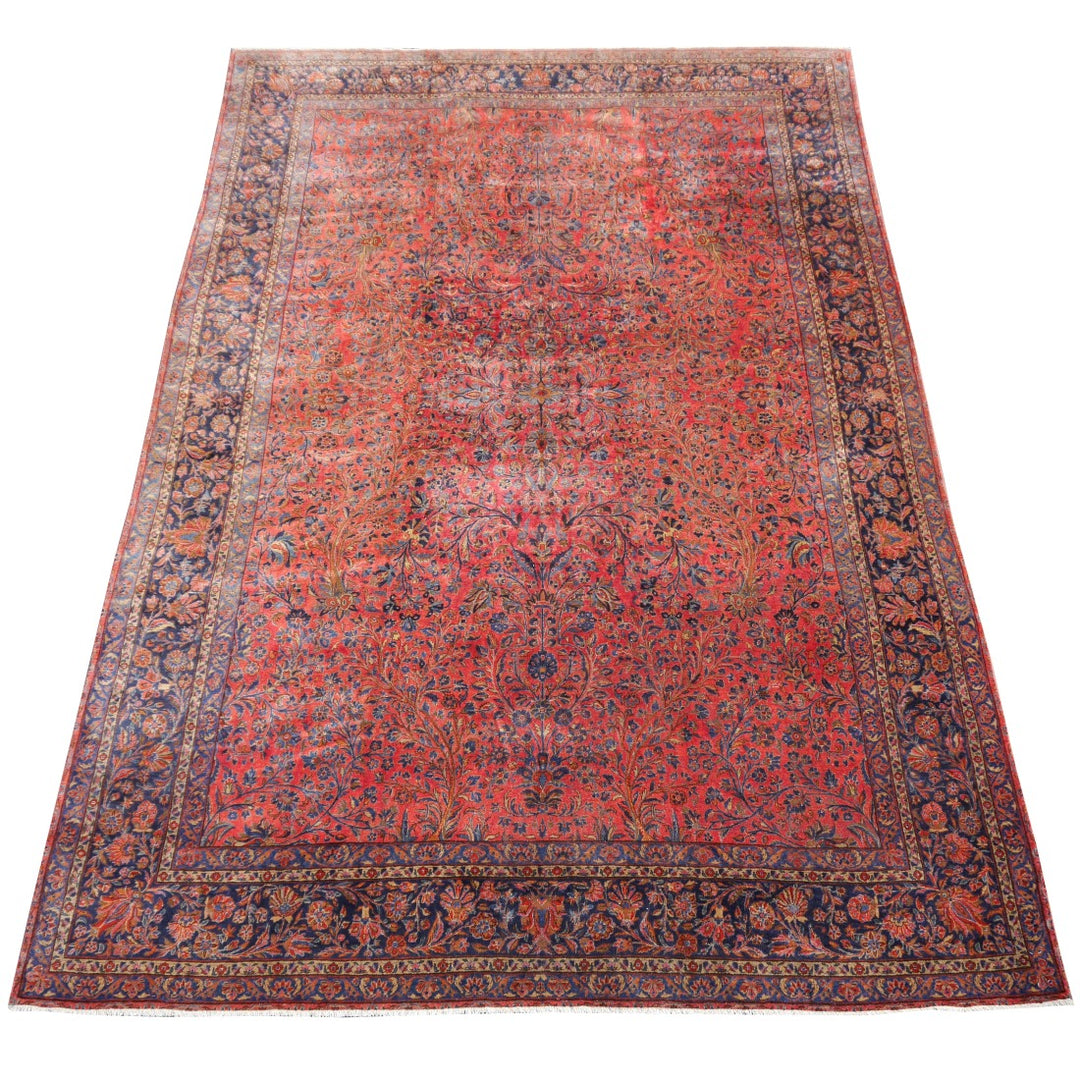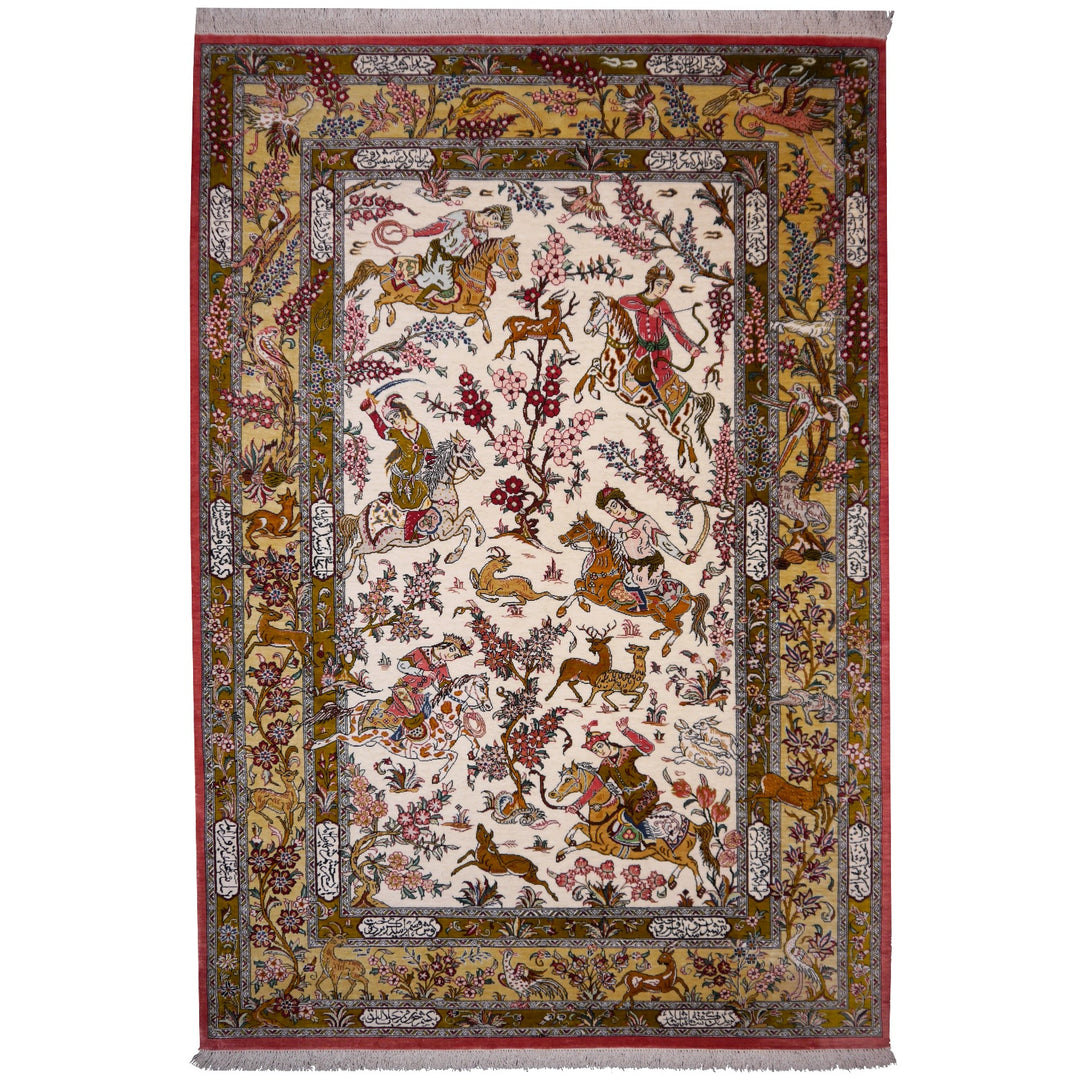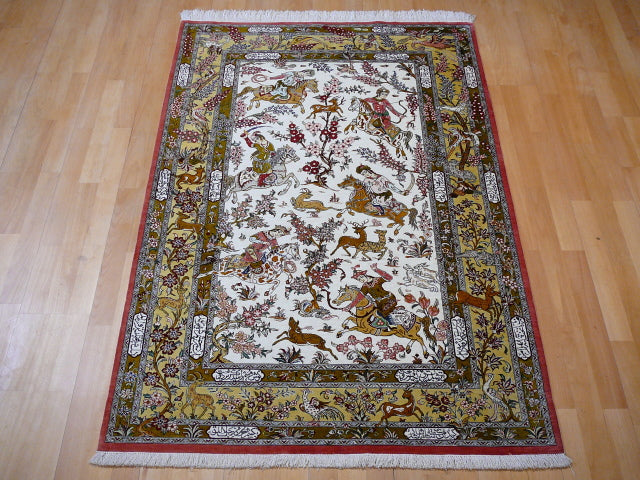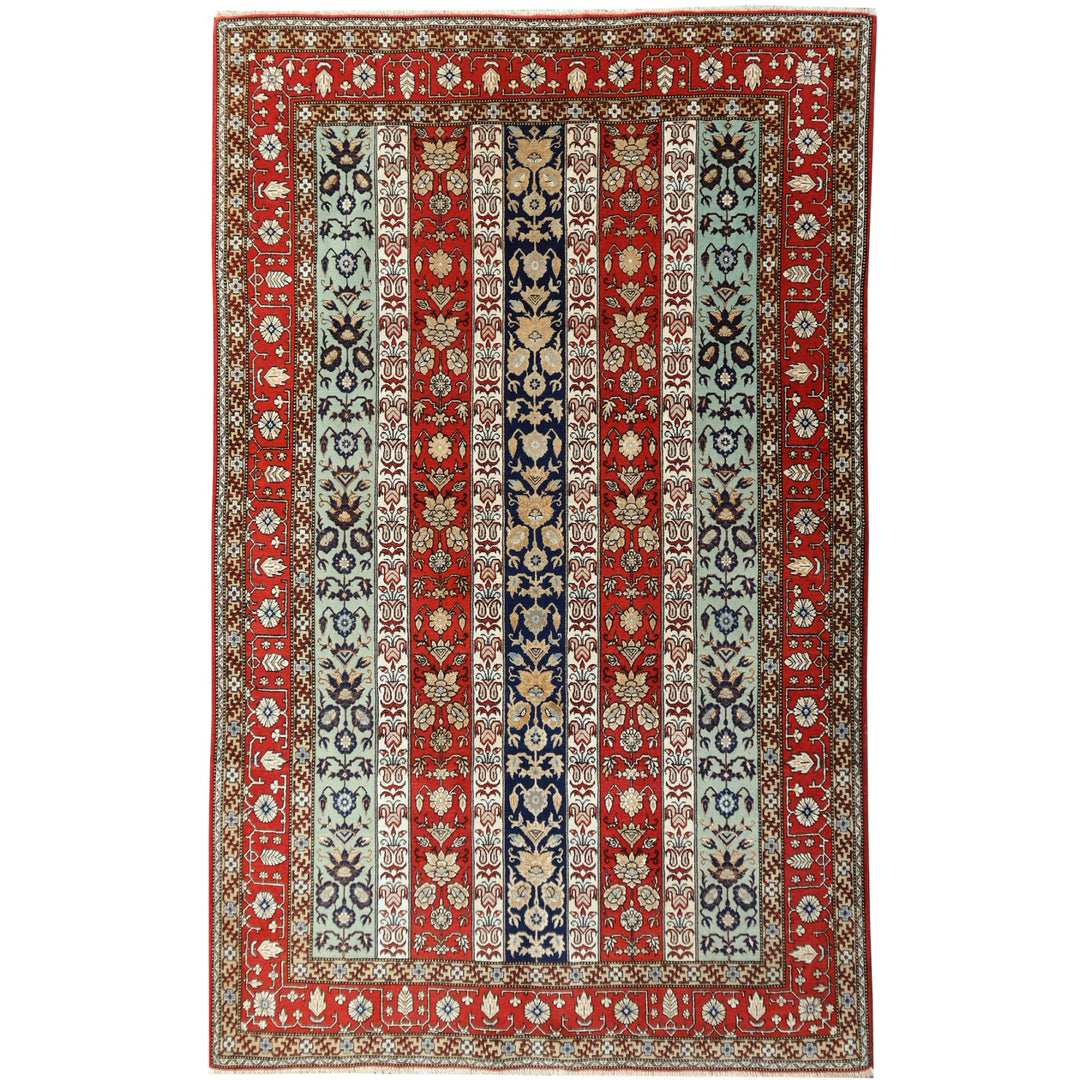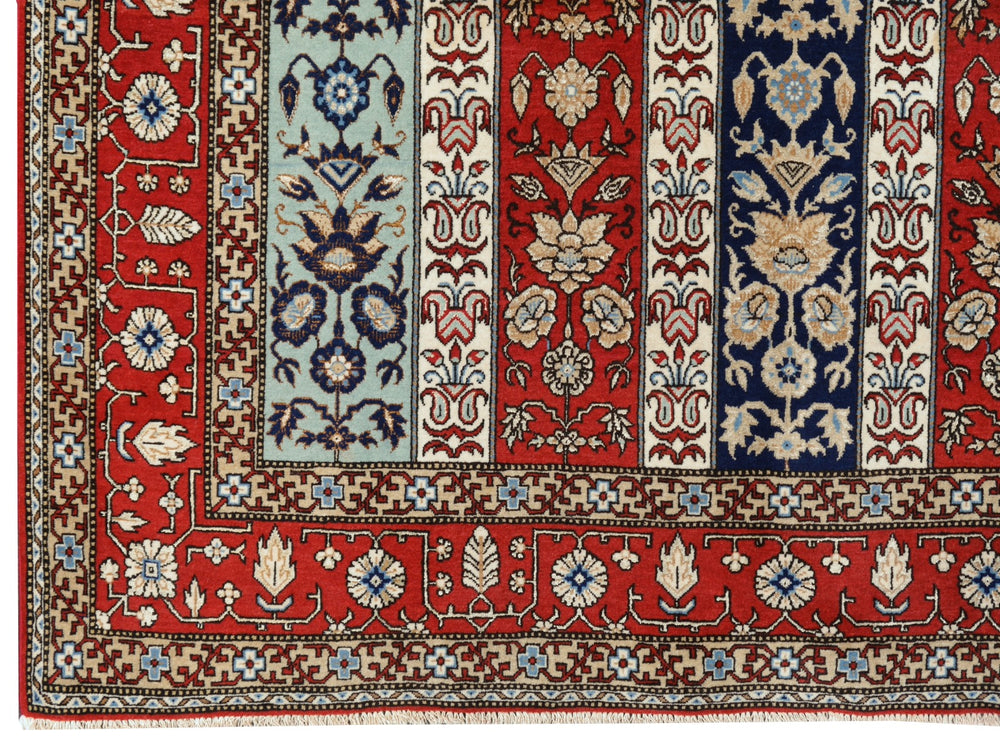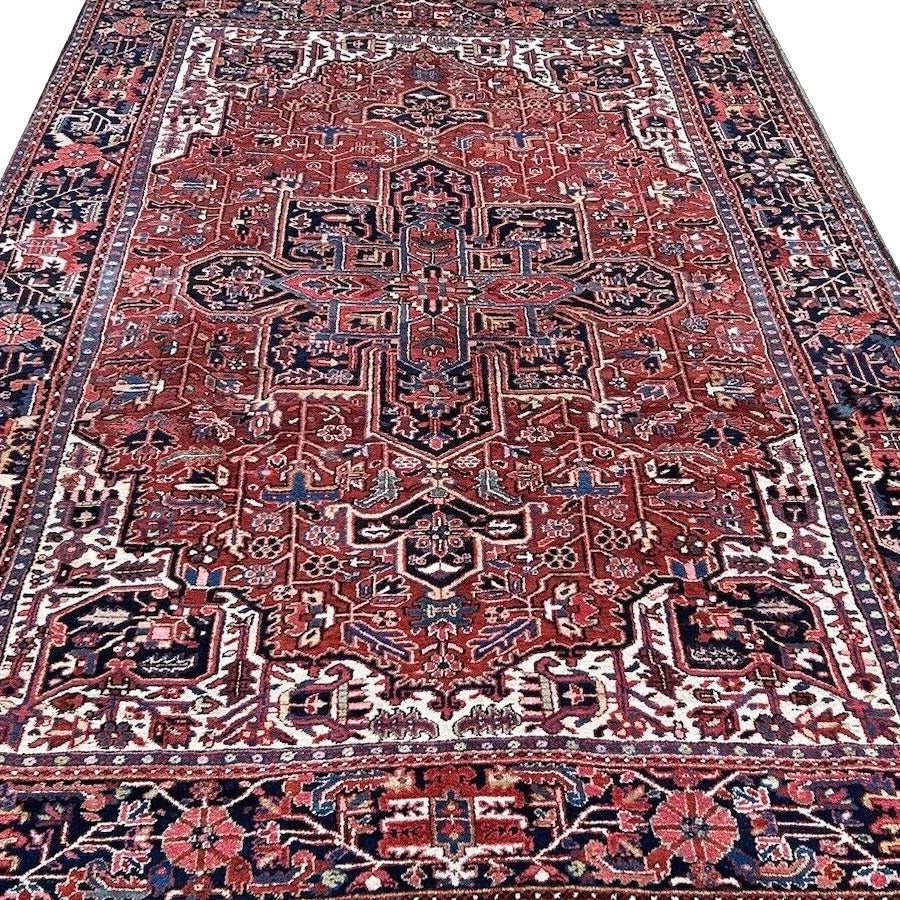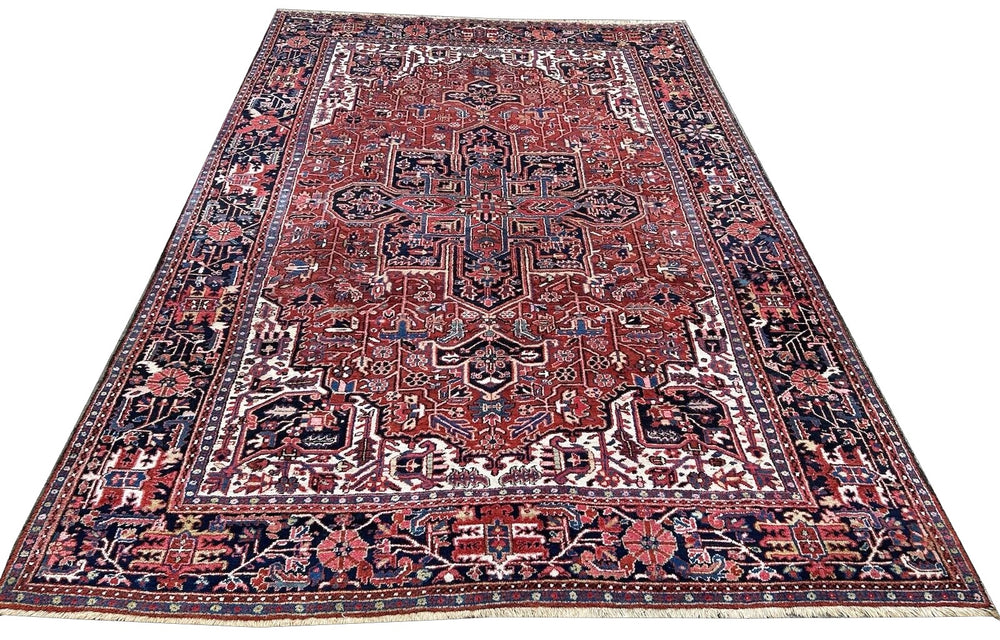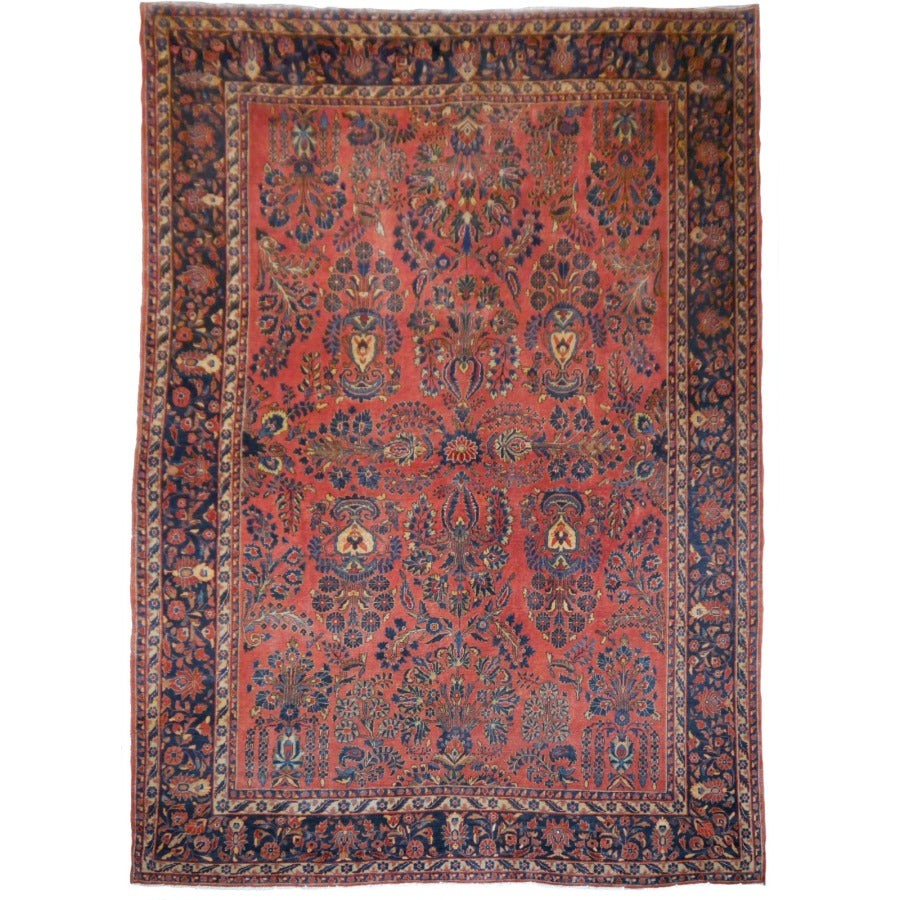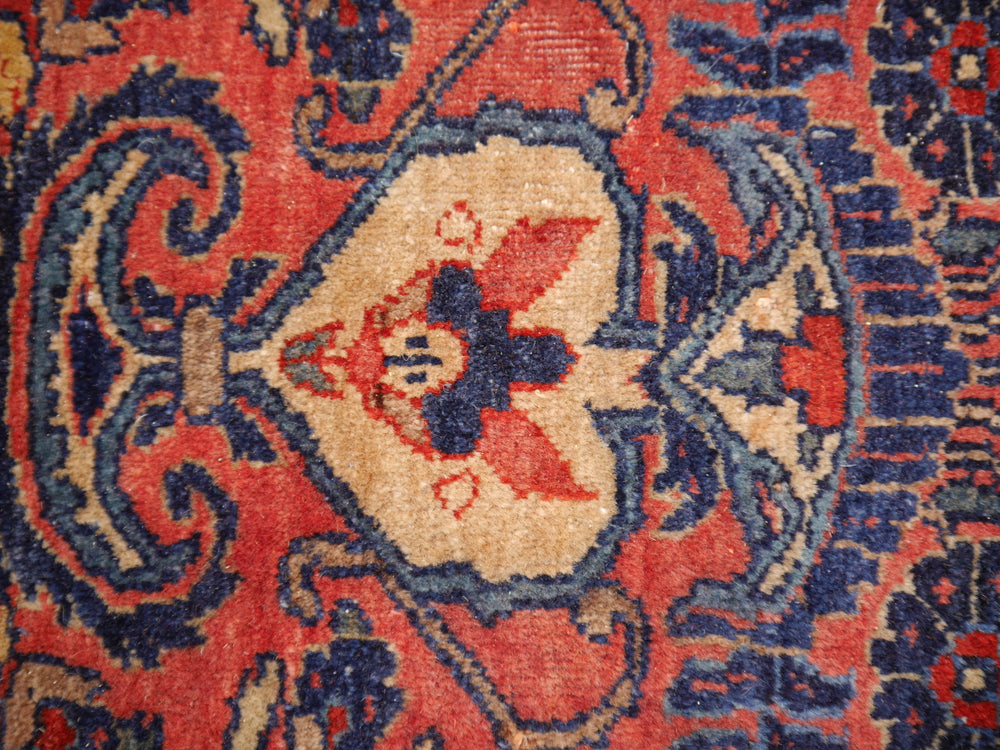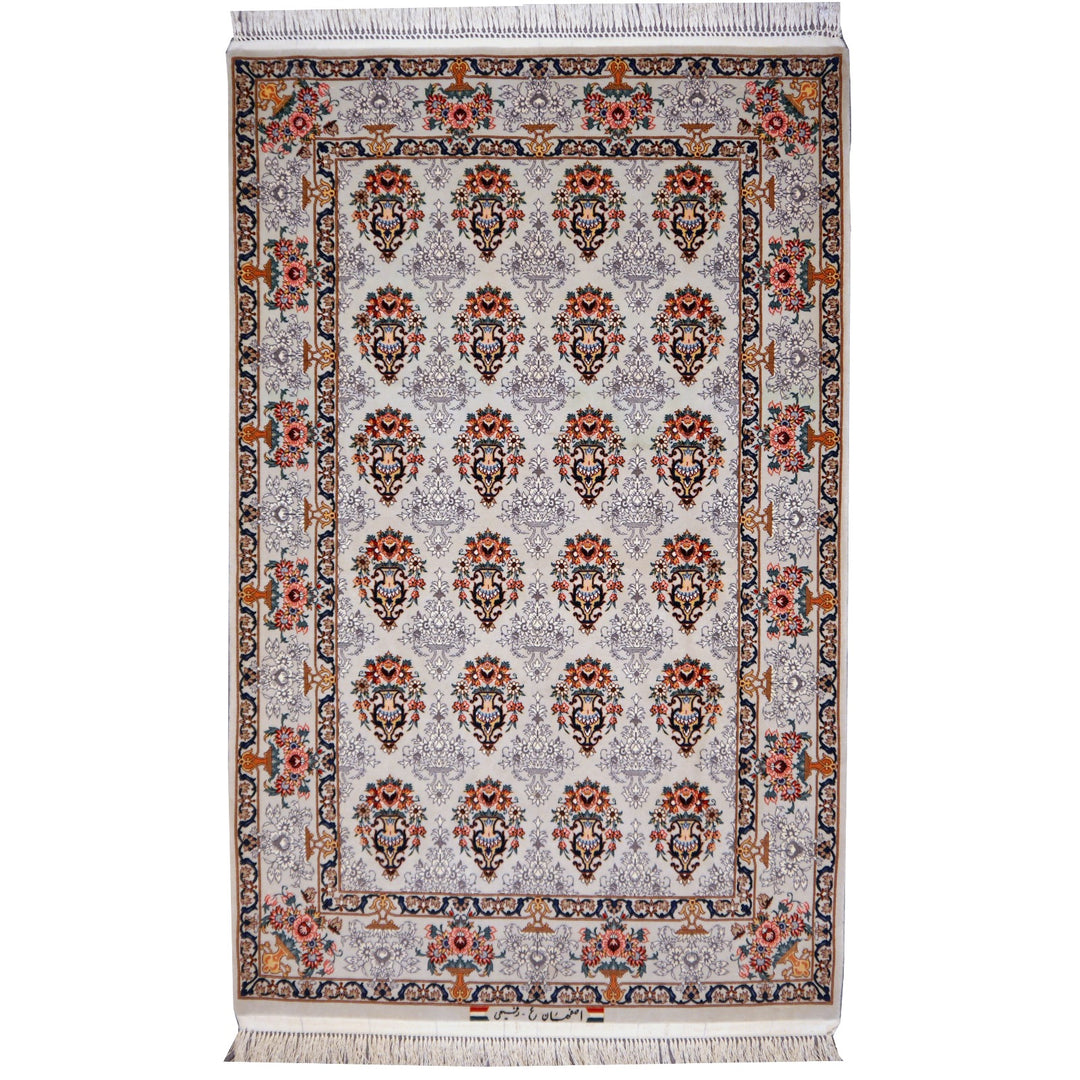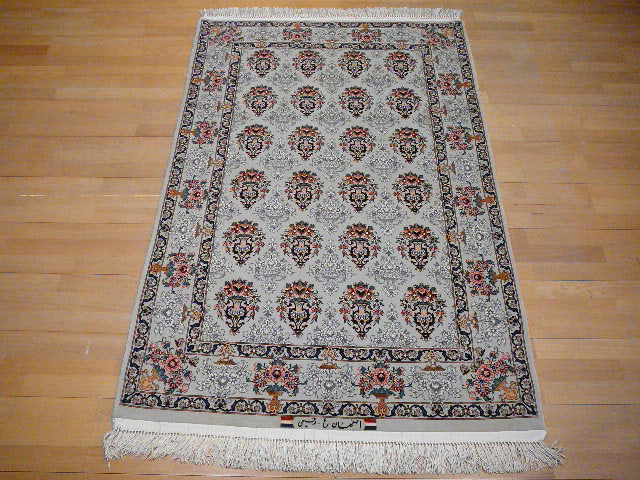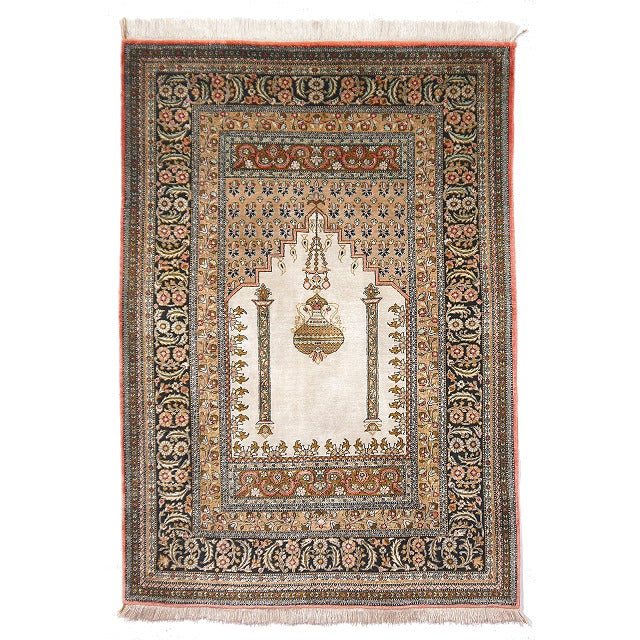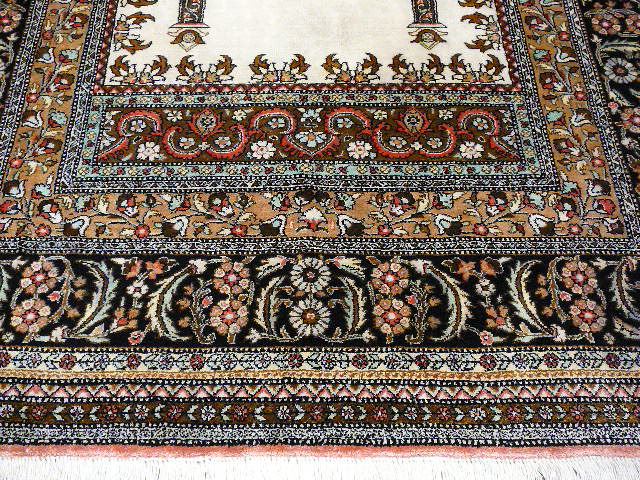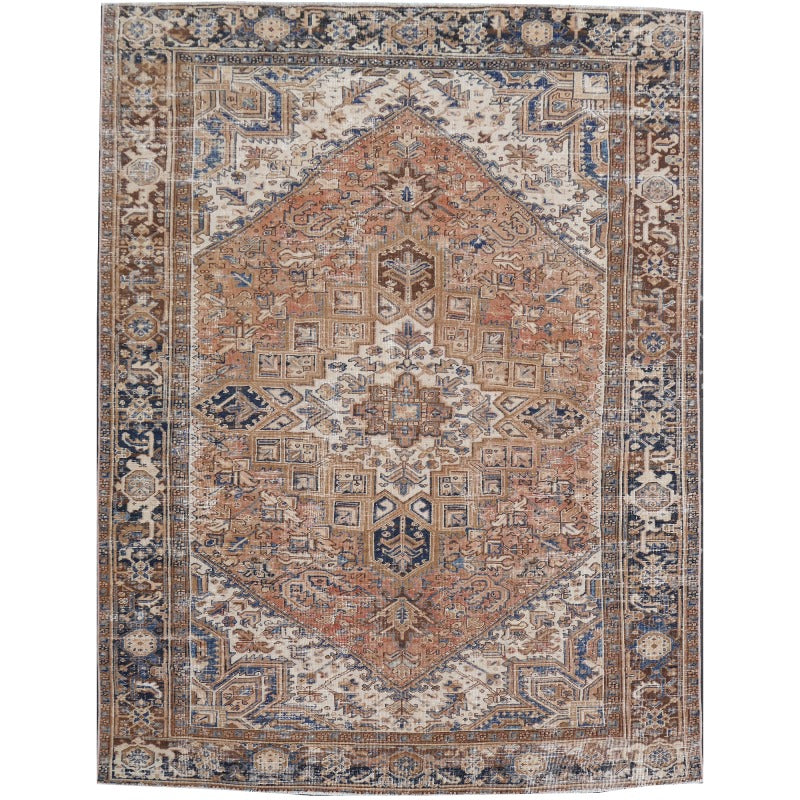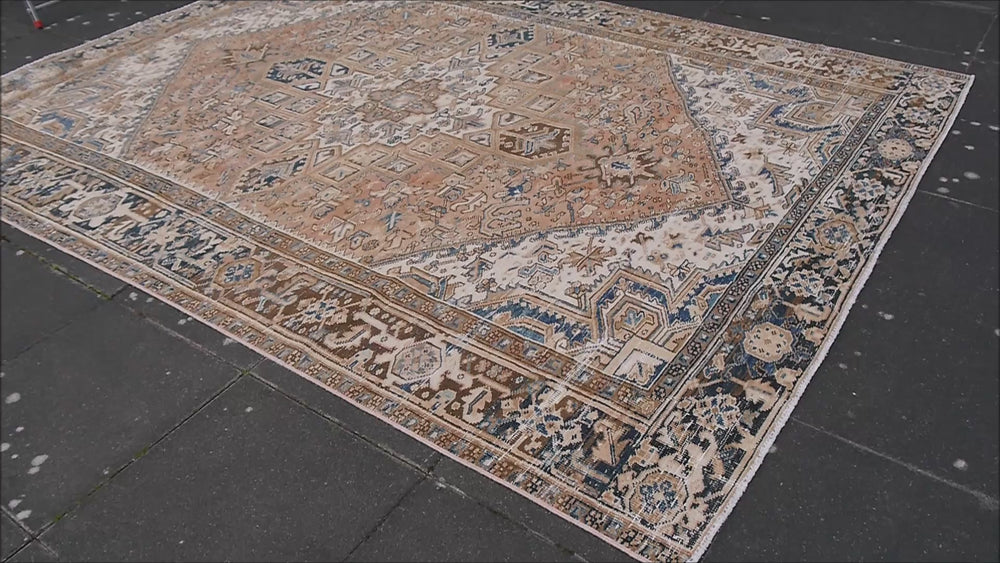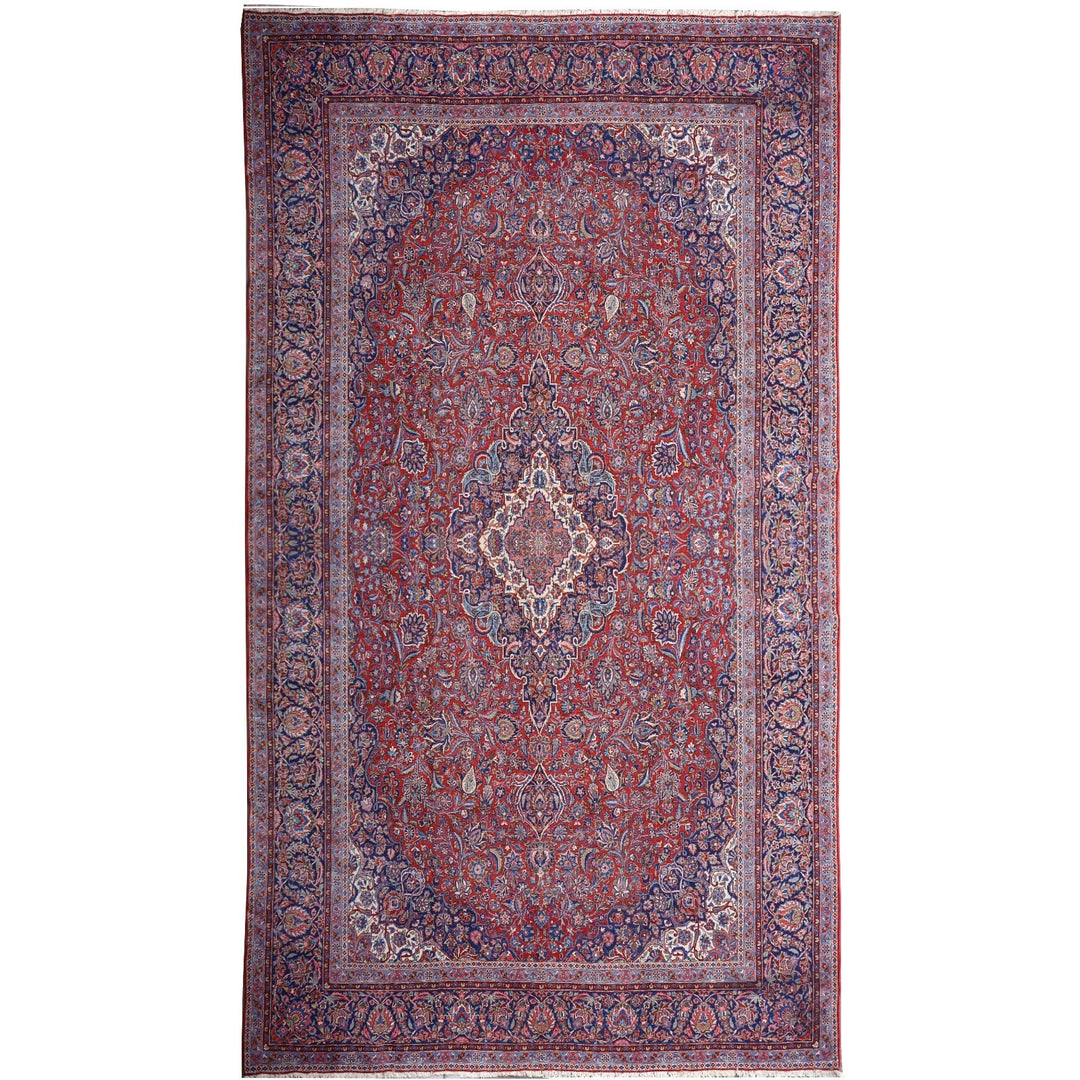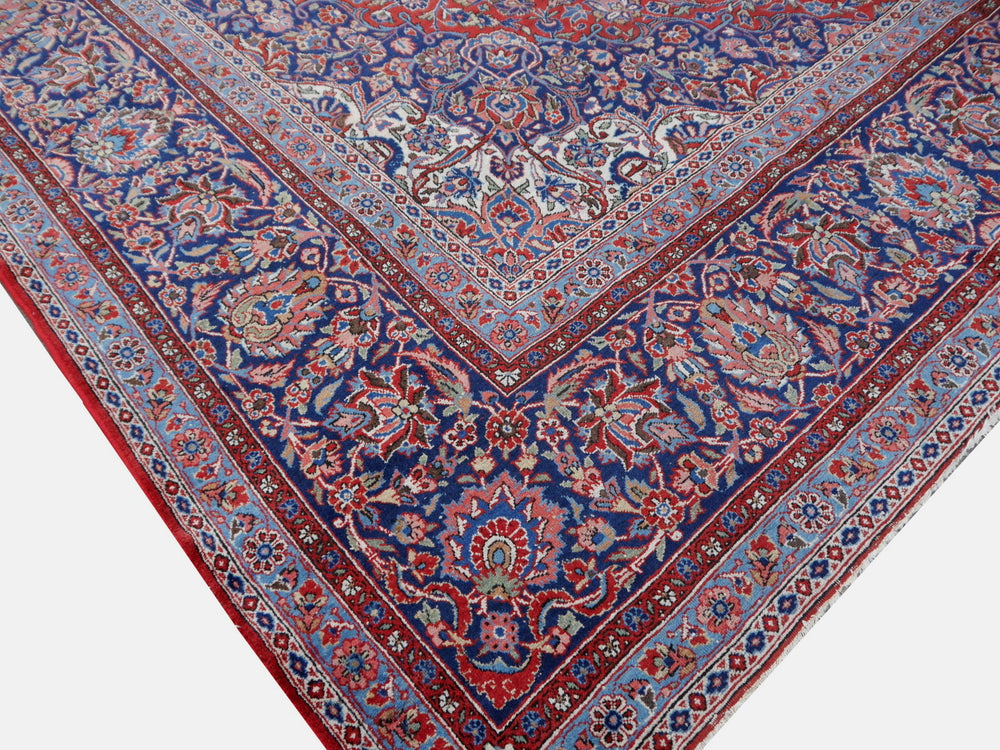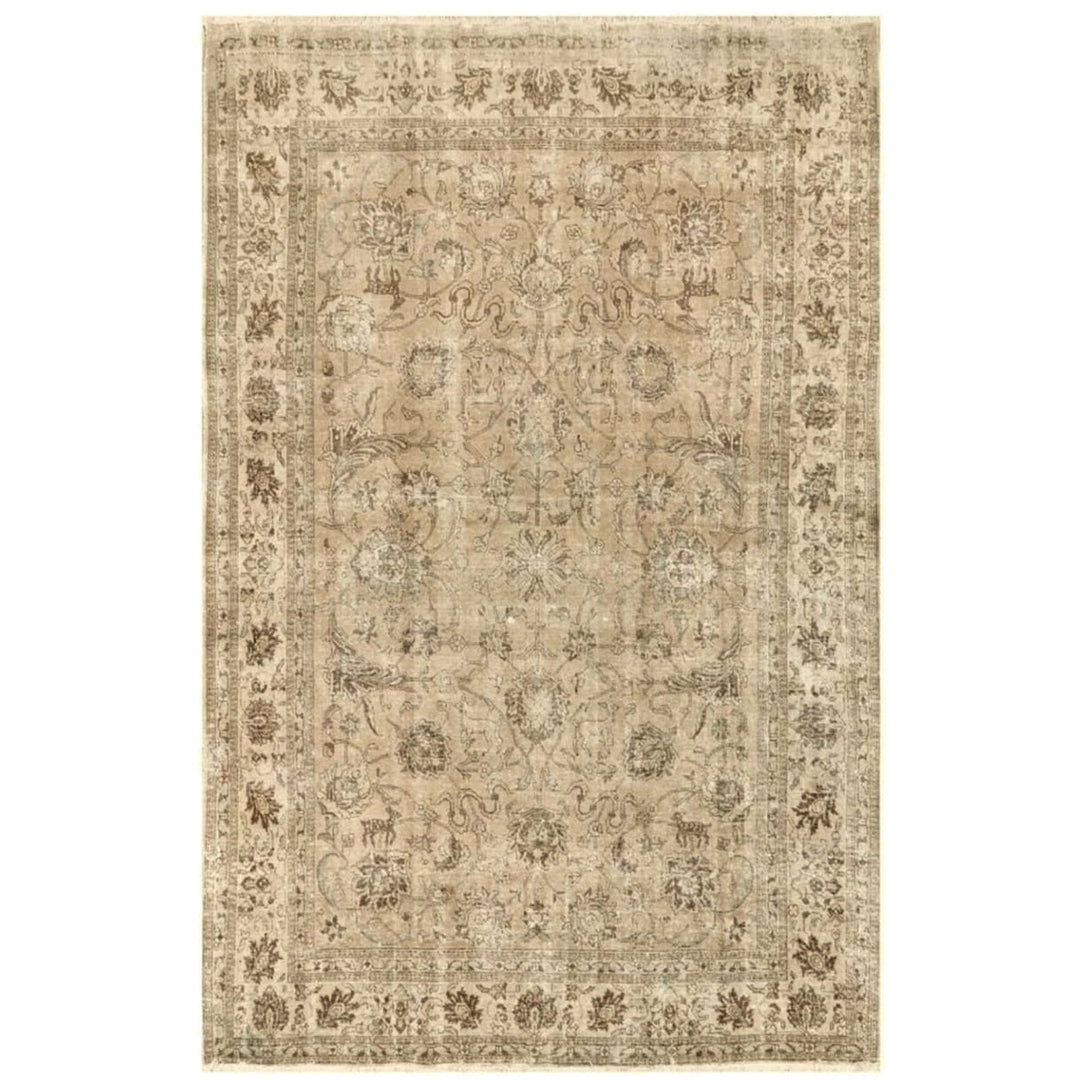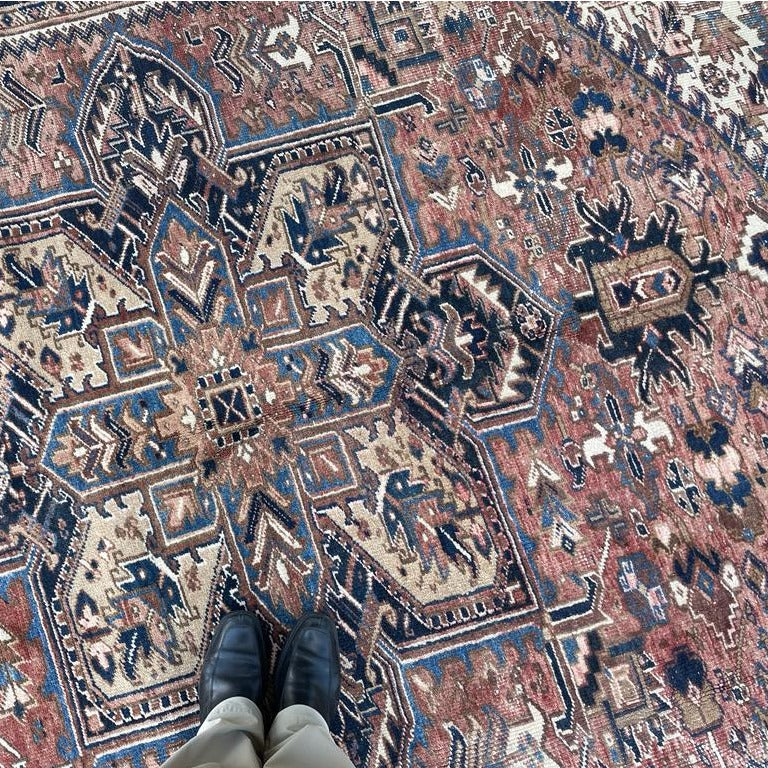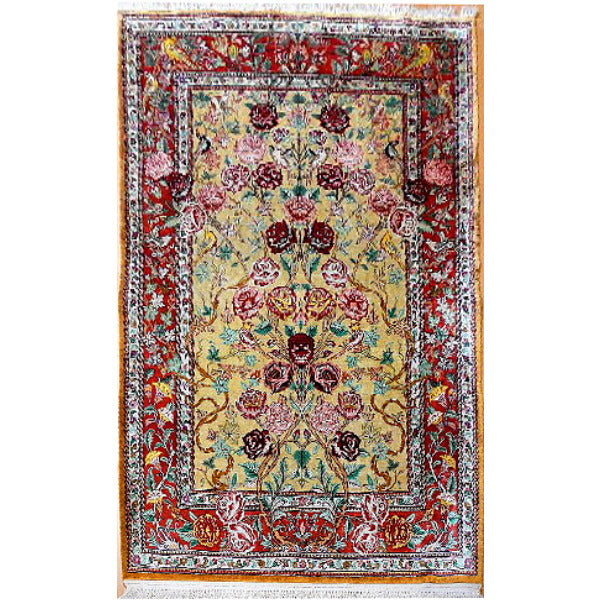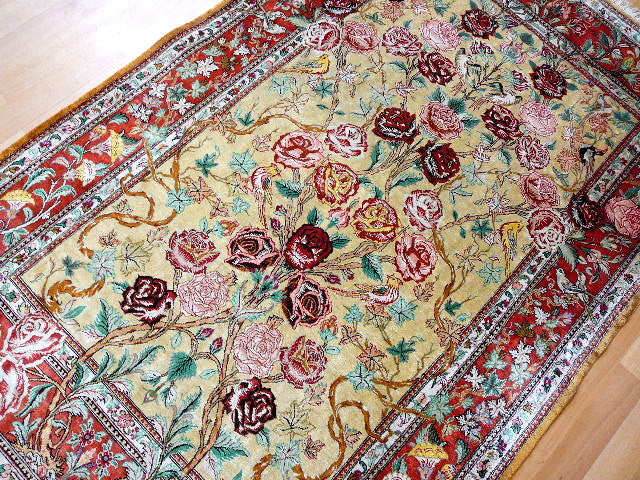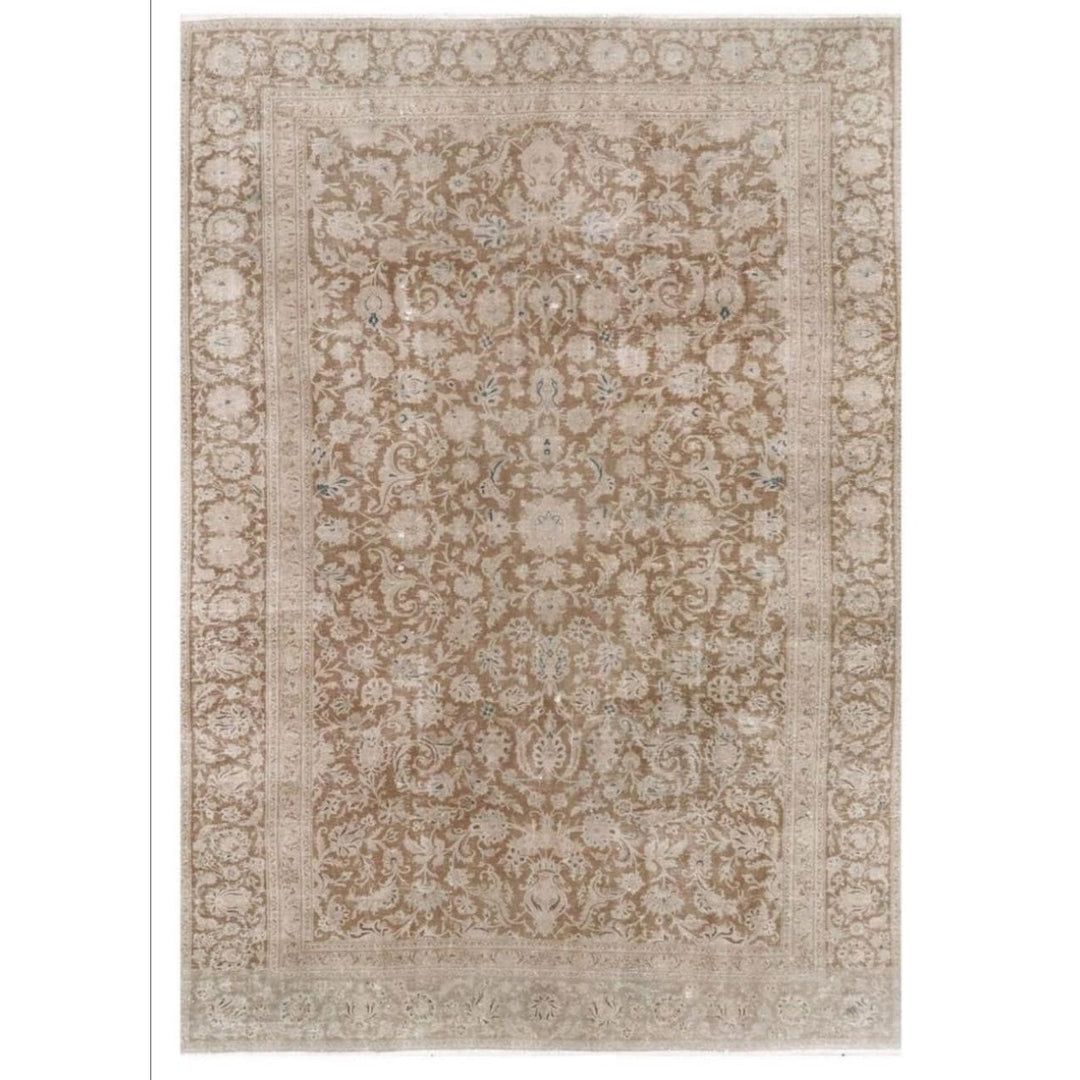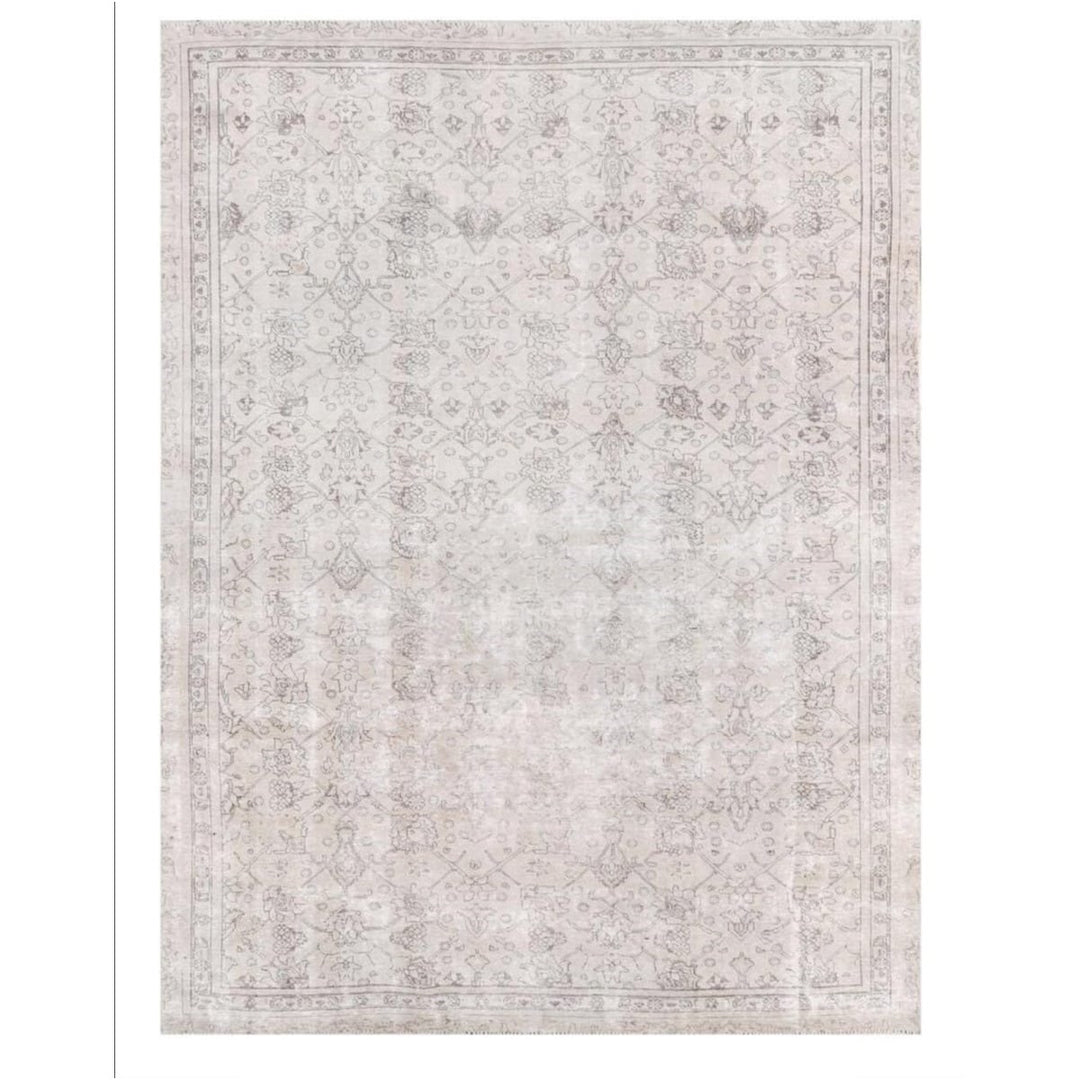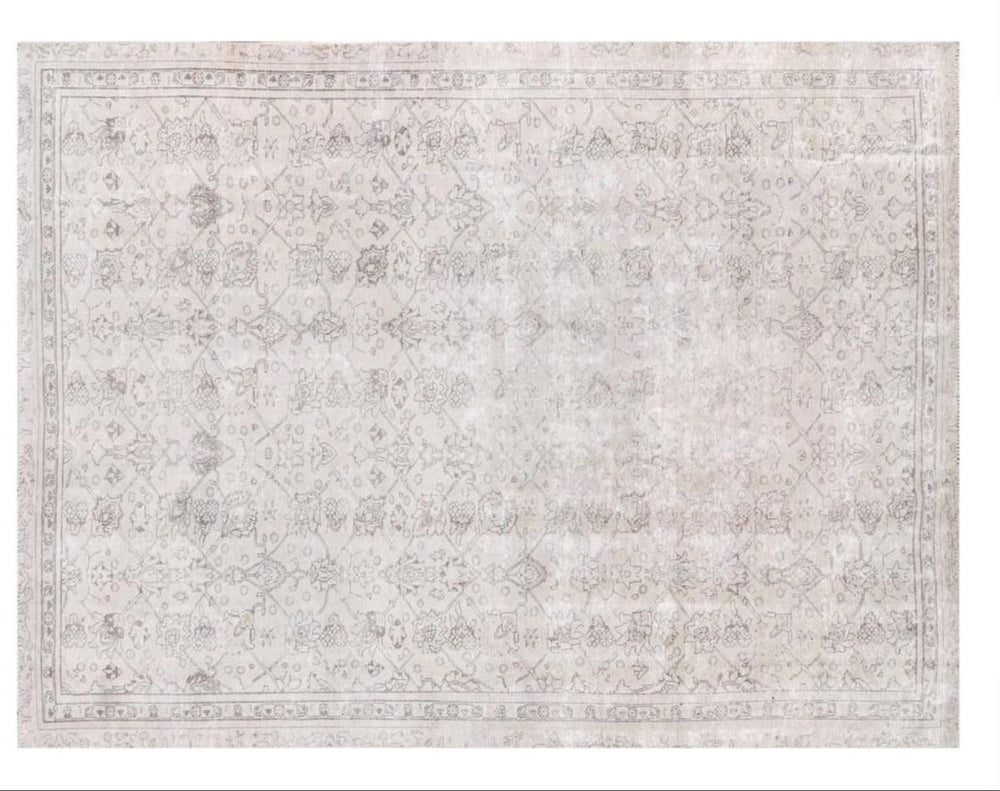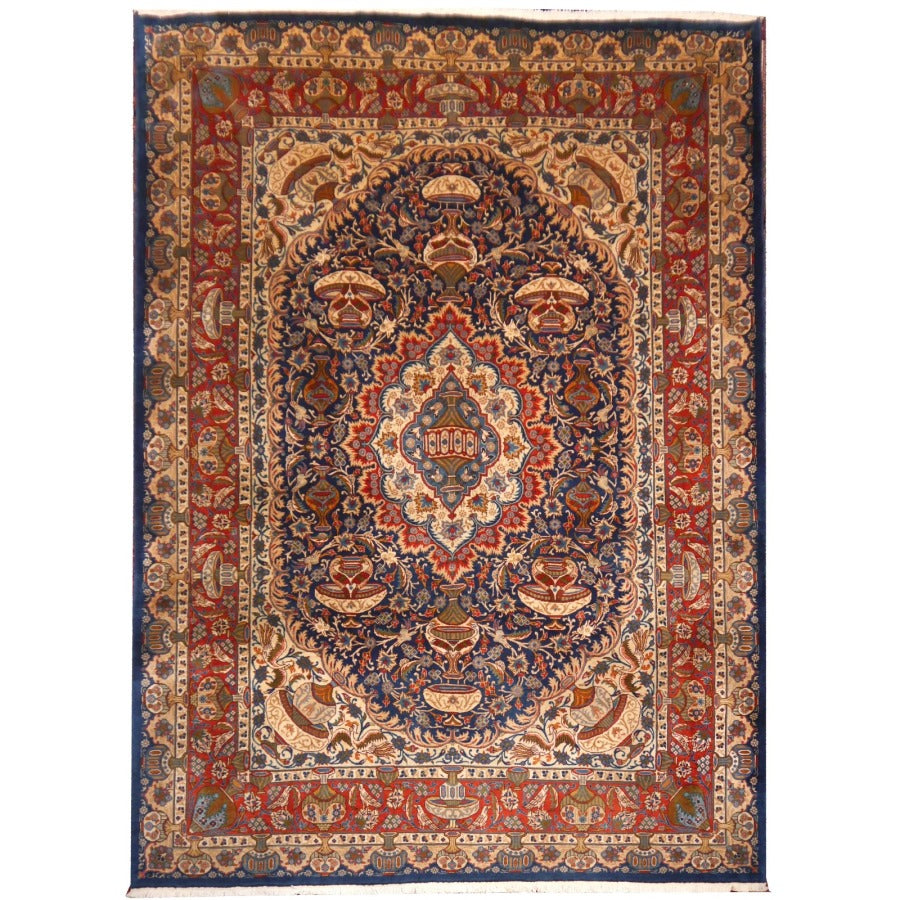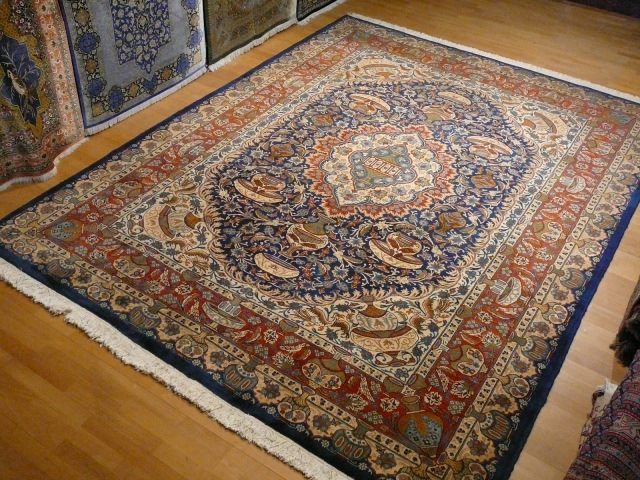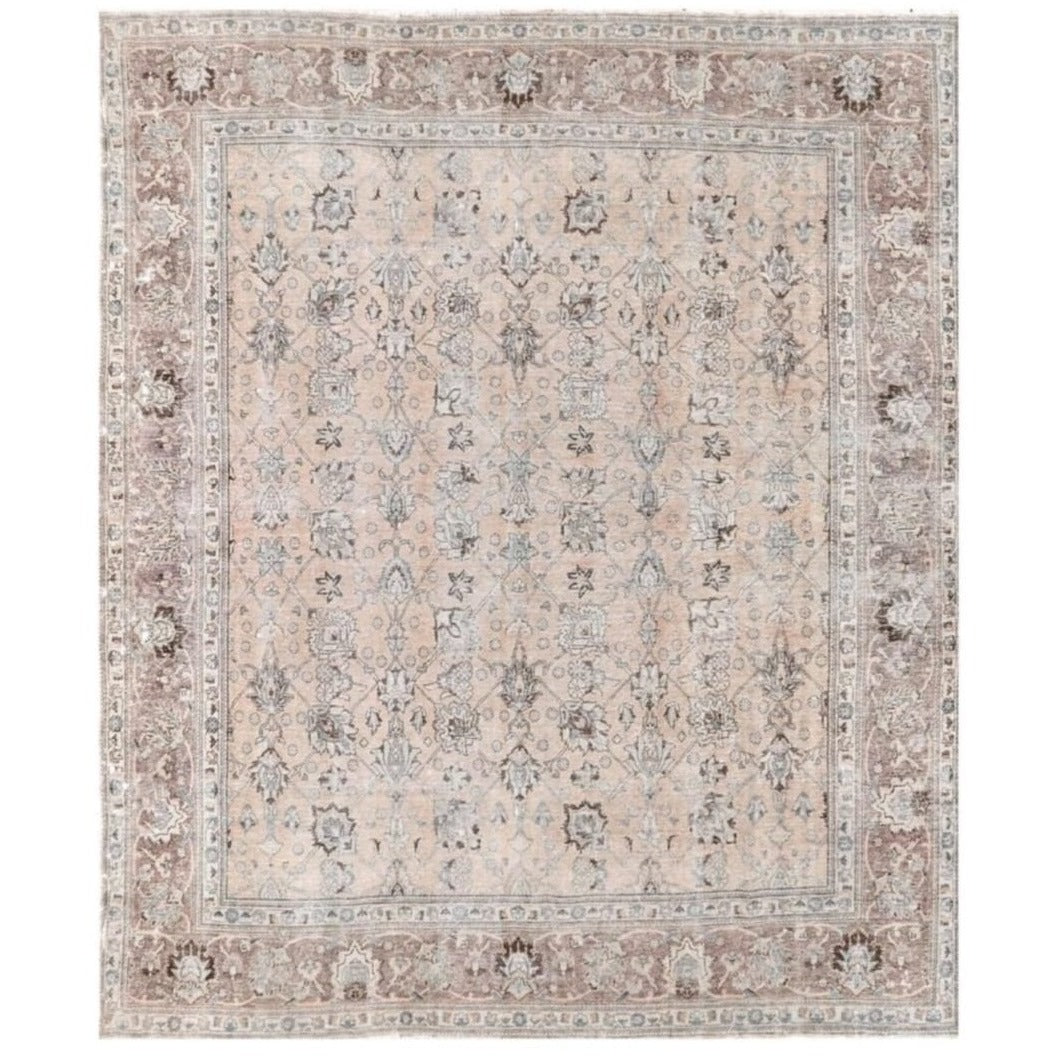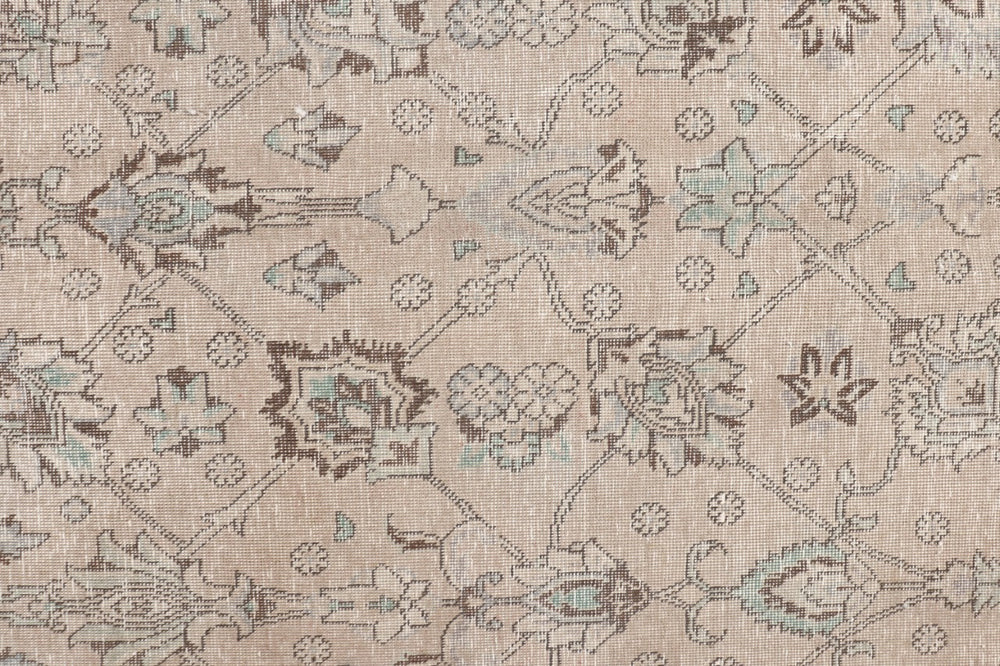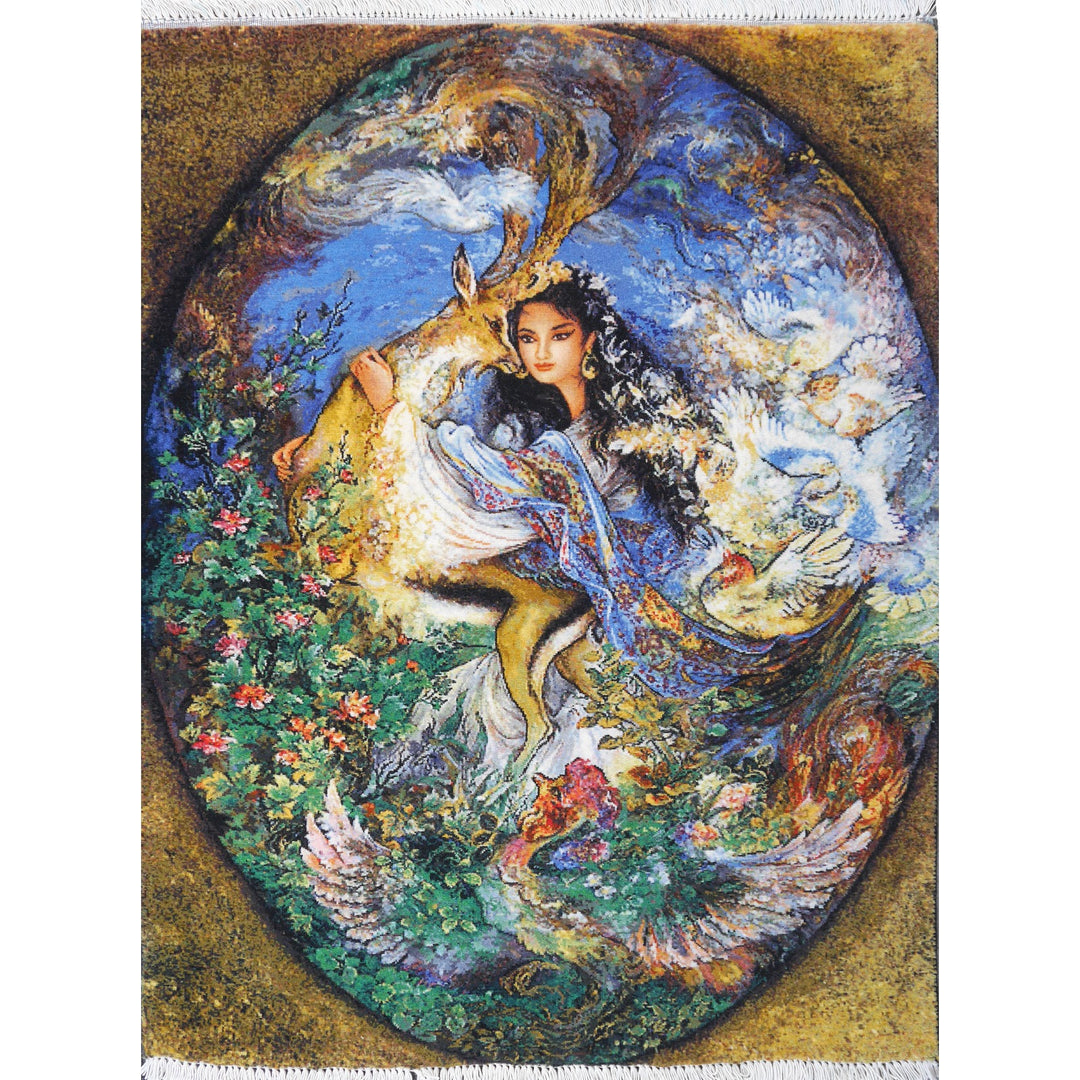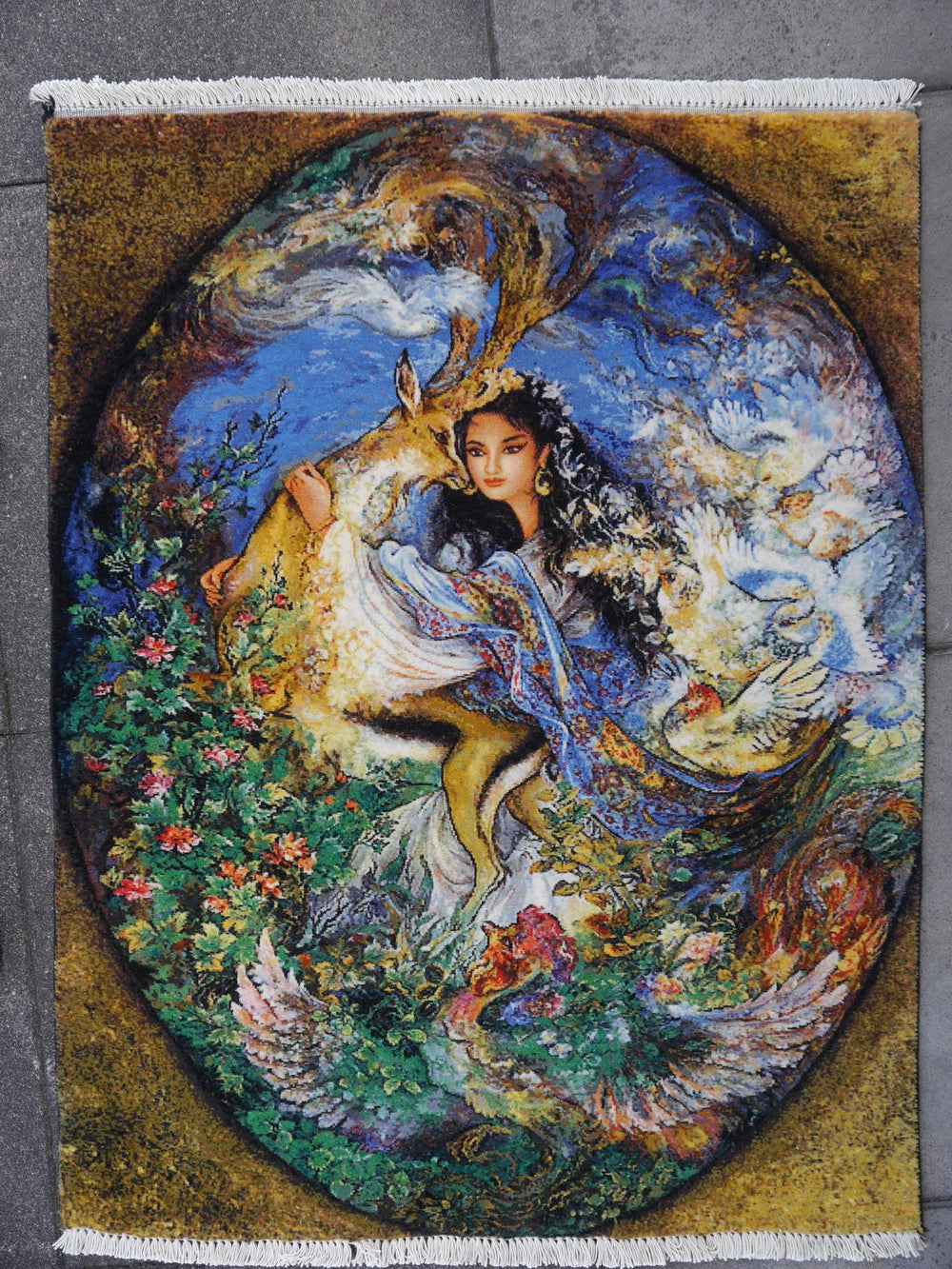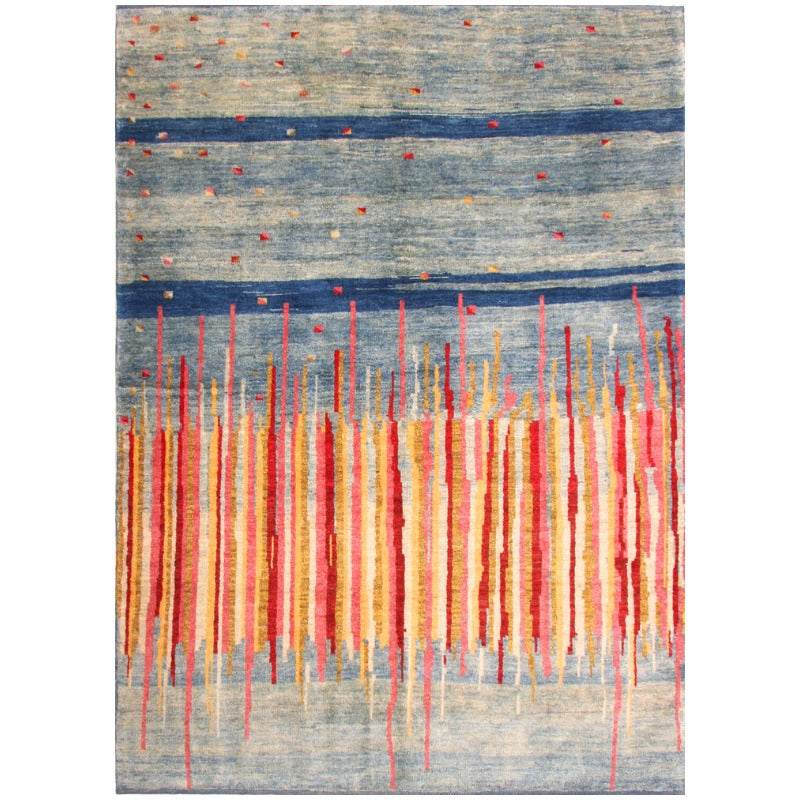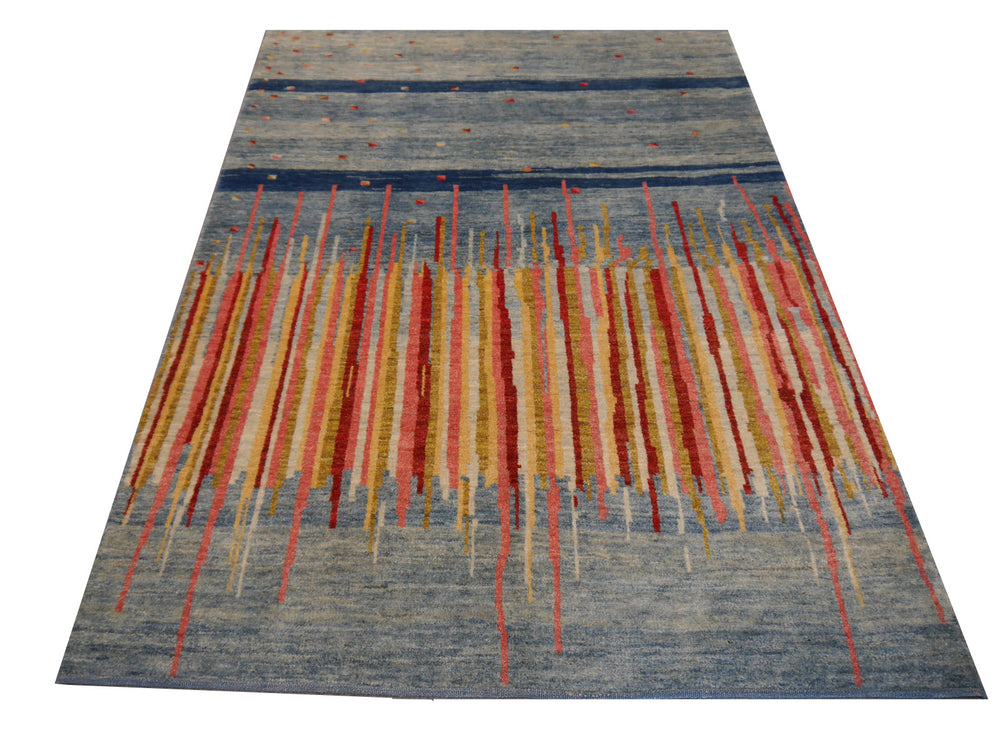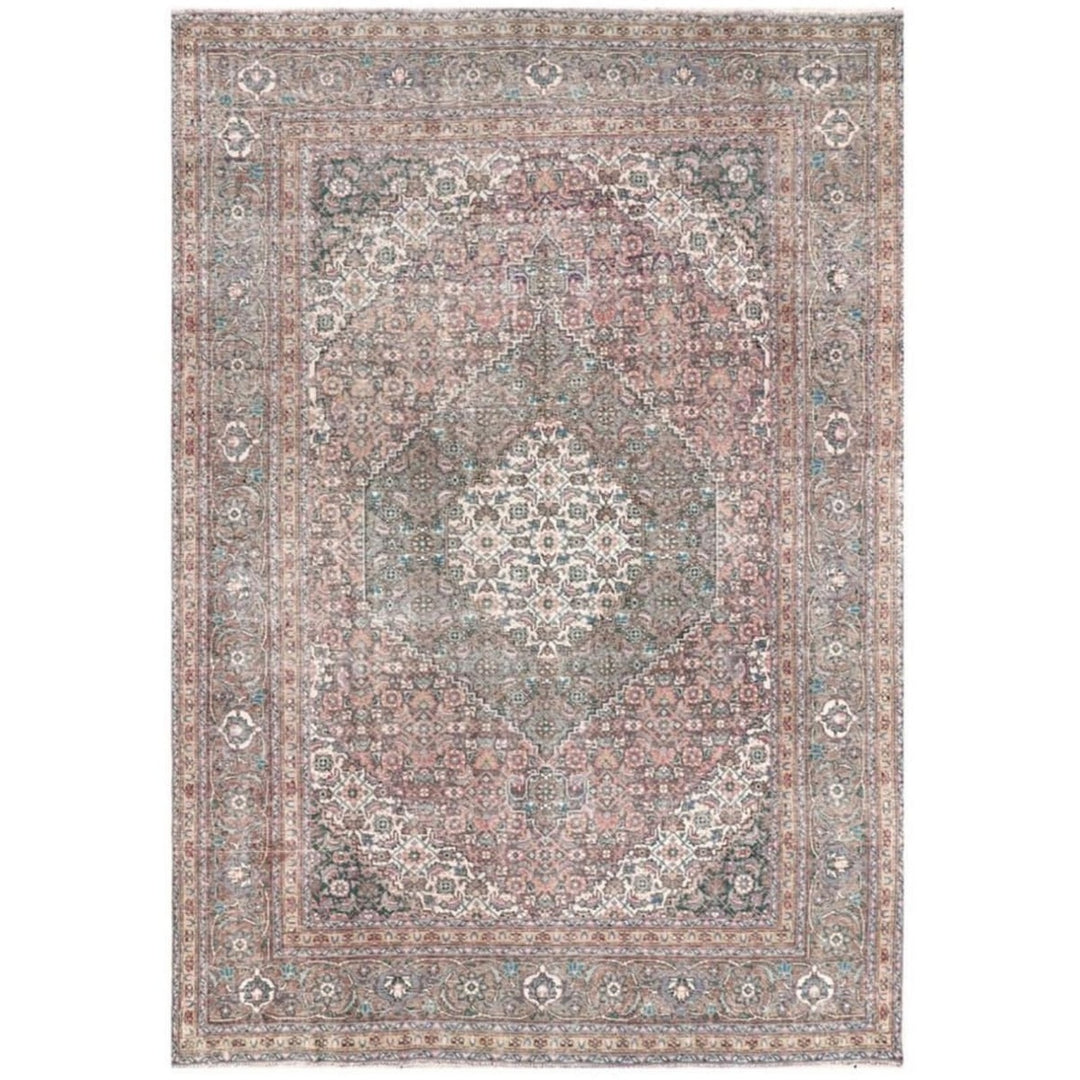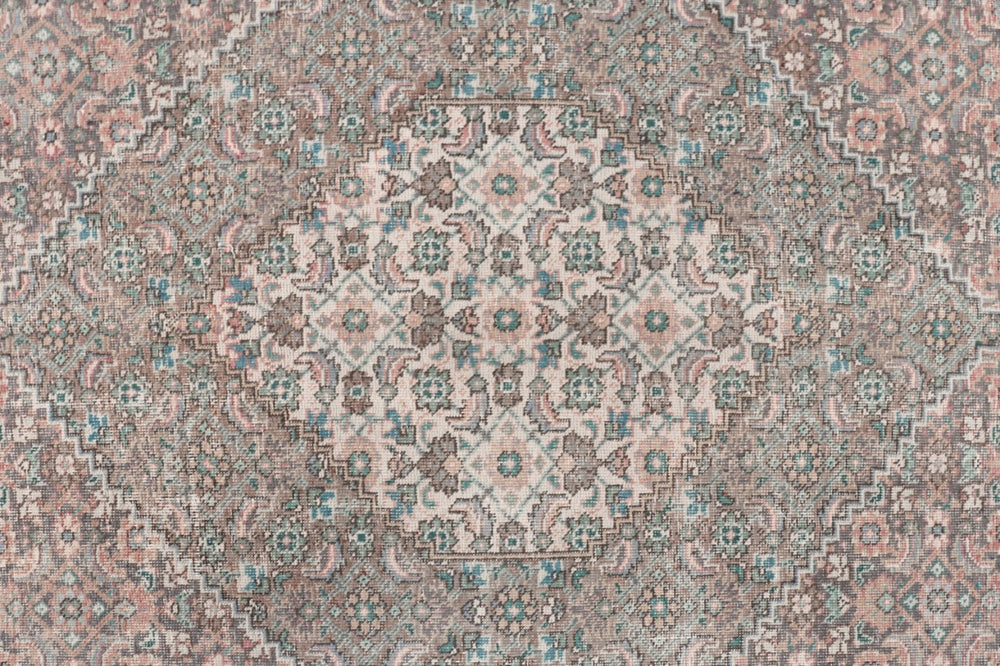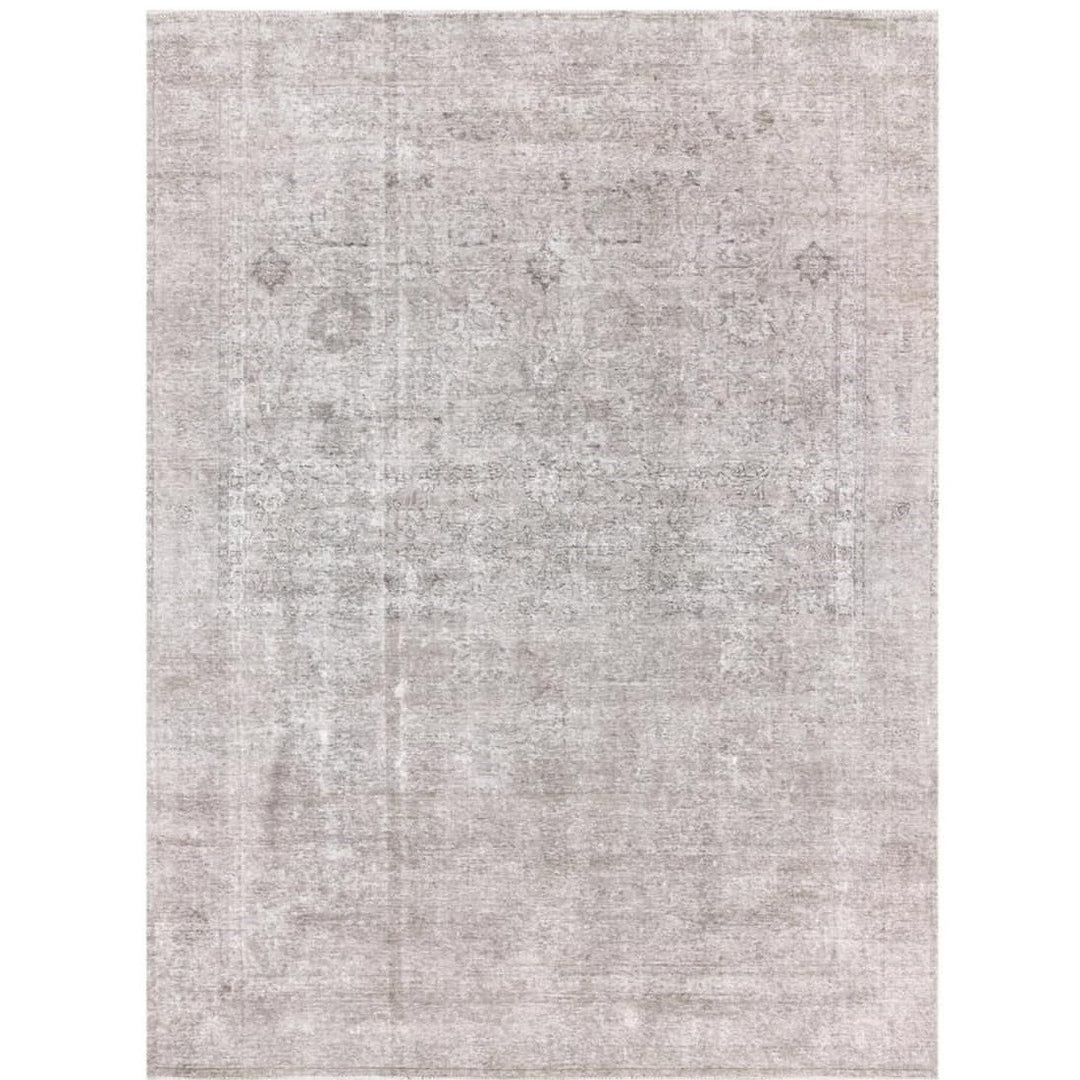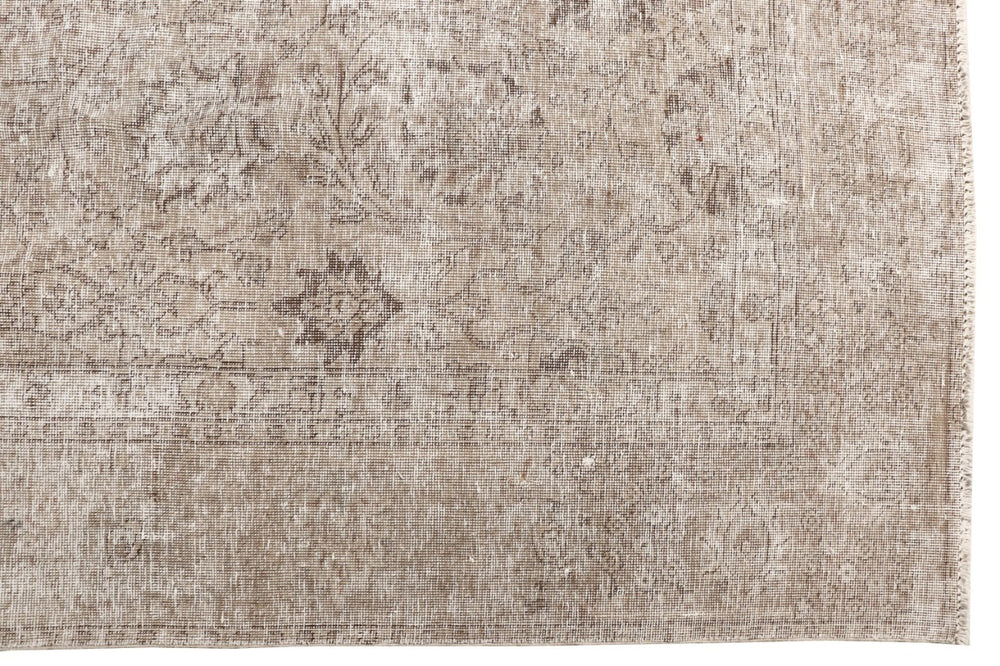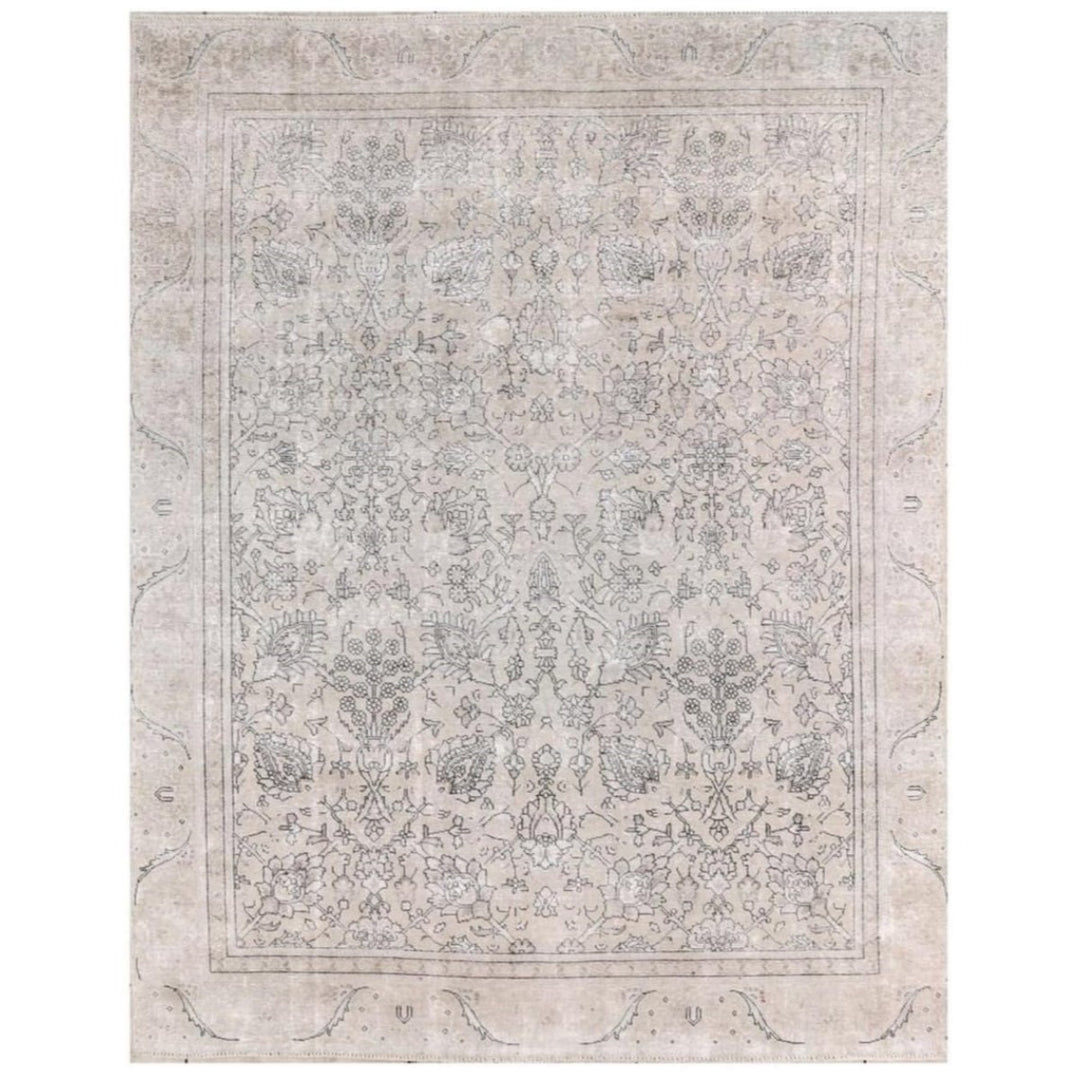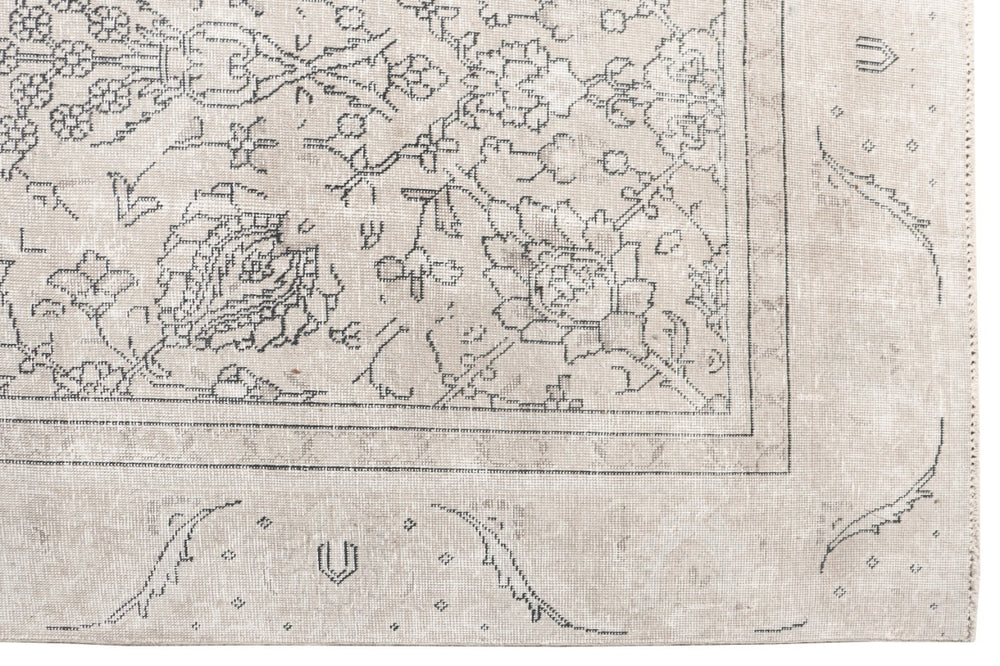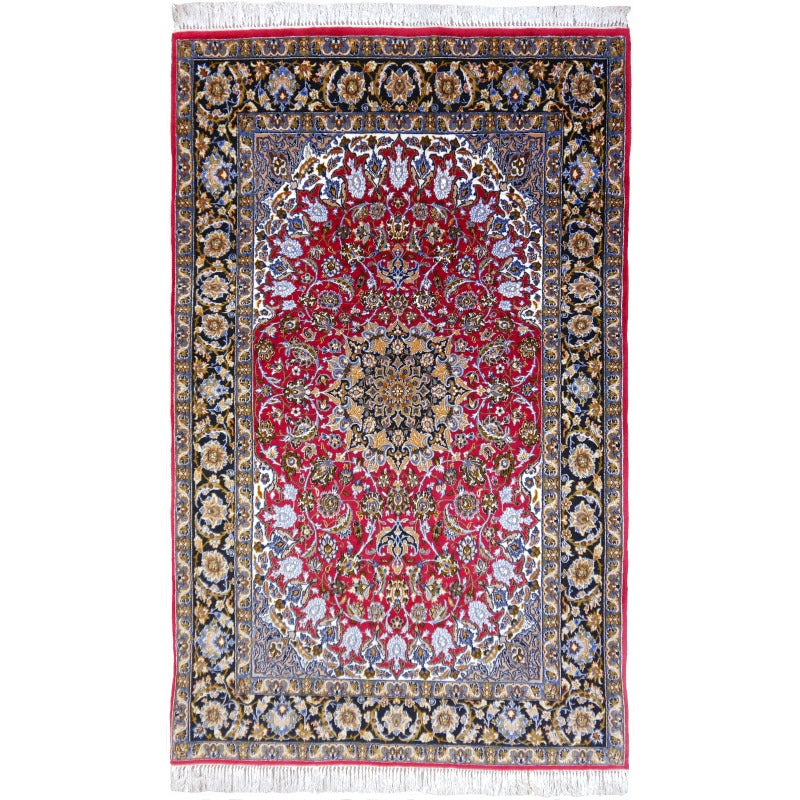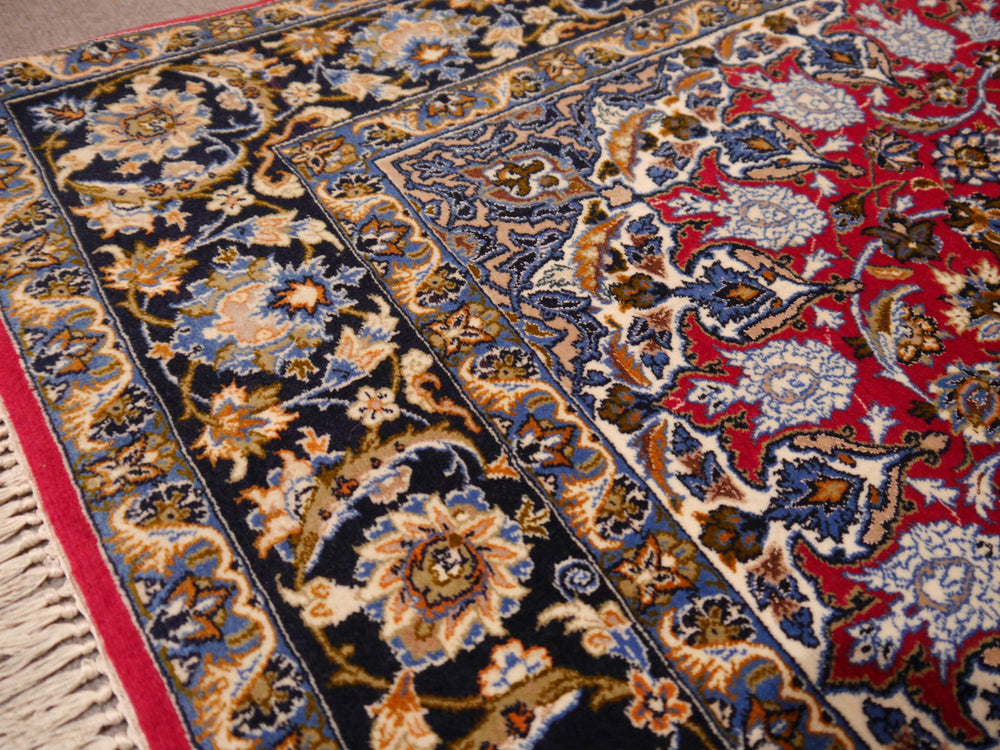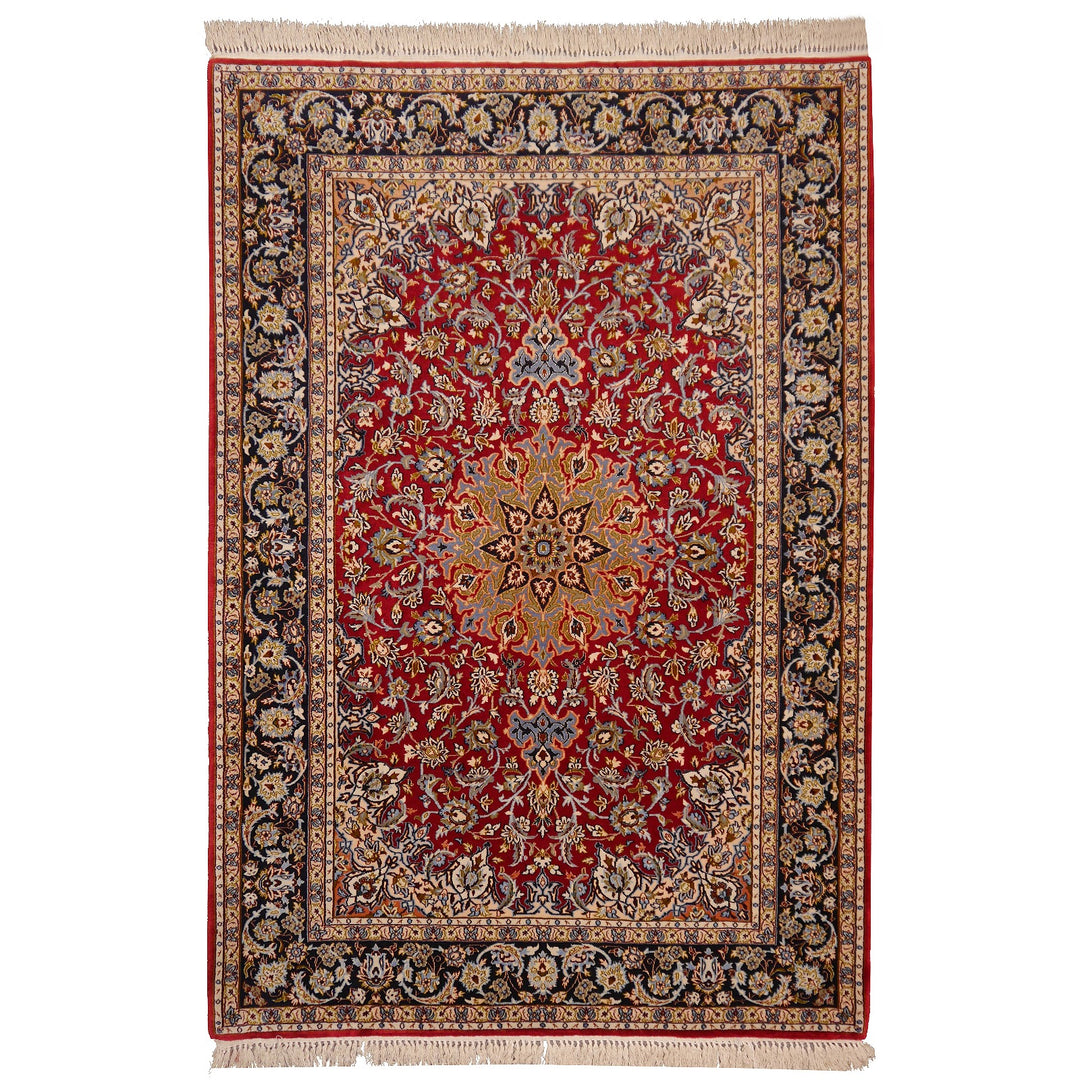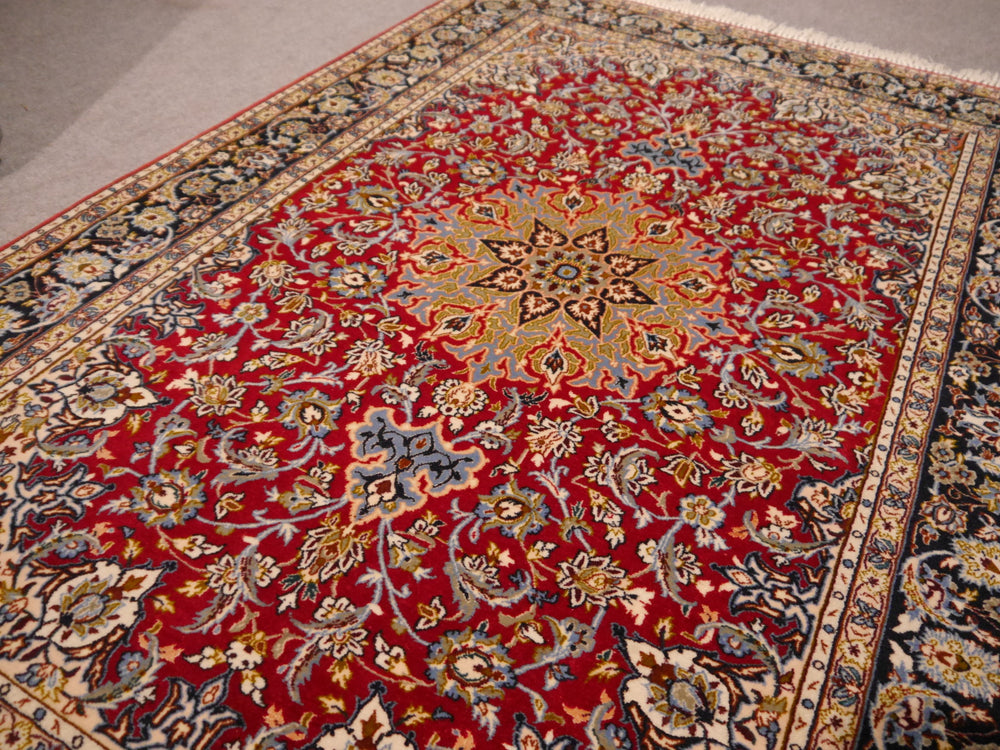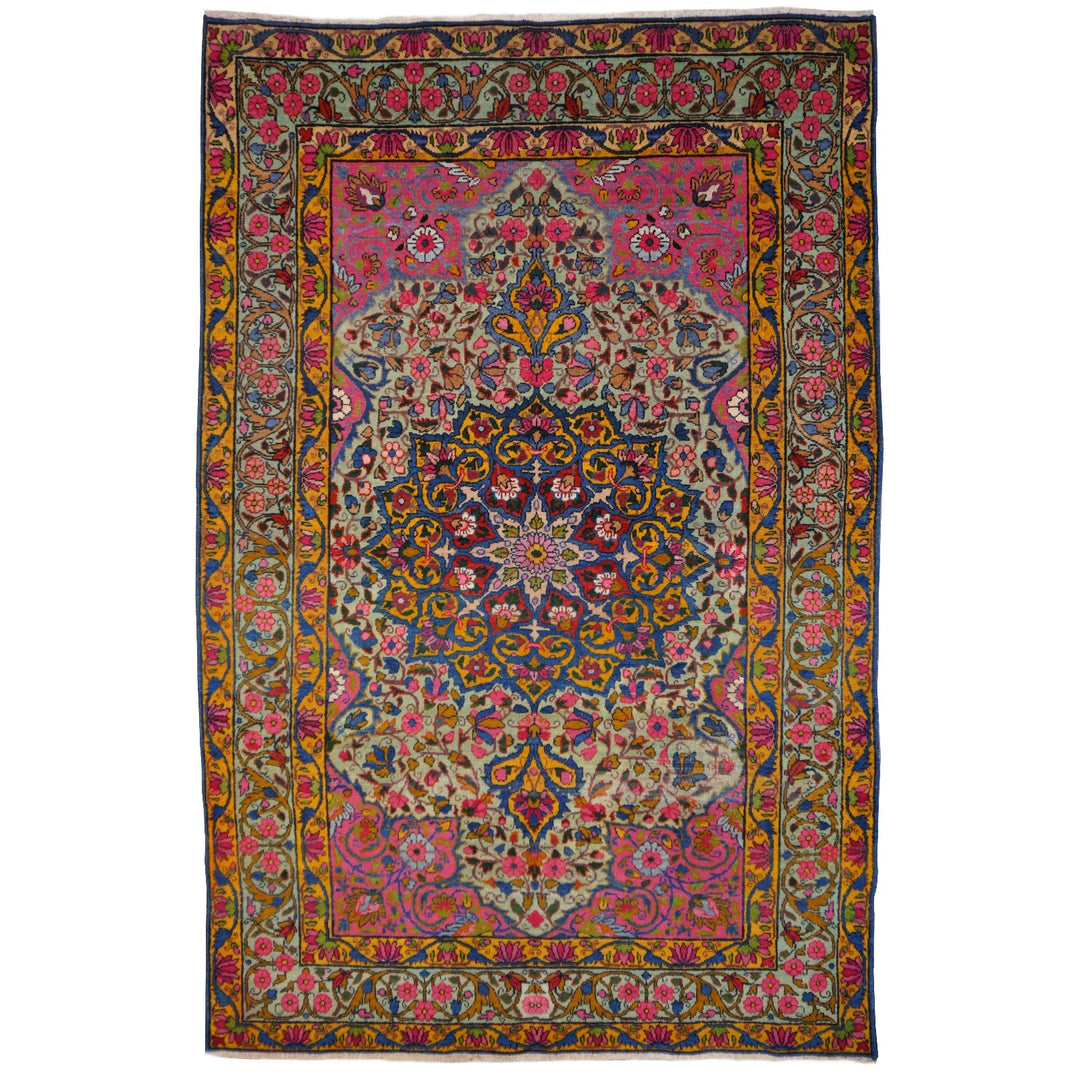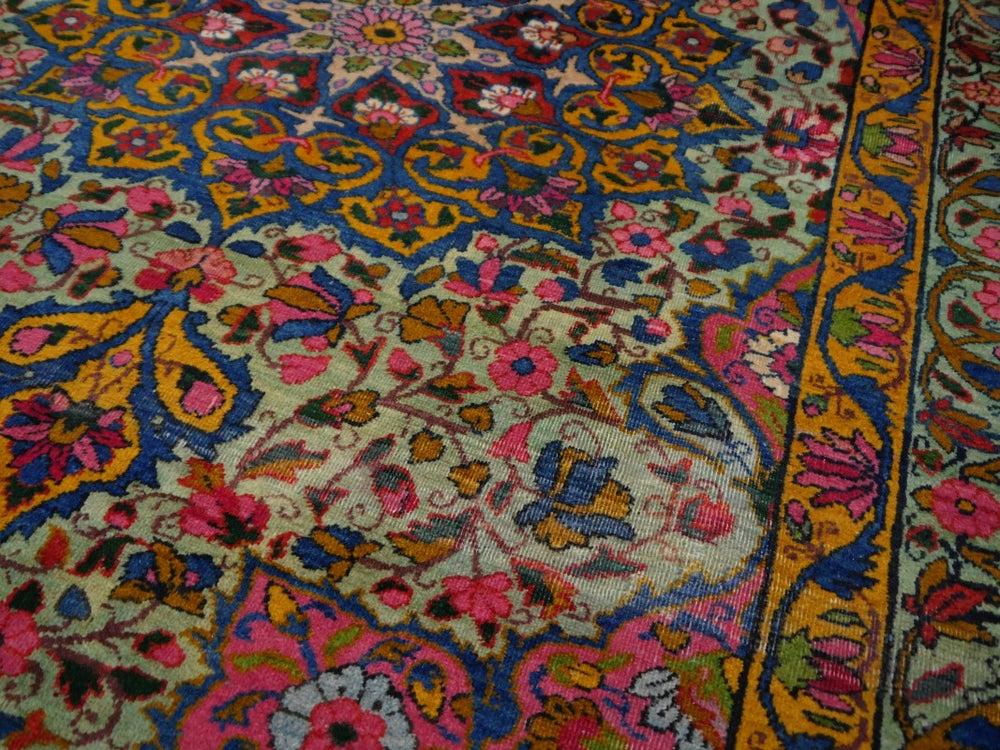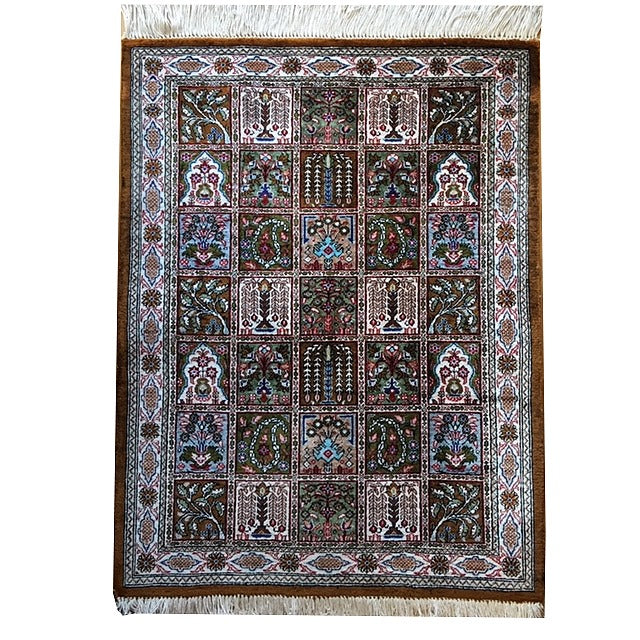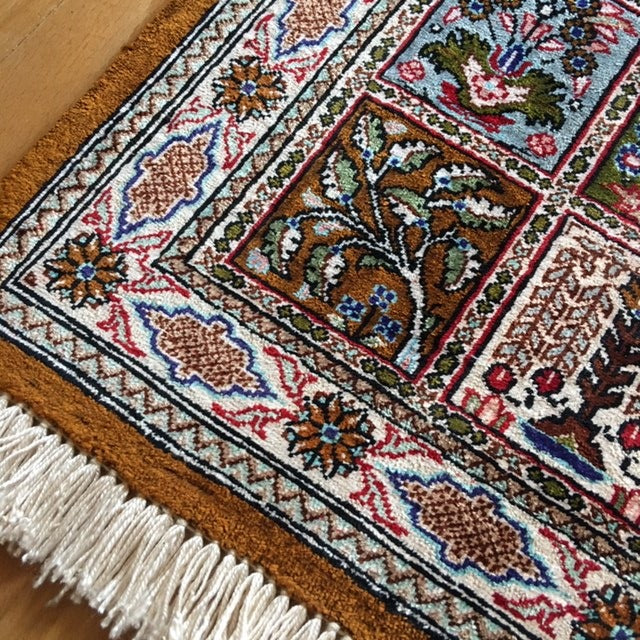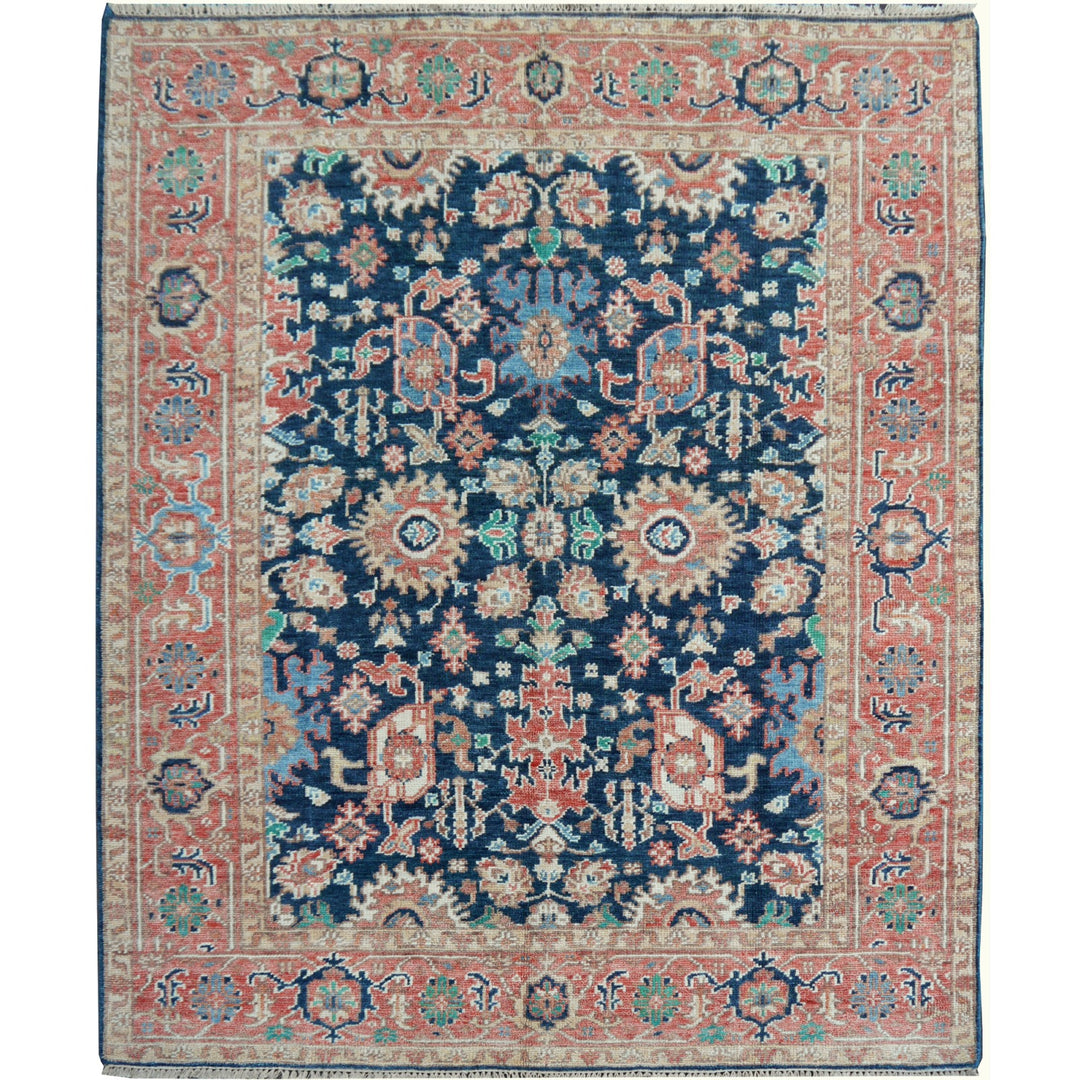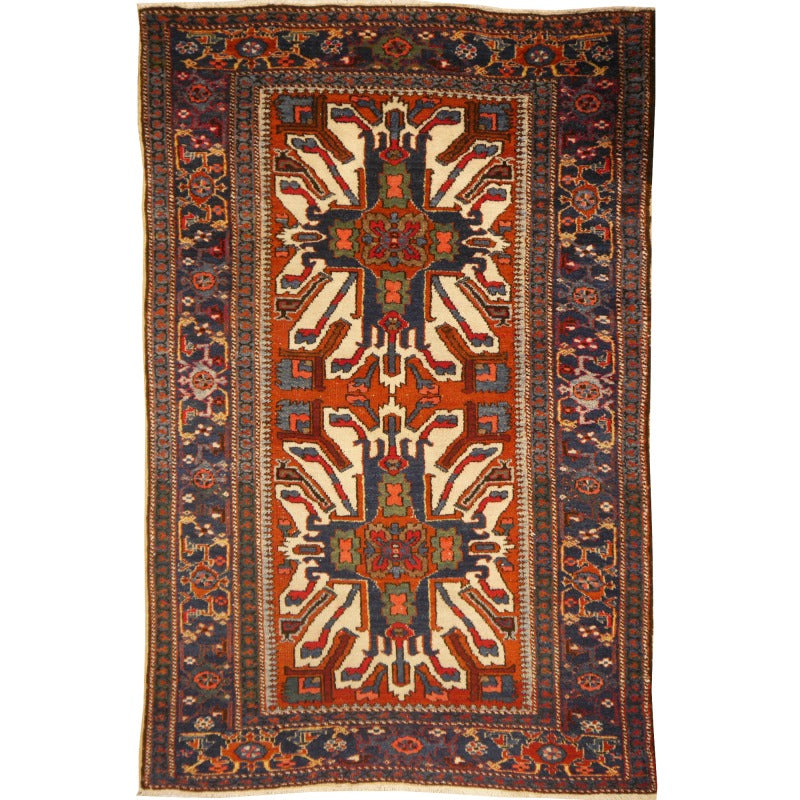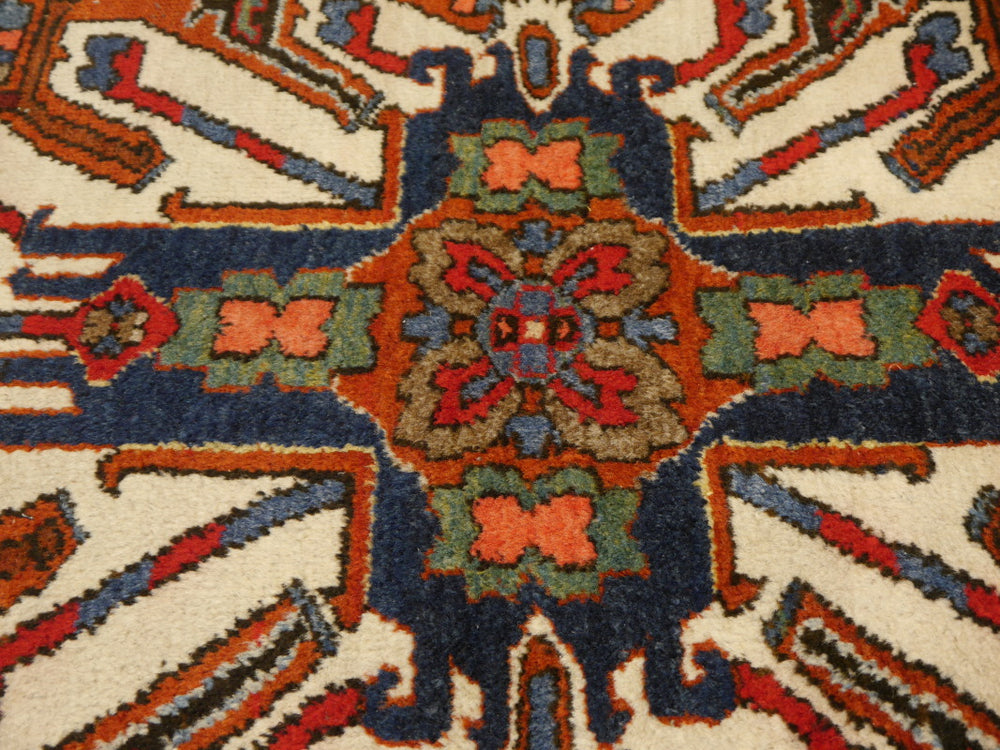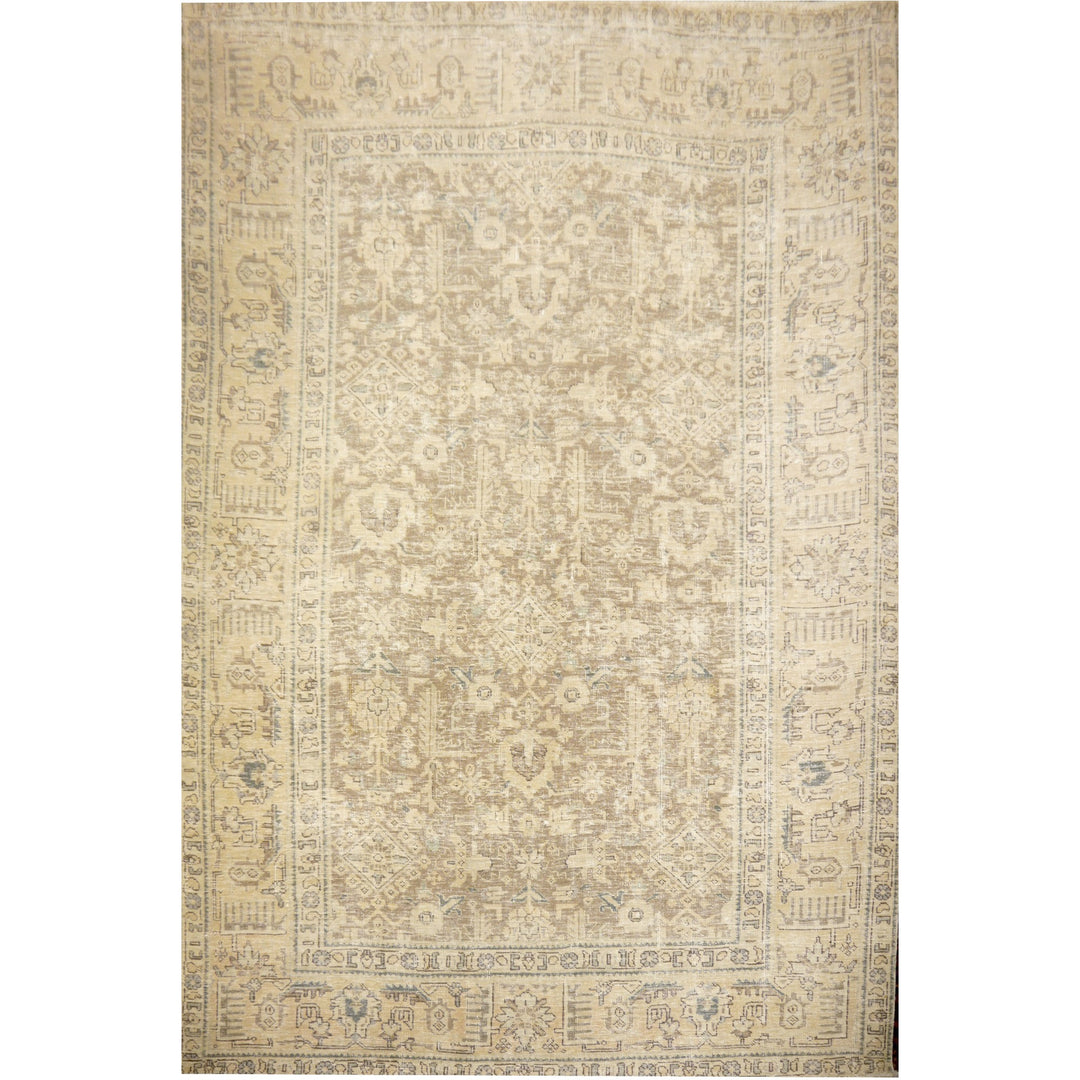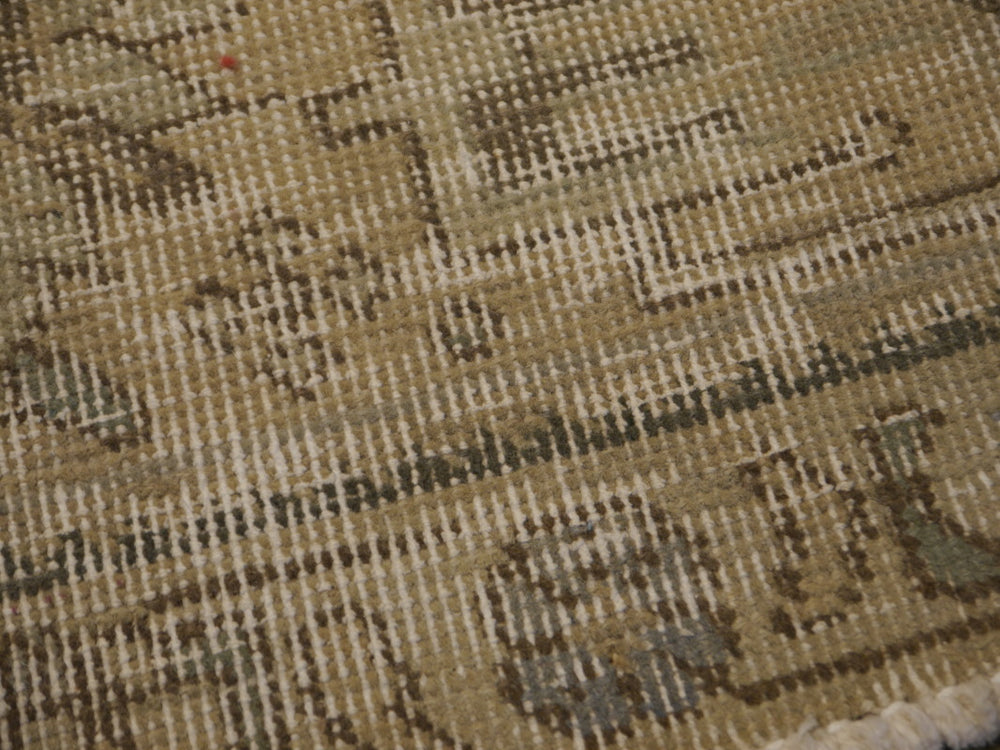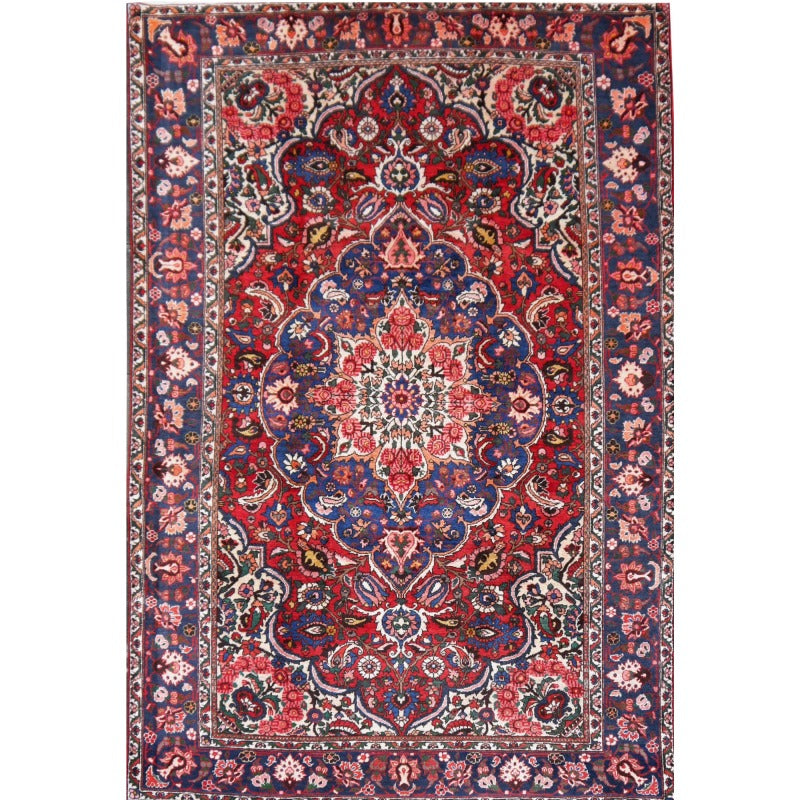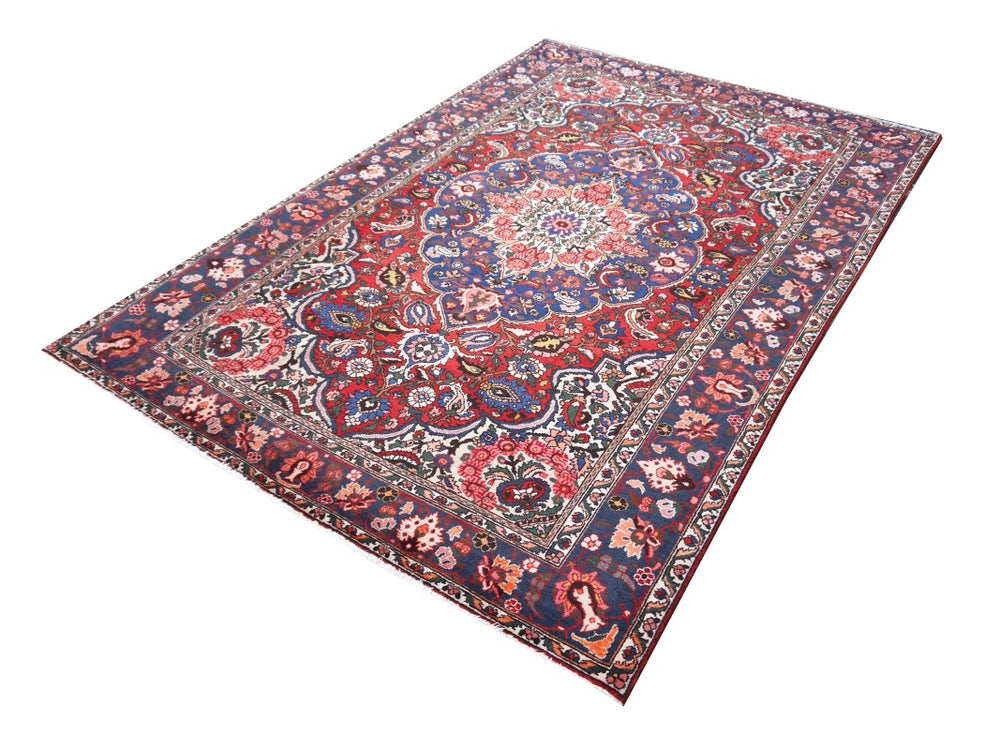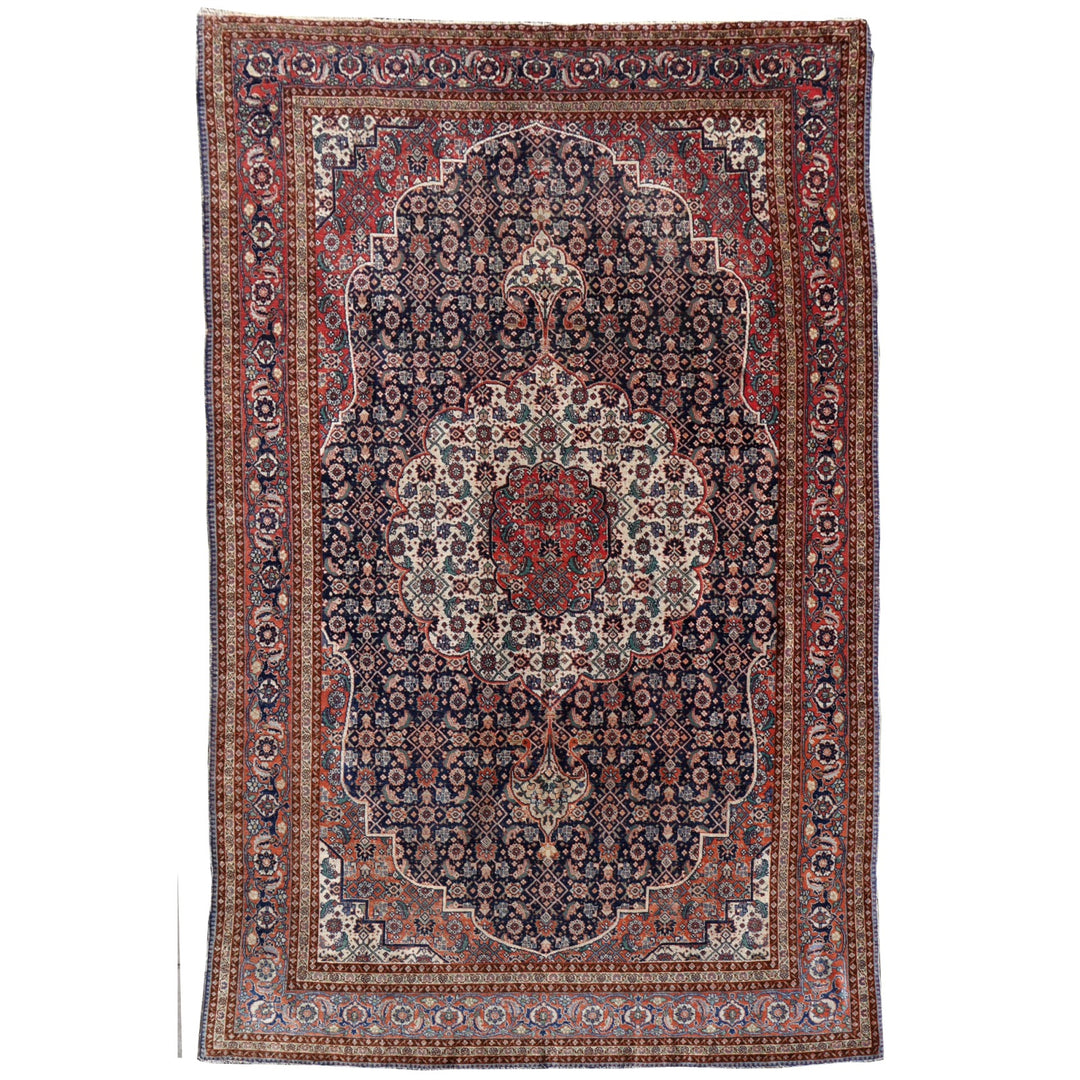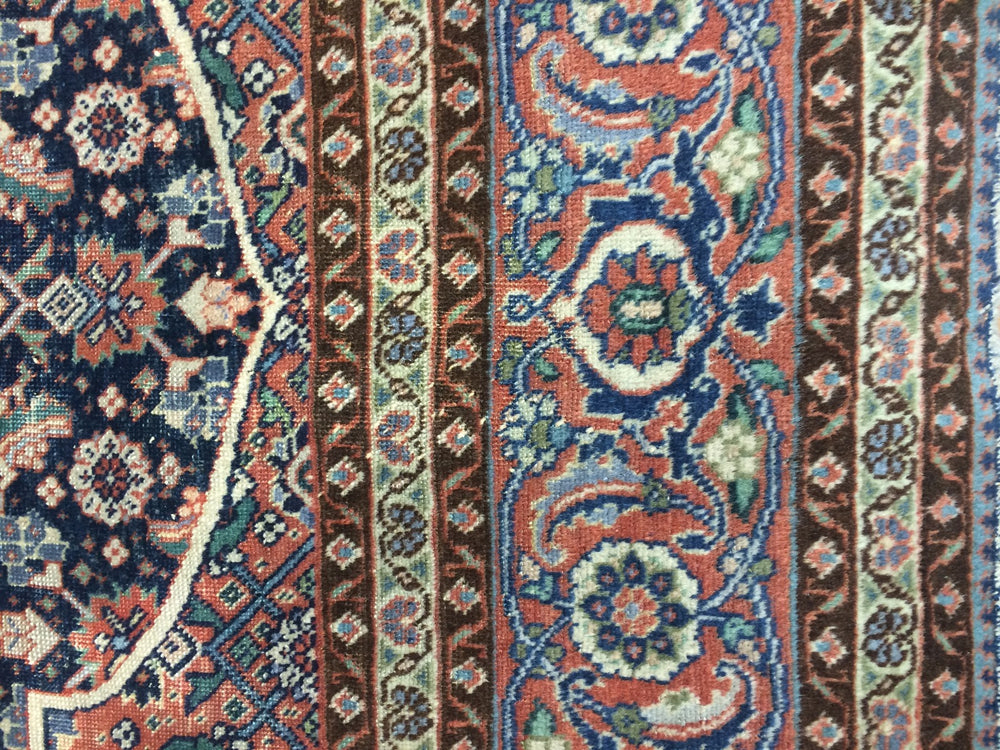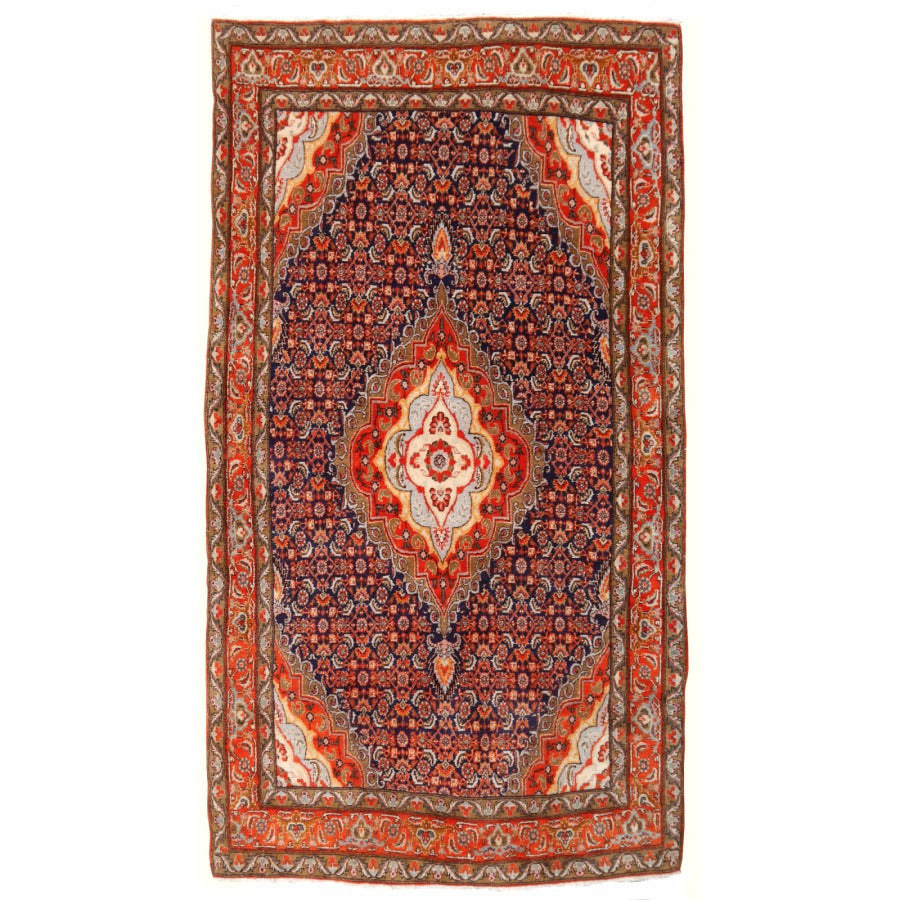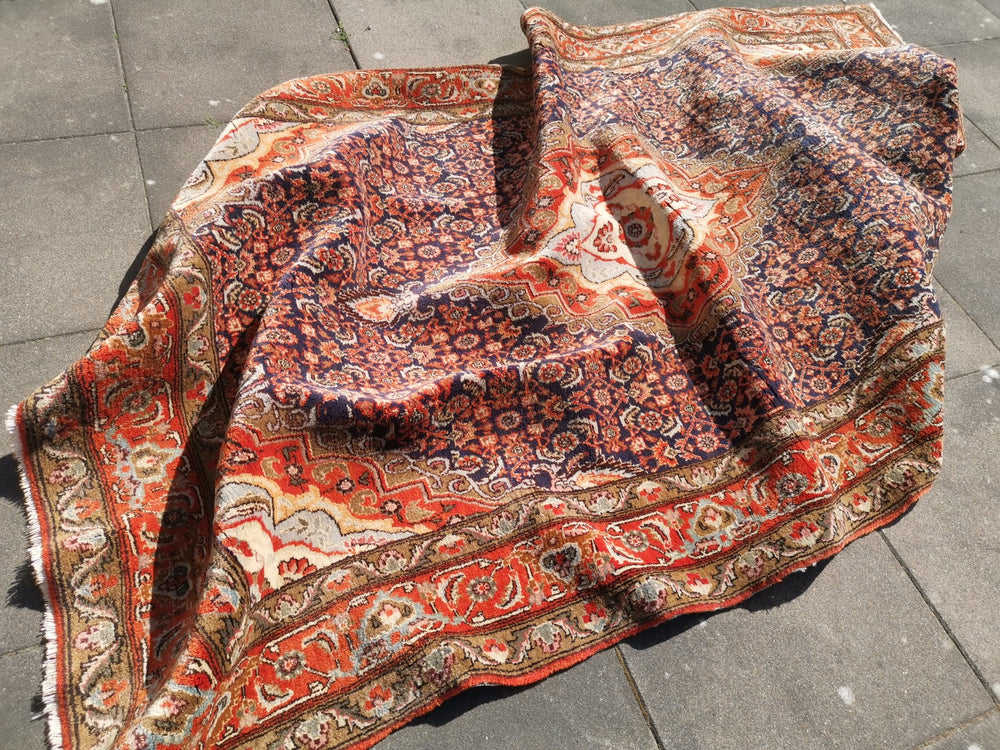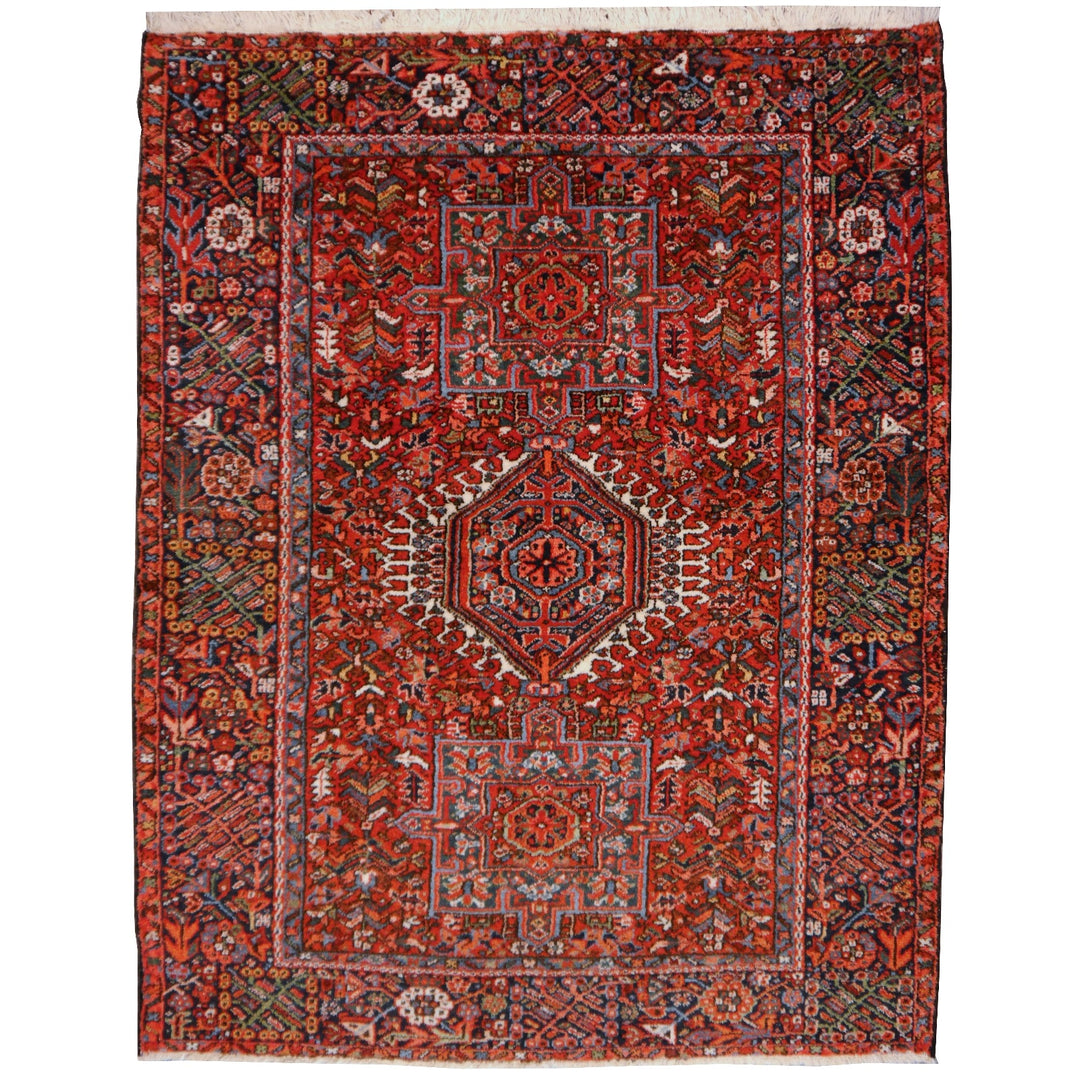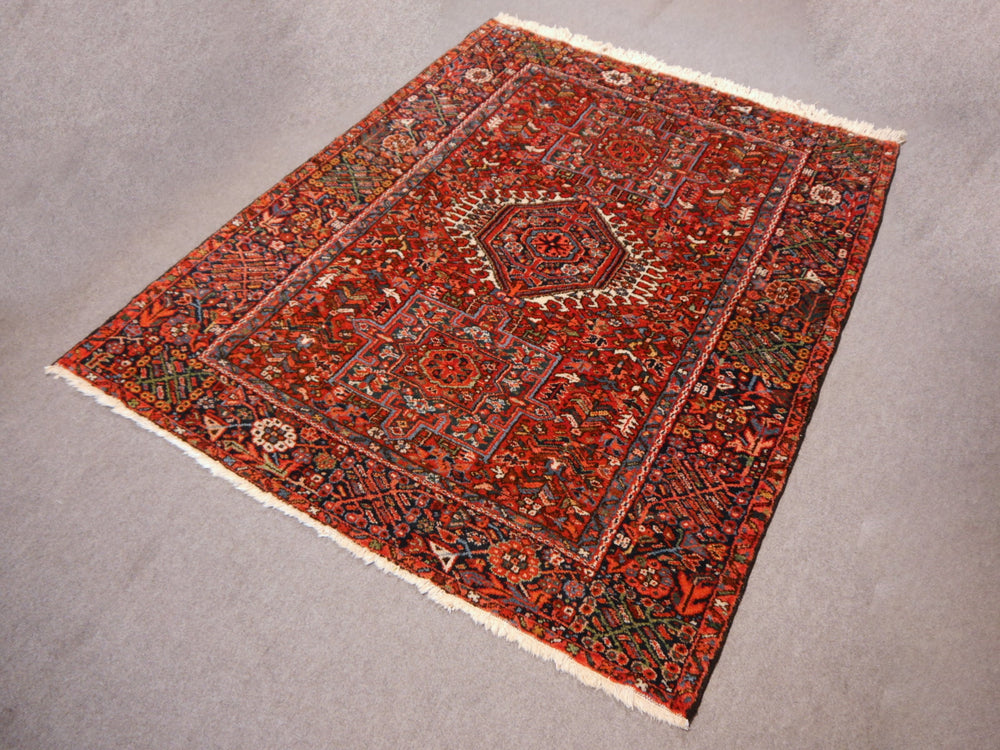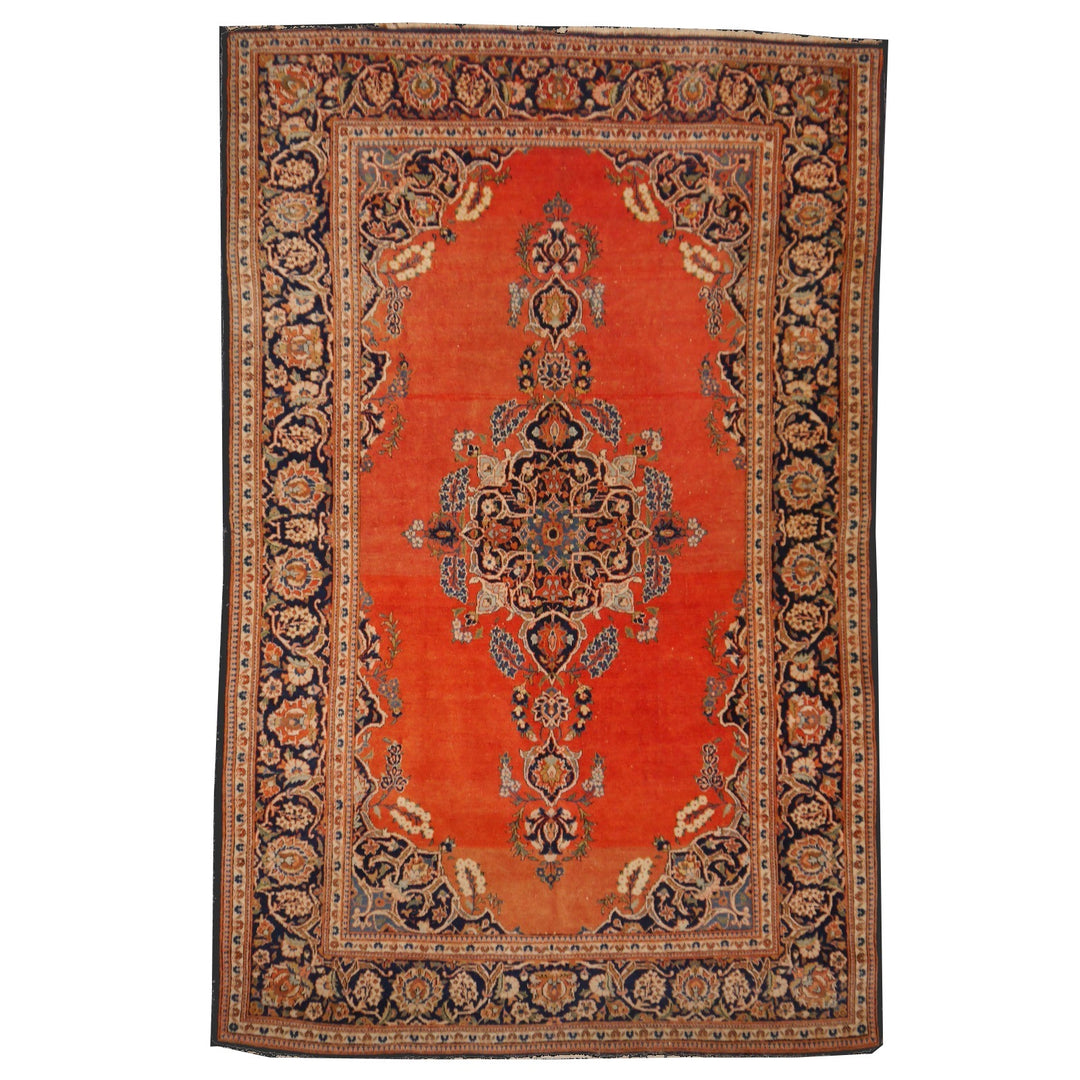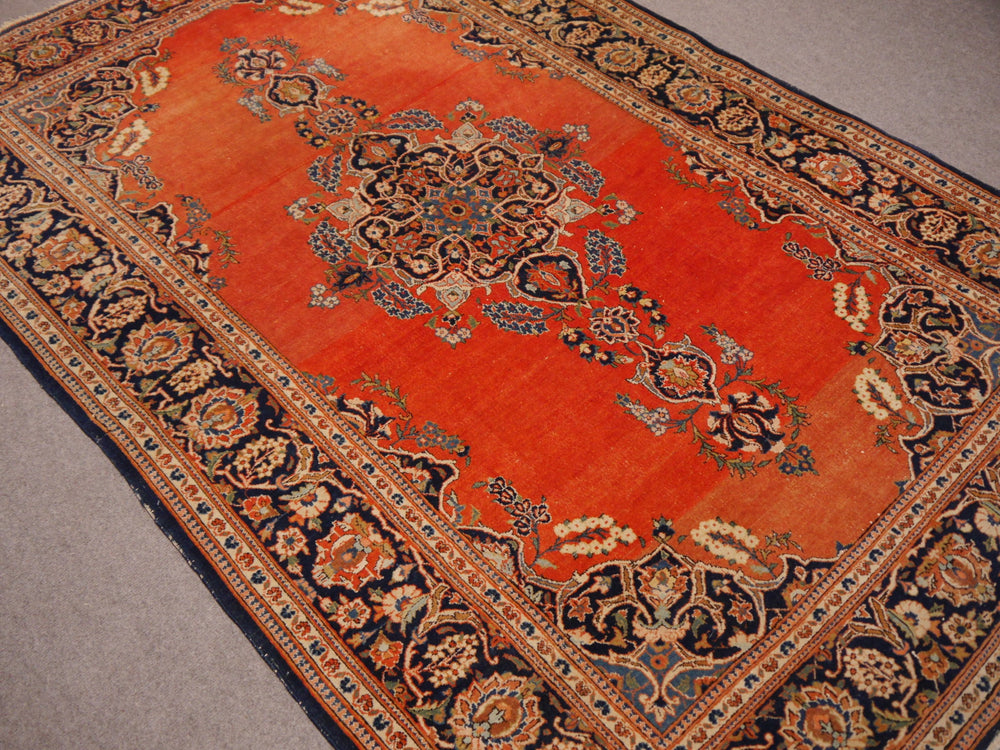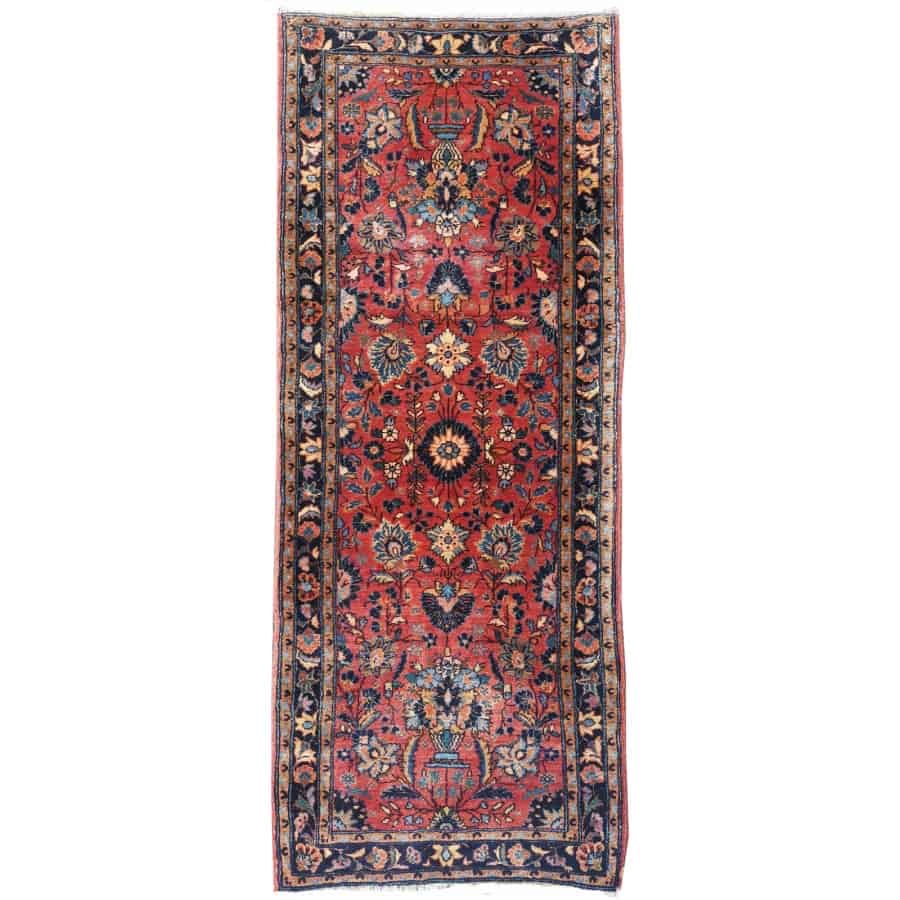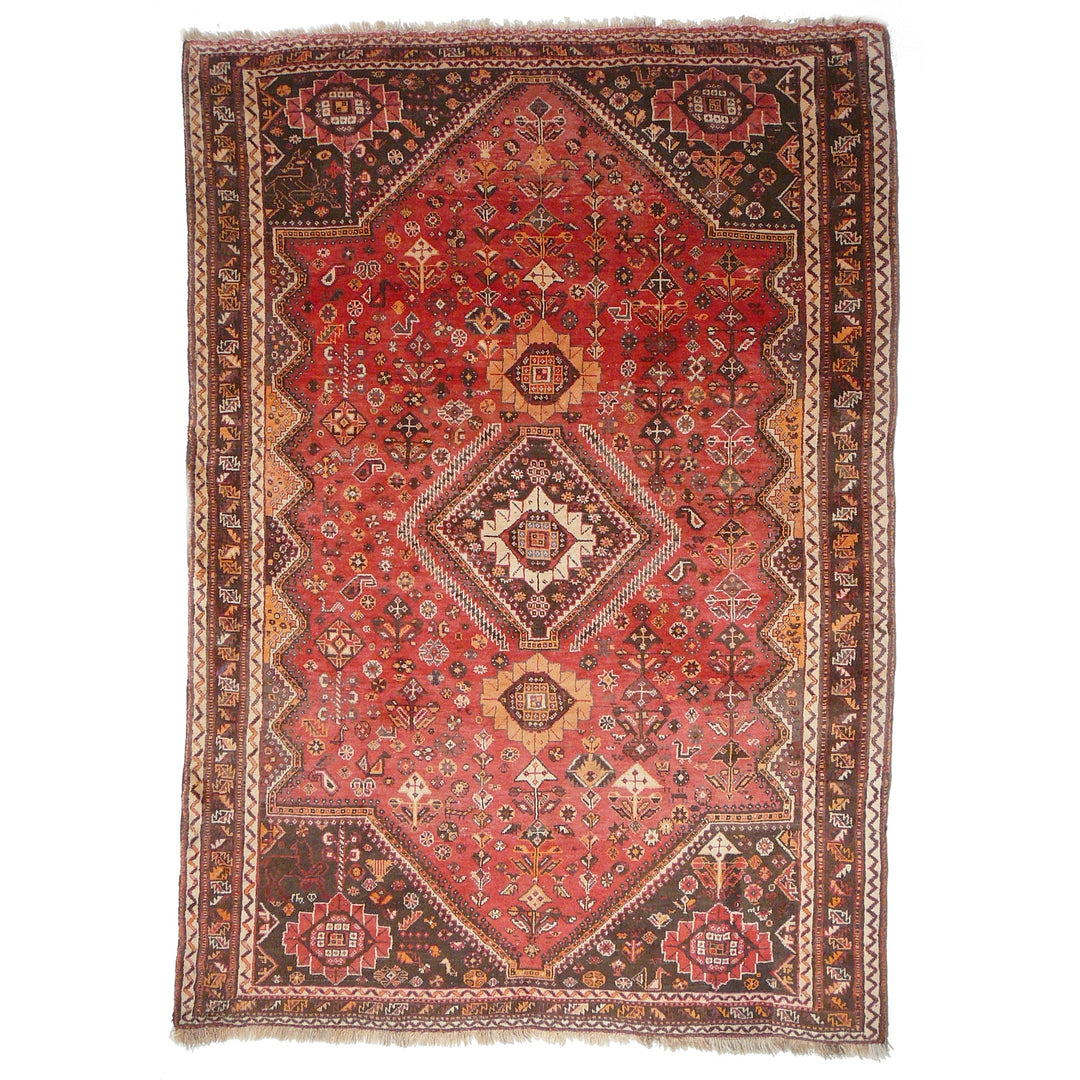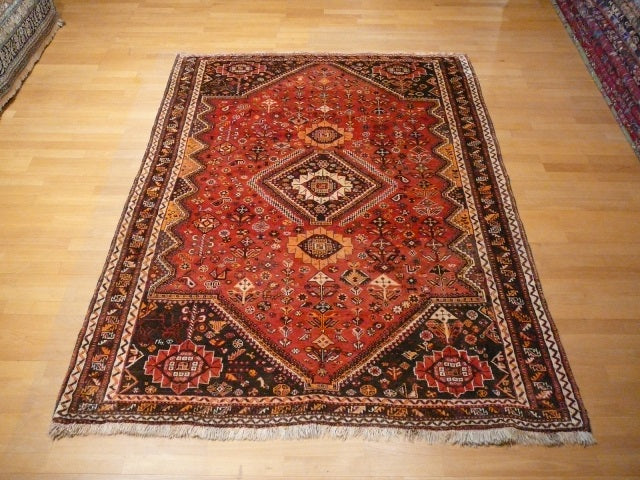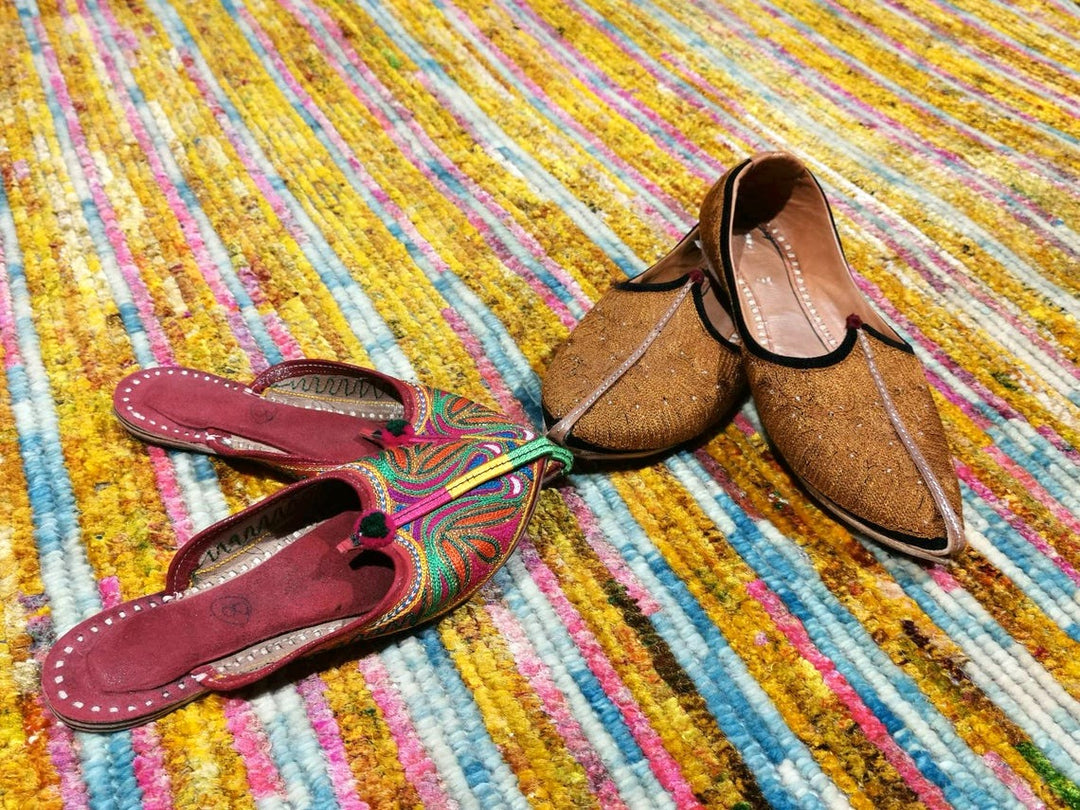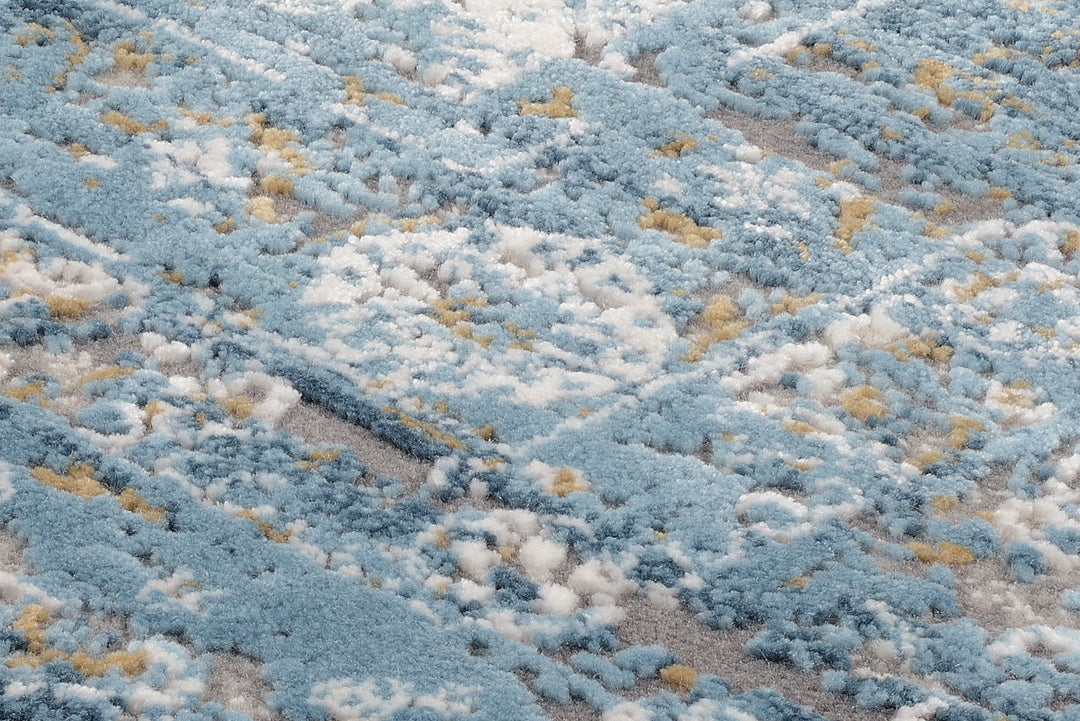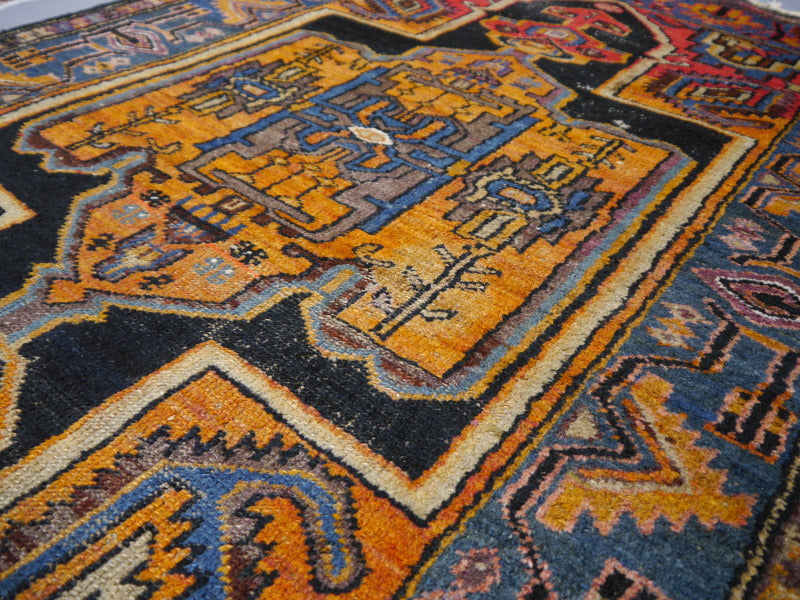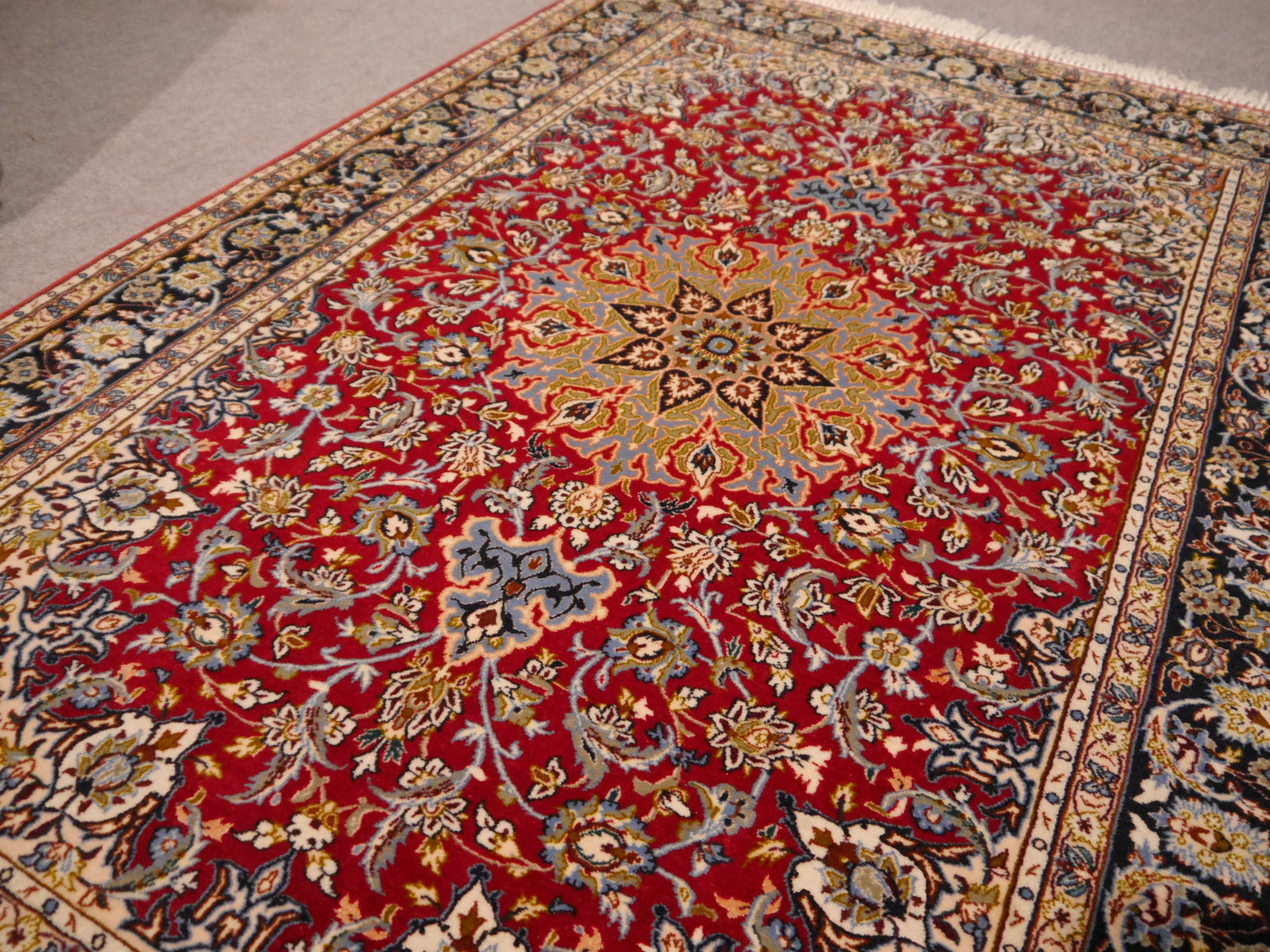
Perserteppiche
Perserteppiche - Teppiche von bester Qualität für alle Wohnbereiche und Design Stile.
Seit Jahrhunderten sind hochwertige Perserteppiche ein Zeichen von gehobener Wohnkultur und gutem Geschmack.
Echte Perserteppiche werden von Hand geknüpft und bestehen aus hochwertigen Naturprodukten wie Wolle und echter Seide.
Man unterscheidet bei Perserteppichen zwischen den meist floralen Manufaktur Teppichen, die in Städten oder Dörfern geknüpft werden, und graphisch - geometrisch gemusterten Teppichen, die üblicherweise von Nomaden geknüpft sind. Zu den Perserteppichen mit eher aufwendigen Mustern und feiner Knüpfung - oft aus feinster Wolle und Seide - zählen Ghom Perserteppiche, Isfahan Perserteppiche, Täbriz Perserteppiche, Kirman, Mashad, Kashan und Sarough / Sarouk. Teppiche mit geometrischen Motiven kommen aus Abadeh, Heriz, Shiraz, Hamadan, Malayer, Nahavand, Karaja und der Bachtiari Region. Persische Nomadenteppiche werden von den Stämmen der Belutch, Gashgai, Shahsavan, Lori / Luri (Loribaft), Bachtiari, Afshari, Turkmenen und Kurden hergestellt. Üblicherweise haben Perserteppiche ein Grundgewebe aus Baumwolle oder Seide, Nomadenteppiche aus Wolle. Die in das Grundgewebe eingeknüpfte Nutzschicht des Teppichs - der Flor - besteht bei feinen Teppichen aus Korkwolle (Erstschur des jungen Lamms) oder Schurwolle, manchmal kombiniert mit Seide. In der Stadt Ghom werden auch größere Mengen rein seidener Teppiche geknüpft.
Perserteppiche - handgeknüpfte Kunstwerke.Die Geschichte der Perserteppiche: Ein Erbe der Handwerkskunst Perserteppiche repräsentieren ein reiches Erbe der Handwerkskunst, das über Jahrhunderte gewachsen ist. Ihre Wurzeln reichen tief in die Geschichte des Iran, wo in Städten wie Kerman, Täbriz, Kashan, Isfahan und Ghom Meisterwerke aus Seide und Wolle entstehen. Jedes Stück erzählt eine eigene Geschichte, geprägt von den einzigartigen Mustern und Farben, die typisch für jede Region sind. Beispielsweise sind die Kelim der Gashgai Nomaden oft für ihre lebendige Farbpalette bekannt, während Nain-Teppiche durch ihre zarten Designs und helle Farben bestechen. Perserteppiche bieten nicht nur einen ästhetischen Wert, sondern sind auch kulturelle Zeugnisse, die die Traditionen und Lebensweisen vergangener Zeiten reflektieren. Vintage-Teppiche bringen nostalgischen Charme in moderne Wohnräume und verleihen diesen eine besondere Note durch die blassen Farben. Die Kombination aus meisterlicher Handwerkskunst und zeitlosen Designs macht jede Teppichwahl zu einem bewussten Statement in der Inneneinrichtung. Ein Perserteppich ist somit mehr als nur ein Bodenbelag; er ist ein Kunstwerk, das Generationen überdauert.Die Vielfalt der Designs und Muster in PerserteppichenDie Vielfalt der Designs und Muster in Perserteppichen ist unvergleichlich und zieht Liebhaber aus aller Welt in ihren Bann. Jedes Exemplar, sei es ein Nomadenteppich, Dorfteppich oder ein Meisterwerk aus einer städtischen Manufaktur, erzählt eine eigene Geschichte durch kunstvolle Kompositionen und lebendige Farben. Die teils komplexen Muster, wie sie in feinen Teppichen oder den traditionellen Kelims zu finden sind, spiegeln die kulturelle Tiefe des Iran wider. Perserteppiche kombinieren Jahrhunderte alte Handwerkskunst mit modernen ästhetischen Ansprüchen, wodurch sie sowohl als Vintage-Schätze als auch als stilvolle Akzente in zeitgenössischen Räumen fungieren können. Die Verwendung von edelen Materialien wie Seide verleiht den Teppichen nicht nur einen besonderen Glanz, sondern macht sie auch zu einem wertvollen Teil jeder Inneneinrichtung. Das Zusammenspiel der Farben, von intensiven Rottönen bis hin zu sanften Blautönen, garantiert, dass jeder Teppich sowohl als Blickfang als auch als harmonisches Element im Raum fungiert und seine Besitzer über Generationen hinweg begeistert.Materialien und Techniken: Was Perserteppiche so besonders machtDie außergewöhnliche Qualität von Perserteppichen resultiert aus der Verwendung erstklassiger Materialien und traditioneller Techniken, die über Generationen weitergegeben wurden. Besonders geschätzt werden Teppiche, die mit handversponnener Wolle und pflanzlichen Farbesotffen hergestellt werden. Diese Materialien sind berühmt für ihre hohe Qualität und die feine Verarbeitung. Seide und Wolle sind die bevorzugten Materialien, die nicht nur eine beeindruckende Textur bieten, sondern auch die lebendigen Farben der Teppiche hervorheben. Ein Kelim etwa zeigt sich als flachgewebter Teppich mit geometrischen Mustern, während ein Perserteppich mit seinen opulenten Motiven Geschichten erzählt. Die Färbetechniken, häufig auf pflanzlicher Basis, verleihen den Teppichen eine zeitlose Ästhetik und eine unverwechselbare Farbbrillanz. Vintage-Teppiche aus Hamedan oder anderen traditionellen Herstellungsgebieten sind nicht nur Einrichtungsgegenstände, sondern Zeugnisse der persischen Kultur. Wenn Sie einen solchen Teppich in Ihren Warenkorb legen, erwerben Sie ein Stück lebendige Geschichte und Kunstfertigkeit.Die Bedeutung von Farben in PerserteppichenFarben spielen eine zentrale Rolle in der Faszination von Perserteppichen, da sie nicht nur ästhetische Aspekte betonen, sondern auch tiefere kulturelle Bedeutungen transportieren. Die lebendigen Farbtöne in Teppichen aus Regionen wie Isfahan, Ghom oder Nain spiegeln oft die Natur und die Traditionen des Iran wider. Helle Rottöne, kühle Blautöne und sanfte Erdtöne harmonieren in kunstvollen Mustern und schaffen eine einzigartige visuelle Sprache. Die Kelims, die flachgewebten Teppiche, zeigen eine andere Farbstruktur, die oft geometrische Muster hervorhebt und ein modernes Flair vermittelt. Vintage-Perserteppiche aus Hamedan oder traditionellere Werke aus Seide bieten eine Vielfalt an Farbnuancen, die je nach Lichteinfall unterschiedliche Emotionen hervorrufen können. Diese geschickte Verwendung von Farben verleiht jedem Perserteppich seinen eigenen Charakter und macht ihn zu einem geschätzten Kunstwerk. Die Verbindung von Farbpsychologie und kulturellem Erbe macht diese Teppiche zu wahren Schätzen der Inneneinrichtung.Pflege und Werterhalt von PerserteppichenDie richtige Pflege von Perserteppichen ist maßgeblich für ihren langfristigen Werterhalt und ihre Schönheit. Regelmäßiges Staubsaugen entfernt Schmutz und Staub, während spezielle Teppichreiniger dabei helfen können, Flecken zu beseitigen, ohne die zarten Farben und Muster zu beeinträchtigen. Besonders wertvolle Exemplare verlangen eine behutsame Handhabung; hier empfiehlt sich die professionelle Reinigung durch Experten. Bei der Lagerung sollten Sie darauf achten, den Teppich gerollt und nicht gefaltet zu lagern, um unschöne Knicke zu vermeiden. Teppiche aus Seide, wie die exquisiten Modelle aus Ghom, verdienen zusätzliche Aufmerksamkeit, da sie empfindlicher sind als ihre robusteren Pendants. Zudem ist der Schutz vor direkter Sonneneinstrahlung wichtig, um ein Ausbleichen der Farben zu verhindern. Vintage-Teppiche und moderne Kelims können ebenfalls von einer sorgsamen Pflege profitieren, sodass sie auch in Zukunft in Ihrem Warenkorb begeistern und Ihre Räume verschönern.Die Rolle von Perserteppichen in der modernen InneneinrichtungPerserteppiche übernehmen in der modernen Inneneinrichtung eine faszinierende Rolle, indem sie traditionelle Handwerkskunst mit zeitgemäßem Design vereinen. Diese Teppiche, wie die exquisite Seide aus Isfahan oder die robusten Kelims, bringen nicht nur Wärme und Farbe in Ihre Räume, sondern erzählen auch Geschichten über ihre Herkunft. Dabei sind Muster aus Ghom und Nain besonders beliebt, da sie Eleganz und Feinheit ausstrahlen. Die Vielfalt der Designs und Farben ermöglicht es, sowohl minimalistische als auch opulente Einrichtungsstile zu ergänzen. Vintage-Perserteppiche erfreuen sich großer Beliebtheit und verleihen einem Raum Charakter. Die Kombination aus modernen Möbeln und den kunstvollen Teppichen schafft einen harmonischen Kontrast, der das Ambiente maßgeblich beeinflusst. Zudem sind Perserteppiche nicht nur optische Highlights, sondern auch langlebige Wertanlagen, die durch richtige Pflege ihren Platz im Herzen jedes Raumes finden. In einem gut gestalteten Raum können diese zeitlosen Schätze dazu beitragen, ein Gefühl von Geborgenheit und Stil zu erzeugen.Perserteppiche als zeitlose Schätze der Kultur und KunstPerserteppiche sind weit mehr als bloße Bodenbeläge; sie sind Ausdruck kultureller Identität und handwerklicher Meisterleistung. Die Vielfalt der Farben und Muster zeugt von der reichen Geschichte iranischer Teppichknüpfkunst. Regionen wie Isfahan und Nain sind berühmt für ihre exquisiten Designs, während Ghom für seine edlen Seidenteppiche bekannt ist. Die unterschiedlichen Strukturen, von den opulenten Mustern der klassischen Perserteppiche bis hin zu den schlichten, aber eleganten Kelims, bieten eine beeindruckende Bandbreite an Stilen, die sich harmonisch in moderne Inneneinrichtungen integrieren lassen. Vintage-Teppiche erzählen Geschichten und bringen Charakter in jeden Raum. Die sorgfältige Auswahl der Materialien, sei es Wolle oder Seide, und die Techniken der Knüpfung tragen zur Langlebigkeit und zum Wert dieser Schätze bei. In einer Welt, die oft auf das Überflüssige fokussiert ist, bleiben Perserteppiche zeitlose Symbole für Kunst und Kultur, die Generationen überdauern und sowohl ästhetischen als auch emotionalen Wert besitzen.
